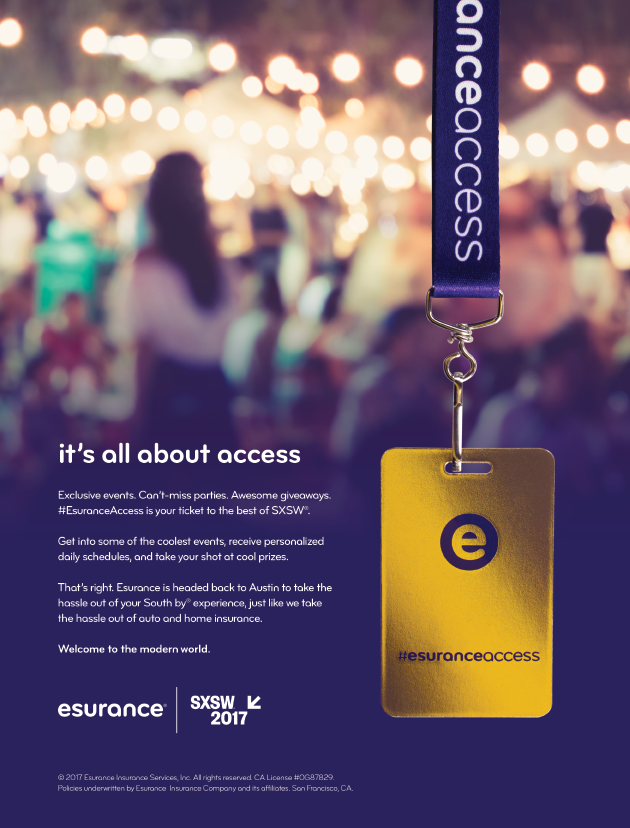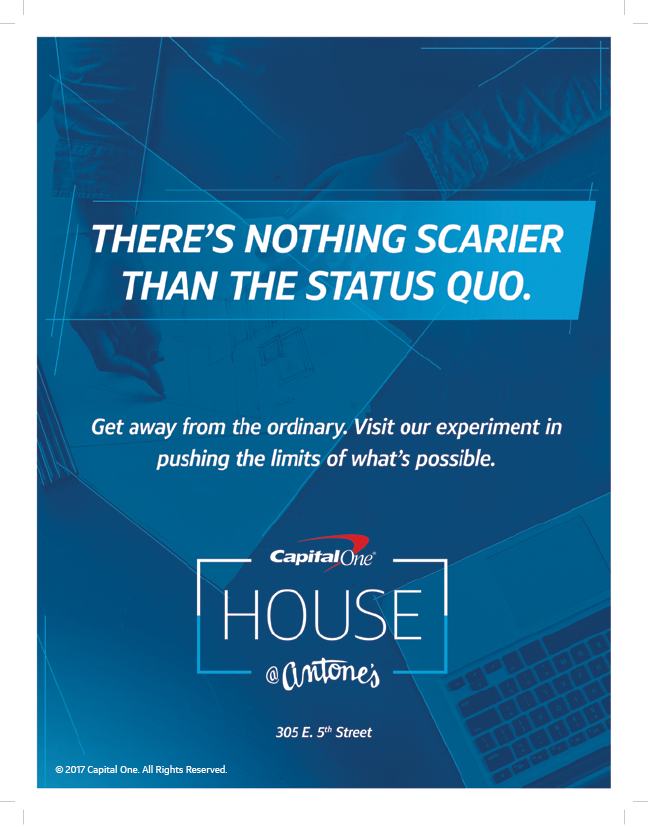

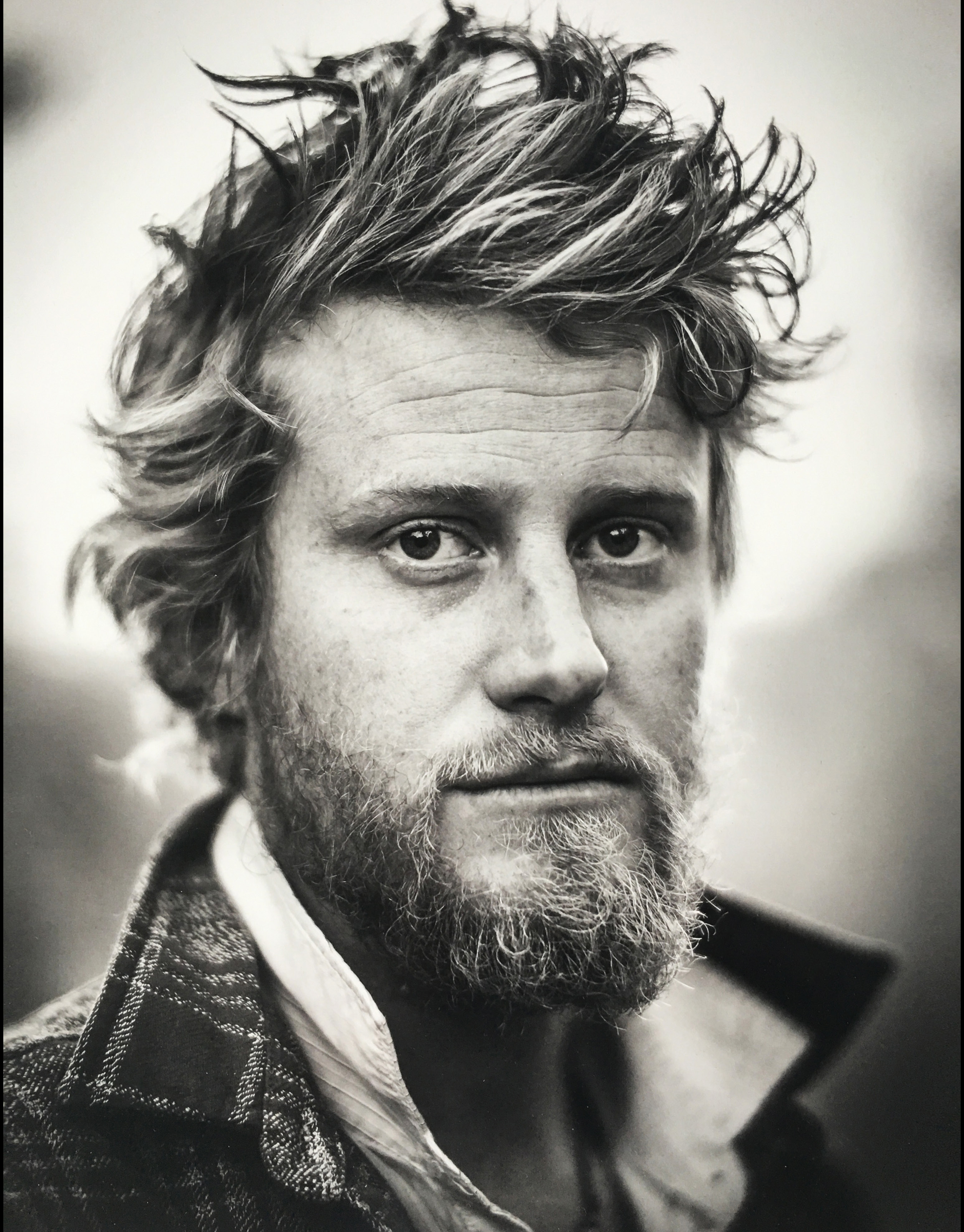
February 2017


Cory
Richards
Extreme Challenges
Yield Astonishing Images

Fawzia Mirza on Inclusion, Identity
& Cross-Cultural Laughs
Freak Out with Nile Rodgers!!!
Chic Hitmaker Shares His Secrets
Gareth Edwards Comes Full-Circle

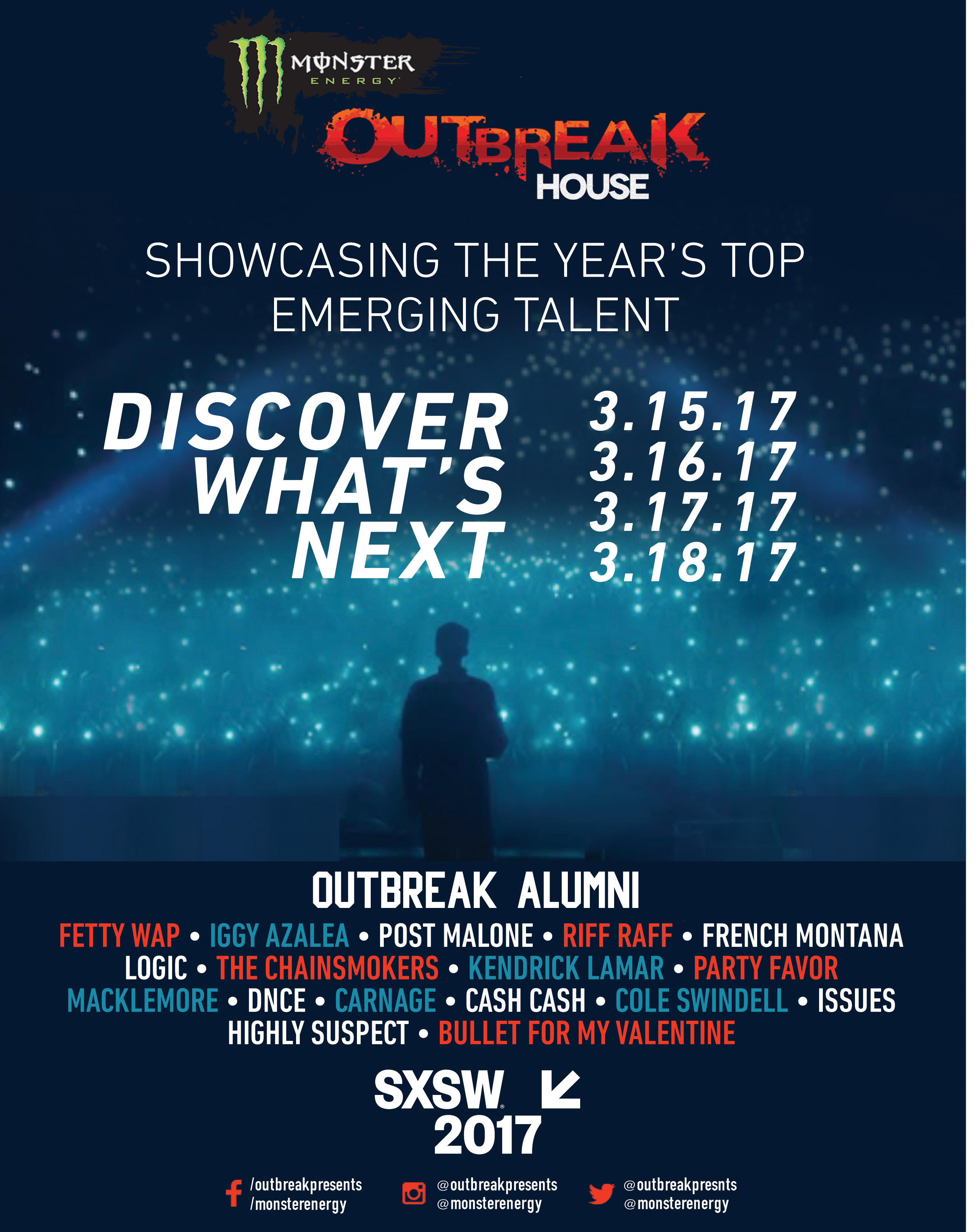
SXSWORLD | February 2017 | SXSW.com

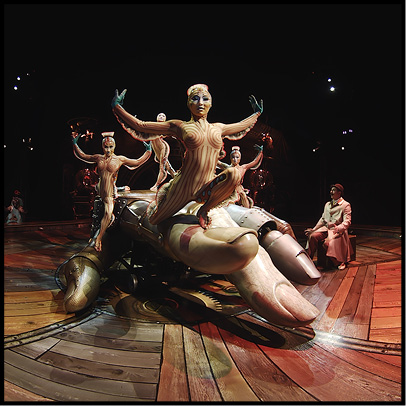
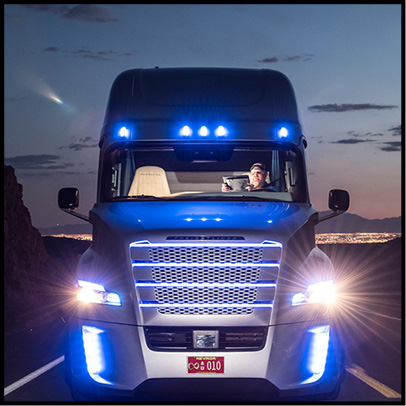
Photo Courtesy of
Daimler AG
Photo Courtesy of
Félix & Paul Studios

On the Cover: Cory Richards, photo by Mark Stone
Volume 11, Issue 2
Publishers
Roland Swenson, Nick Barbaro, Louis Black
Editor
Andy Smith
Art Director
Eleanor B. Rosaire Pousson
Advertising
Katharyn Howe, Una Johnston,
Katie King, Mirko Whitfield,
SXSW Contributors
Jody Arlington, Justin Bankston, Amy Braband, Michael Brown, Rory Burbeck, Soledad Cantu, Hugh Forrest, Nick Hammond, Shelley Hiam, Zach Horn, Blake Kammerdiener, Jim Kolmar, John Krause, April Litz, Emily Lively, Andrew McNeill, Jamie Miller, Leeann Pendley, Janet Pierson, Cathy Ricks, Mai Schotz, Amy Wanke, Catlin Whitington, Luann Williams
SXSW 2017 Logo Design
Foxtrot
Contributors
Claudia Alarcón, Shermakaye Bass, Jason Cohen, Linda Laban, Rich Malley, David Menconi, Neil Miller, Patrick Nichols, Doyin Oyeniyi, René Pinnell, Rob Preliasco, Susan Elizabeth Shepard, Jenny Smith, Dan Solomon
SXSW Headquarters
PO Box 685289, Austin TX 78768 US
Tel 512/467-7979, Fax 512/451-0754
Email: sxsw@sxsw.com
SXSW Sales & Exhibitions
MUSIC: Stacie Cline,
FILM: Katharyn Howe
INTERACTIVE: Wendy Cummings, Katie King,
GAMING: Justin Burnham,
SALES: sxsw.com/sales
SPONSORSHIPS: Scott McNearney,
SXSW Music, U.K. & Ireland
Una Johnston, 9 The Coach Yard,
Cloughjordan, Co. Tipperary IRELAND
Tel/Fax: +353 505 42570
SXSW Europe & Int'l. Business Development
Mirko Whitfield, Blaihofstrasse 4, #10, 72074
Tuebingen-Pfrondorf, GERMANY
SXSW Japan
Hiroshi Asada, #406 2-3-21 Kabukicho
Shinjuku-ku Tokyo 160-0021
SXSW Australia, New Zealand & Hawaii
Phil Tripp, 60 King St., Coffs Harbour
NSW 2450 Australia, +61 (2) 6652 6675
SXSW Brazil
Tracy Mann
SXSW Central, South America & Caribbean
Peter Lewis
SXSWORLD (ISSN 1935-1496) is published by SXSW, LLC. five times per year in May, November, February and twice in March at 400 Bowie St, Austin, TX 78703. © 2017 SXSW, LLC. All Rights Reserved. Periodicals postage paid in Austin, TX and at additional mailing offices. “SXSW” and “South By Southwest” are registered trademarks owned by SXSW, LLC. Subscriptions are provided annually with paid registrations to the SXSW Conferences. Email for inquiries
POSTMASTER: Send address changes to
SXSWORLD PO Box 685289, Austin TX 78768
IN EVERY ISSUE
Social media has come of age at SXSW
Updates from the SXSW family of events
A Look Back: President Barack Obama
Climate change was a key topic at South By South Lawn
Features
Photographer pushes both geographic and human endurance limits
Rogue One director on the screening that changed everything
Famed producer and Chic founder has many stories to tell
Social scientist bringing college cost debate to SXSWedu
Emerging comedian/actor to show SXSW her Signature Move
Car company execs preparing for mobility’s game-changer
Bootstrapping entrepreneurs pursue offline opportunities
Acclaimed studio leading the way to VR’s promising future
Internet trailblazer wants to keep web power with the people
Sites and users viewing online news with new skepticism
Beats 1 Radio DJ brings the soundtrack to streaming’s global village
What’s next as developers embrace music as key to game design?
Find out what’s happening and how to get around Austin in March
Photo by Jonathan Olley
Contents
Gareth Edwards
Félix & Paul
Automated Vehicles

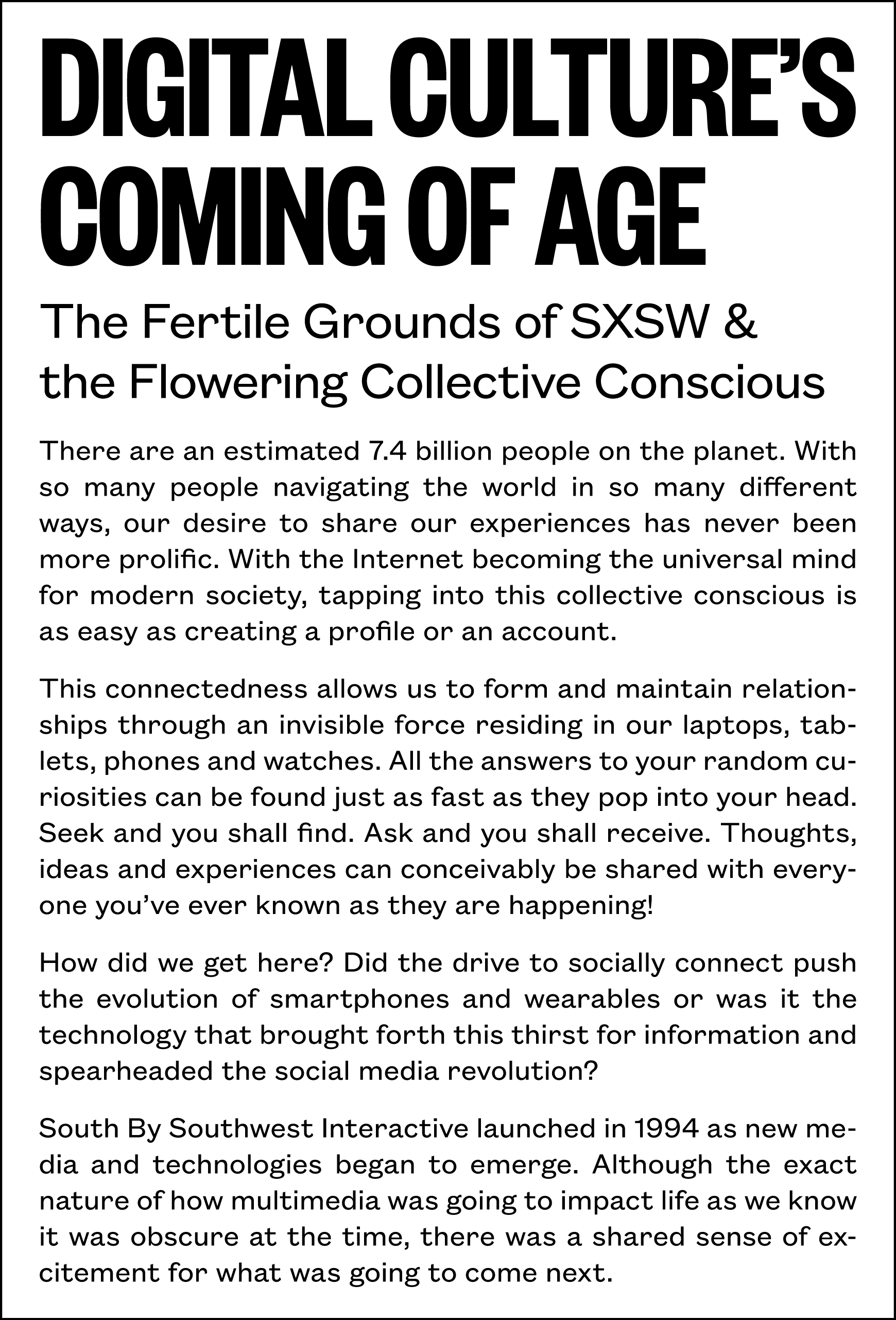
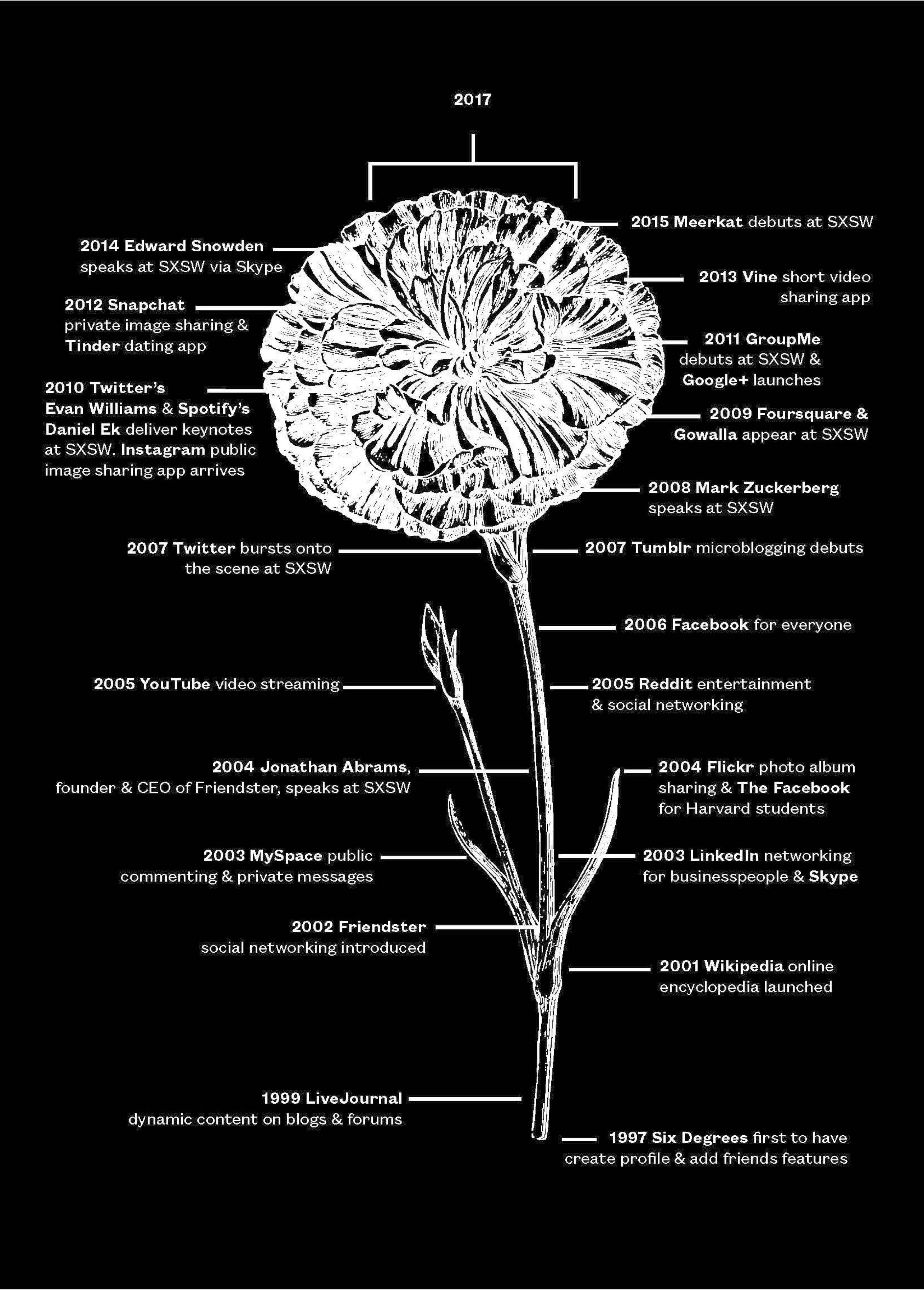
New & Noteworthy
What’s Happening Now & Exciting Things to Come!
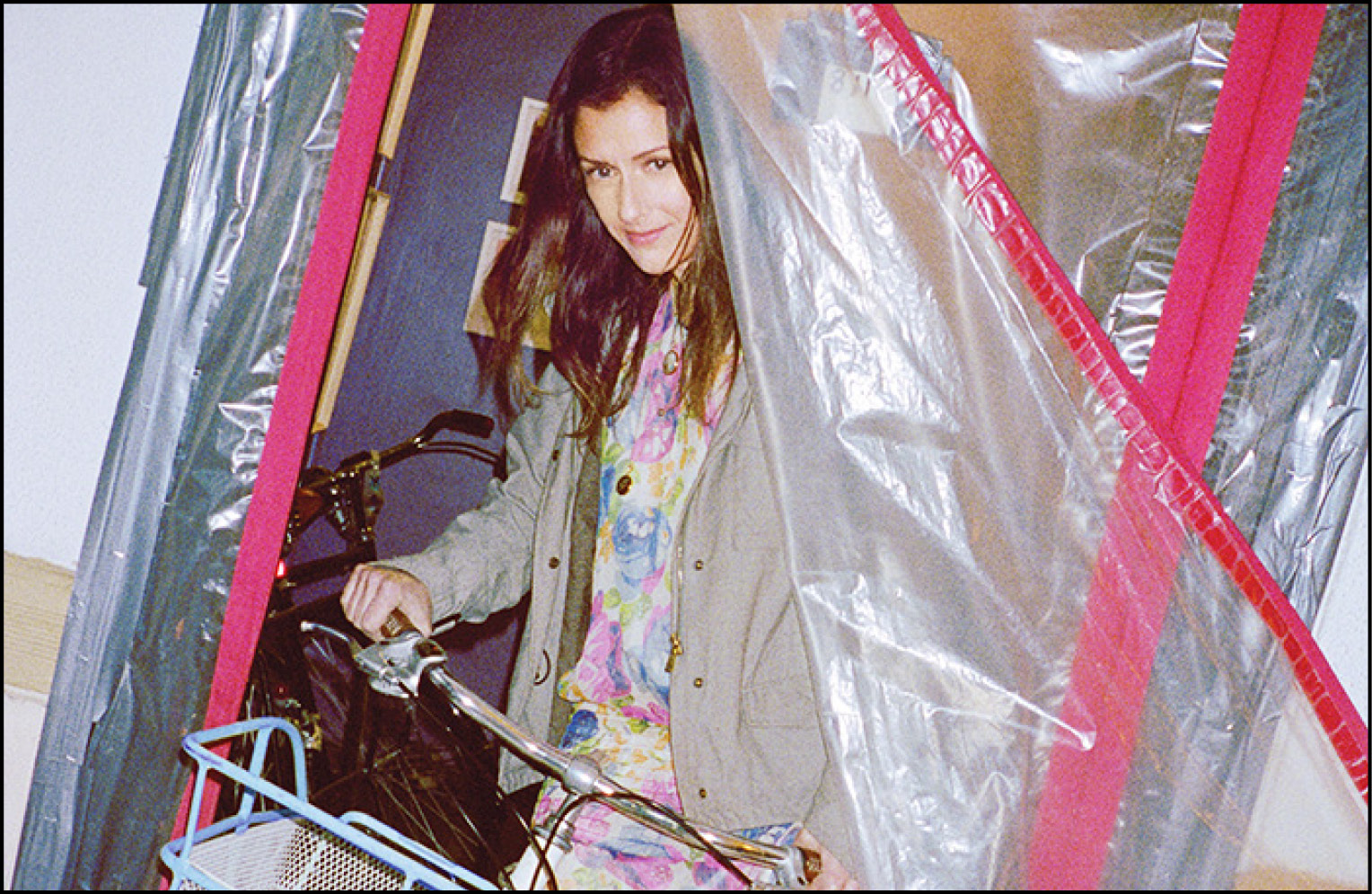
Sally Singer, photo by Cass Bird
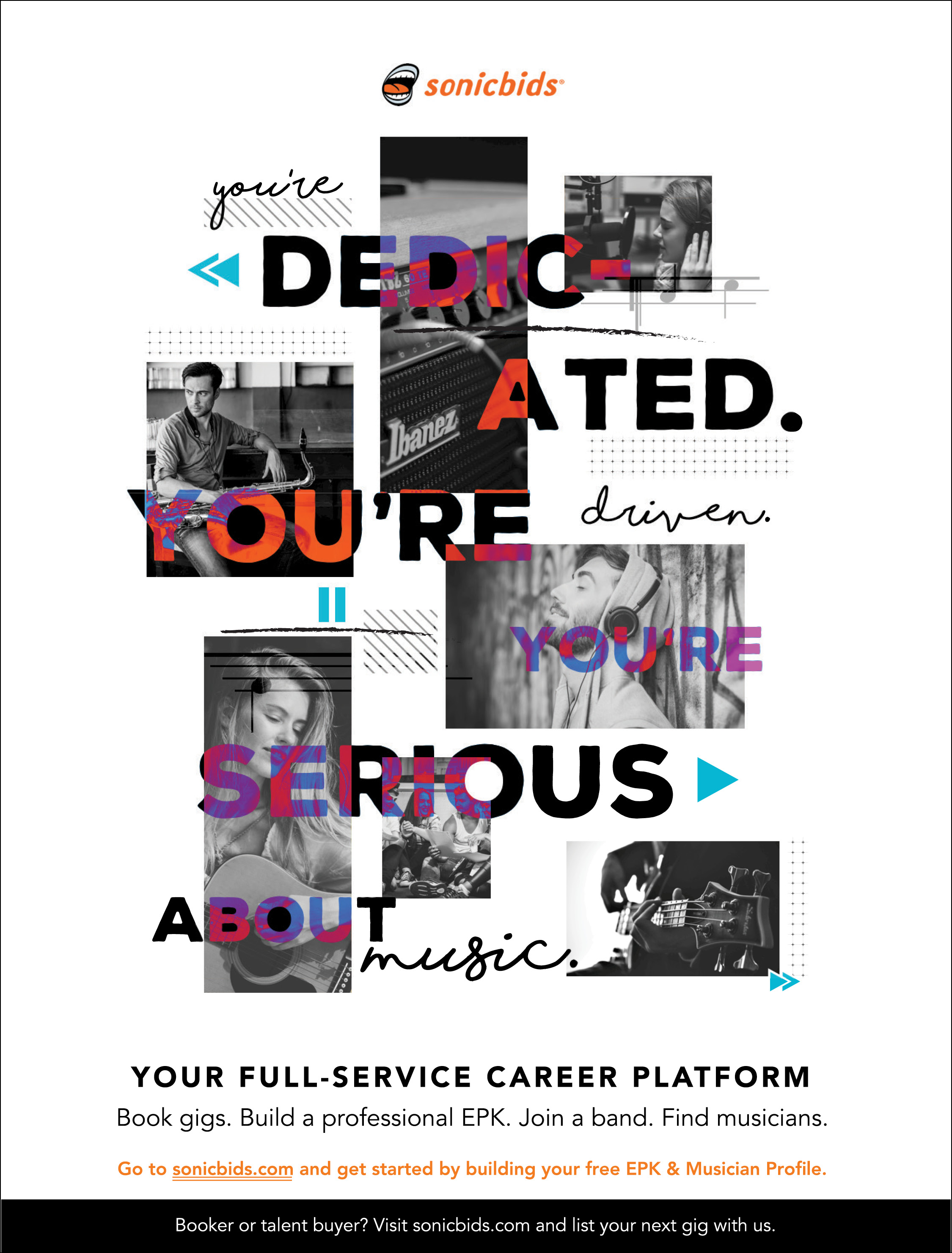
SXSW Style: Back in Fashion
With a growing presence from the fashion and tech worlds at SXSW Interactive, SXSW Style offers a platform for creatives in these communities to converge, learn and innovate while delving into an array of topics ranging from the future of retail, wearable technology, sustainable fashion and more. 2017’s speakers include Marc Jacobs and Vogue Creative Digital Director, Sally Singer.
“Tech Under Trump” Programming
In the wake of the November 8 election results, special “Tech Under Trump” programming has been added to the SXSW schedule on Wednesday, March 15, and Thursday, March 16. The goal of this programming is both to inform attendees about how the tech and startup ecosystems will likely change over the next four years, as well as to inspire registrants on how to bridge the many gaps and divisions that the election has revealed. Confirmed speakers include Patrick Curry (VR Austin), Anil Dash (Fog Creek), Melinda Epler (Change Catalyst), Ashish Gadnis (banquapp.com), Jeff Howe (author of Whiplash), Eli Pariser (Upworthy), Dave Pell (NextDraft), Erin Schrode (journalist and activist), Wayne Sutton (Change Catalyst), and Molly Wood (Marketplace). More names and session titles are still to be announced. The “Tech Under Trump” programming will occur as part of the new Tech Industry Track (with expanded dates, running March 9-16). Other sessions related to various aspects of the new administration will occur in Government (March 9-13), Journalism (March 10-16), Social Impact (March 11-15) and Startup Village (March 9-16).
BBQ Crash Course
From 11am-2pm on Friday, March 10, come network with your fellow registrants at the 5th annual BBQ Crash Course at the Southbites lot (604 Driskill St), just one block southeast of the Austin Convention Center. Sample savory brisket, ribs, and other delights from Central Texas’ best barbecue spots and mingle with their expert pit-masters. The ticket includes a tray brimming with meats, sides, desserts and one drink. BBQ Crash Course tickets can be purchased as a registration add-on through the SXSW Shopping Cart, but hurry because this will sell out!
Social Media Lounge
Celebrates 10th Year
2017 will mark the 10th year that Brian Solis and Stephanie Agresta of TechSet have hosted their digital influencer lounge at the Austin Convention Center, bringing the best of technology and media to the SXSW community. Originally known as the Blogger Lounge, the installation has evolved over the years to become the Social Media Lounge with Comcast returning as this year’s sponsor. All registered festival attendees are welcome to stop by Room 19AB on the 4th Floor of the ACC to caffeinate, connect, relax and recharge.
Showcasing Artist Music Videos on YouTube
Some people are visual learners. We get it. That’s why we’ve created a 2017 SXSW Showcasing Artist Music Video playlist on YouTube! Visit youtube.com/sxsw to start watching videos from 2017 Showcasing Artists today.
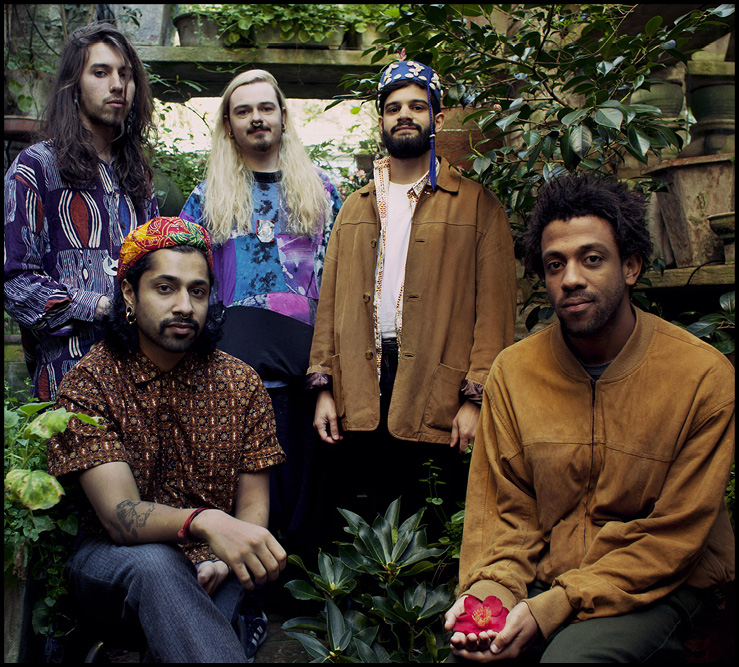
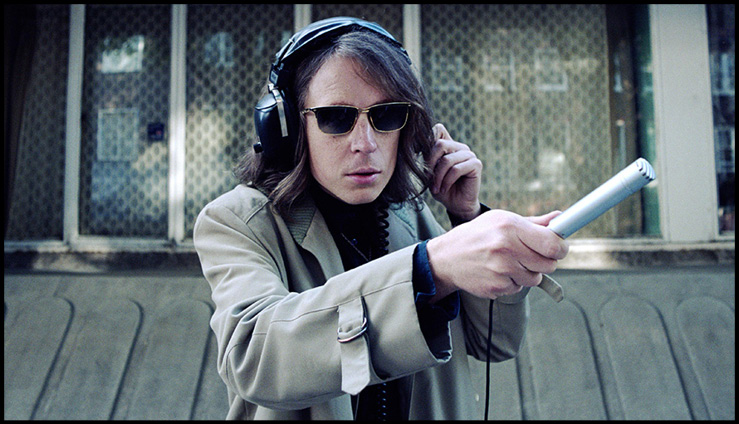
Flamingods, photo by Elle Hardwick
Joel Sarakula
Artist of the Day
We’re highlighting a different SXSW Showcasing Artist every weekday on our social media channels and website as we lead up to the 2017 event. Follow SXSW on Twitter, Facebook, and Instagram, or visit sxsw.com each day, for a small dose of what’s in store for the 2017 Music Festival.

ATX Startup Crawl
Happening from 5-10pm on March 13, the ATX Startup Crawl, powered by Capital Factory, is a celebration of innovation and technology where local startups are showcased through a pub crawl experience. Participants gather each year to travel through downtown Austin experiencing the best the city has to offer the startup community. It’s a fantastic visibility opportunity for Austin startups. Launch your product, practice your pitch, and recruit talent. Register by downloading the ATX Startup Crawl app (iOS & Android).
Visit the New Podcast Stage
Open to all badgeholders, the 2017 SXSW Podcast Stage will host up to 42 unique podcasts from varying genres, including comedy, gaming, music, film, technology, science, inspiration, culture, news and more. Stop by the Brazos Room of the JW Marriott and be a part of the live recording.
SXSWfm®
Nearly 2,000 Showcasing Artists will perform at SXSW 2017 by the time the last note is played. Our online radio channel SXSWfm® is here to help you sort through the plethora of acts and find your new favorites. To listen, you can visit sxswfm.com, download the mobile app, or follow the SXSWfm Mixcloud page.
500 HBCU Students
to Attend SXSW 2017
Opportunity Hub plans to send 500 students from Historically Black Colleges and Universities (HBCU) to SXSW 2017 as part of a larger initiative to increase opportunities in the tech industry for diverse, high-potential students. Currently, less than 2% of the tech industry is African-American or Latino, and HBCU students aim to change that by tapping into SXSW’s history of inspiration, education and creating the right connections. Additionally, Opportunity Hub will be host programming on Saturday, March 11, at the Omni Austin Hotel Downtown.
Terrence Malick’s New Film to Kick Off the
SXSW Film Festival, + Six More Titles Announced!
American Gods (World Premiere)
Director: David Slade, Screenwriters/Showrunners: Bryan Fuller, Michael Green
Adapted from Neil Gaiman’s award-winning novel, American Gods follows Shadow Moon (Ricky Whittle) and Mr. Wednesday (Ian McShane) in a magical world where a battle is brewing between the Old Gods and the New Gods.
The Melody of Dust (World Premiere)
Director: Viacom NEXT
A musical journey for the HTC Vive. Explore a mysterious world where every object contains a unique melody. Featuring original musical compositions by Hot Sugar, this experience brings you inside the tortured mind of a musician.
Residente (World Premiere)
Director: René Pérez Joglar
After taking a DNA test, Latin America’s most decorated artist – Rene Perez (AKA Residente), embarks on a global adventure, to trace the footsteps of his ancestors and record his latest album.
Signature Move (World Premiere)
Director: Jennifer Reeder, Screenwriters: Fawzia Mirza, Lisa Donato
A secret new romance with Alma forces Zaynab to confront her complicated relationship with her recently widowed mother. In this coming-of-age Muslim melodrama, Zaynab copes by taking up Lucha-style wrestling.
Small Town Crime (World Premiere)
Directors/Screenwriters: Eshom Nelms, Ian Nelms
Ex-cop, Mike Kendall, finds the body of a young woman and, in an act of self-redemption, becomes hellbent on finding the killer. While his uncouth, quirky detective style helps break the case, his dogged determination puts his family in danger.
Song To Song (World Premiere)
Director: Terrence Malick
In this modern love story set against the Austin, Texas music scene, two entangled couples — struggling songwriters Faye and BV, and music mogul Cook and the waitress whom he ensnares — chase success through a rock ‘n’ roll landscape of seduction and betrayal.
Spettacolo (World Premiere)
Directors: Jeff Malmberg, Chris Shellen, Screenwriter: Chris Shellen
For the past 50 years, the villagers of a tiny hill town in Tuscany have turned their lives into a play that the entire town writes and performs. Spettacolo is a portrait of this tradition through the eyes of the last man trying to keep it alive.
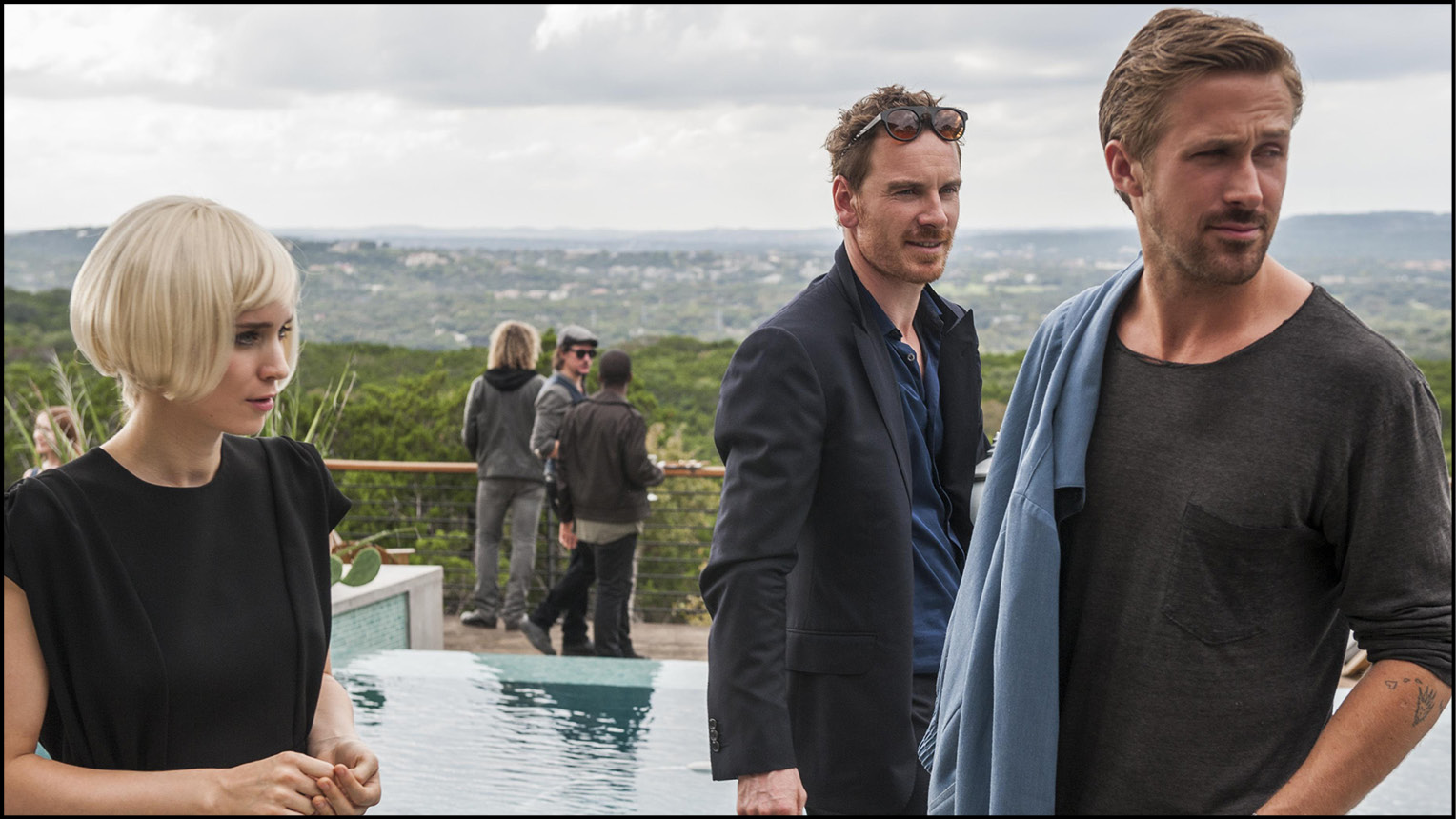

Kadhja Bonet, photo by Sinziana Velicescu
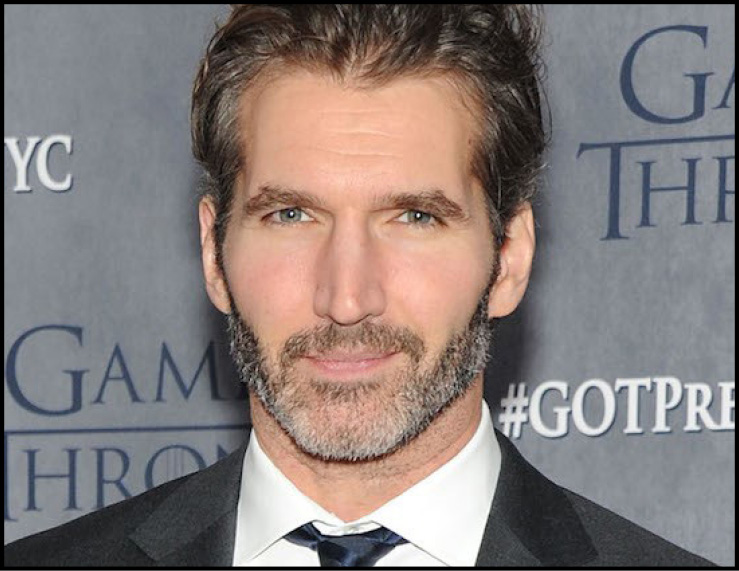
David Benioff
More Showcasing Artists
Announced Weekly
Artists are now being added on a weekly basis! Hundreds of Showcasing Artists have been added to the SXSW 2017 schedule since the last edition of SXSWORLD. Our biggest announcement went out at the start of January, and it included standouts such as acclaimed hip-hop artist Goldlink, rising R&B singer Kadhja Bonet, renowned Pakistani band Fuzon, the solo project of Dr. Dog’s Eric Slick, Austin electronic duo CAPYAC, pop singer and producer Maggie Rogers, Tokyo synthpop band Satellite Young, Chilean shoegaze group Trementina, BBC Sound of 2017 nominee The Japanese House, and more ...
Check every Friday for the latest updates!
SXSW Accelerator
The SXSW Accelerator Pitch Event returns for its ninth year to showcase some of the global startup ecosystem’s most exciting, innovative and cutting edge technologies. SXSW Accelerator takes place Saturday and Sunday, March 11-12, in Salon AB at the Hilton Hotel Downtown, with the winners announced on Sunday.
The event provides an outlet for companies to present the latest ideas in ten categories: Enterprise and Smart Data Technologies, Health and Wearables Technologies, Innovative World Technologies, Payment and FinTech Technologies, Augmented & Virtual Reality Technologies, and Transportation Technologies—to a panel of industry experts, early adopters, and representatives from the venture capitalist/angel investor community.
New for 2017 is the SXSW Super Accelerator Pitch Event. On Monday, March 13, all ten winners will be back on stage to pitch once again in front of a new audience and a new set of judges at the Austin Convention Center. The winner will be named the 2017 Best Startup Pitch Company.
Featured Speakers
The 2017 SXSW Conference is pleased to announce more pioneering and innovative Featured Speakers for March, including CNN political commentator, Van Jones; organizational author Marie “KonMari” Kondo; Outdoor Voices CEO Tyler Haney; Game of Thrones Showrunners D.B. Weiss and David Benioff; futurist Ray Kurzweil; SoulCycle CEO Melanie Whelan; and many more. These Featured Speakers add to the creative cross-collaboration SXSW is known for – ranging in leaders from the tech, film, television, business, literature, government, and journalism fields.
SXSW Hackathon Now Includes
Music + AR/VR & Video
The SXSW Hackathon runs March 14-15, bringing together artists and creators with hackers, programmers and developers to solve problems, create new tools, and push the tech boundaries of Music and—new for 2017—AR/VR + Video as well. Teams work for 24 straight hours, then present their hacks in front of a group of all-star judges and SXSW badgeholders on March 15, on the 4th Floor of the Hilton Austin Downtown. Hackathon participants will compete for cash prizes and the opportunity to take part in the a three-day Incubator with SXSW artists and mentors March 16-18. Apply
Song to Song, photo by Van Redin/Broad Green Pictures
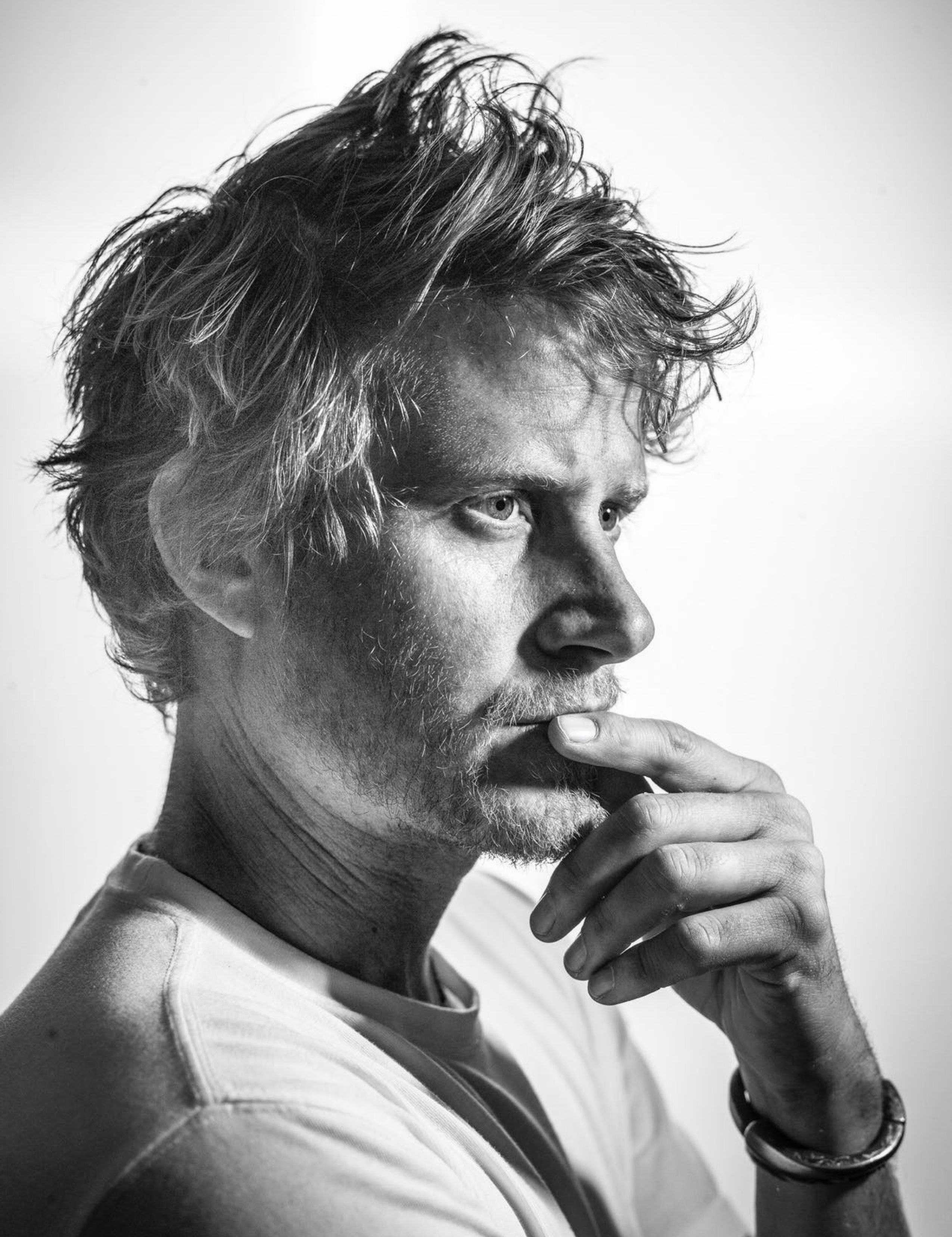
The
Benefits
of Adversity
Meet Adventure Photographer
Cory Richards
By Rob Preliasco
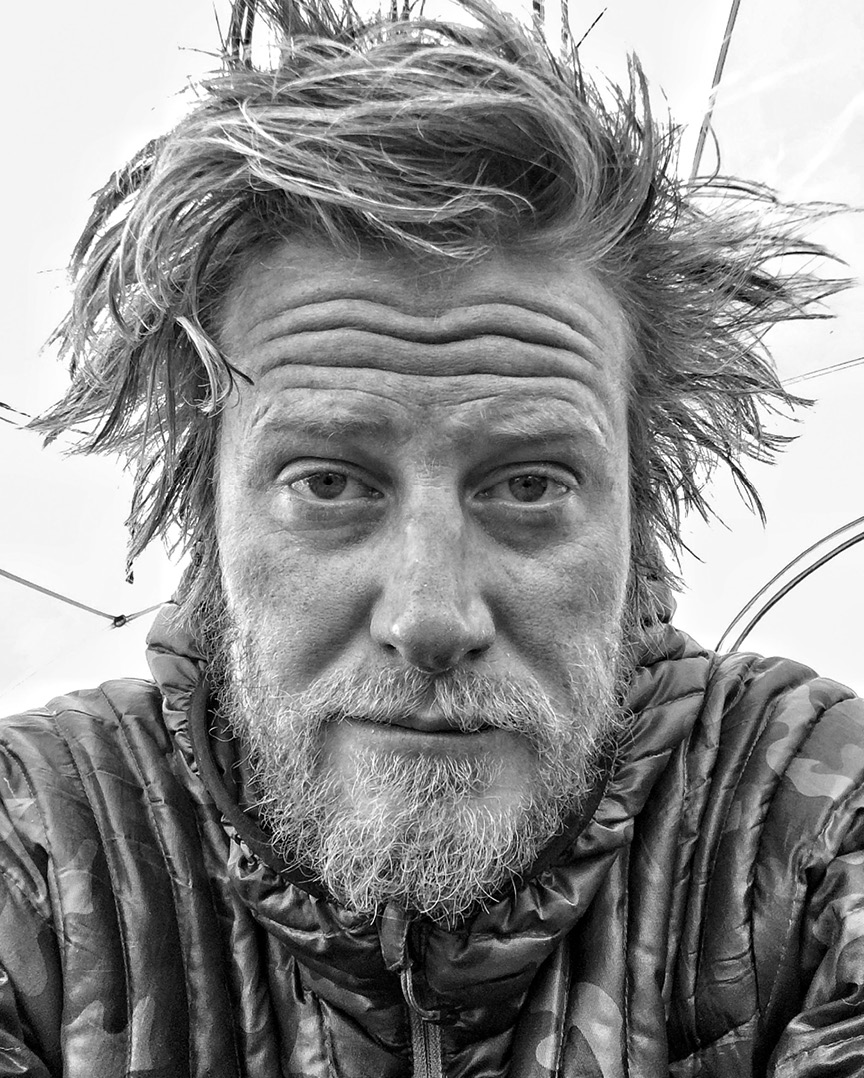
Cory Richards selfie taken at Base camp
after summiting Mount Everest with no oxygen
and going 36 hours without sleep.
Photo by Mark Stone
For Cory Richards, renowned globetrotting alpinist and National Geographic photographer, self-limiting caveats such as “I could never do that …” don’t exist. Yes, he has had plenty of luck (and would be the first to tell you so), but it is the combination of his self-evident talent—and the courage to follow it—that has taken him as high as the roof of the world and to the most remote ends of the Earth.
His career didn’t start out with any certainty. Richards dropped out of high school (he earned a GED later) and lived “basically homeless,” bouncing between different friends’ homes and living only to draw and go rock climbing.
“As an adolescent, you make all sorts of decisions, and you don’t know what sort of outcomes those decisions are precipitating,” he says. “That time in my life had to happen that way for me to end up where I’m at now, but I think there was a tremendous amount of unnecessary pain during that time period … I wouldn’t change it, but I wouldn’t do it again.”
Richards’ art changed his life. His interest in drawing led to an interest in photography and an obsession with capturing images, and he started taking his mother’s beat-up old Ricoh camera up rock faces with him. He was able to sell some of his shots to climbing and outdoor magazines and in a snowball effect, use the money and growing prestige in the climbing community to go on bigger expeditions, to take better pictures, make bigger sales and get even better invitations. “I didn’t find photography as much as photography found me,” he explains.
“Quite often, we think we aren’t capable … but that’s not true, really, ever, … we need to believe massively in ourselves.”
After years of trying, thanks partly to his contacts in the climbing community, Richards eventually received an assignment from National Geographic: taking shots for a one-page article about the effort to clean up trash left behind on Mount Everest. Once he was on the magazine’s roster, more assignments followed.
Richards has been to all seven continents, shooting expeditions to Antarctic glaciers, African river deltas, Nepalese caves and much more. He accepts and seeks out the most challenging assignments and expeditions. In 2011, he became the first American to climb any of the world’s vaunted 8,000-plus meter peaks in winter, summiting Pakistan’s Gasherbrum II in life-threatening temperatures and filming it all for a documentary short simply called Cold.
On the descent, he and his two companions survived an avalanche that could have killed them. Richards filmed the whole ordeal, turning his camera on himself for a wrenching selfie showing his staggering relief to be alive, his pain and his dazed bewilderment. The photo became a National Geographic cover and a famous image in mountaineering, but long untreated post-traumatic stress disorder from the near-death experience resounded in his life, precipitating an end to his marriage. It’s in ways like this that the reality of traveling nine months out of every year, often to trying environments, does not always match the romance.
“It’s extremely hard,” Richards said. “There’s a huge sense of disassociation and despondency. It can be very lonely, it can extremely taxing … I’m comfortable traveling because I have to be, but I’m not always comfortable emotionally in that constant motion.”
Why then, does Richards push himself so hard? Especially, why does he risk his life in daring mountain climbs? It’s not about an adrenaline rush, but instead, he says, mental exercise.
“The importance of doing that is to understand our own capacities,” he said. “Quite often, we think we aren’t capable … but that’s not true, really, ever, and that’s a pertinent lesson right now: that we need to believe massively in ourselves.”
That’s also why, when Richards struggles up a mountainside, he always brings a camera with him. “The point for me is to tell that larger story of struggle and how deep we can go,” he said. “Those moments in between the chest-thumping summit goals, when you see exhaustion, fear, questioning ... those are the important things, and the rest is just kind of bullshit.”
Wherever he travels and whatever he is shooting, from the melting ice caps to migrating wildlife, to people living and struggling all over the world, Richards seeks to convey our interconnectedness: “My photography, I hope, is representative of the fact that we are all tied together. We think of ourselves as apart from the natural world, and the big shift in our thinking needs to be that we are a part of a human family and a global ecosystem.”
Portraying and then overcoming hardship has tremendous value, too. “Everyone thinks pushing your comfort zone has to be this big deal,” Richards emphasizes. “But it’s not. It’s going out of our way to talk to someone we don’t know. It’s stomaching the discomfort of turning off our phone and talking to someone. Those things push us, and we’re not used to it anymore.”
“You can go out and climb a mountain,” he concludes. “But you can also just say: ‘Yesterday, I ran for 30 minutes; today I can run for 35.’ It’s important to extend ourselves as much as we can.”
Cory Richards is a 2017 SXSW Conference Keynote (Interactive).
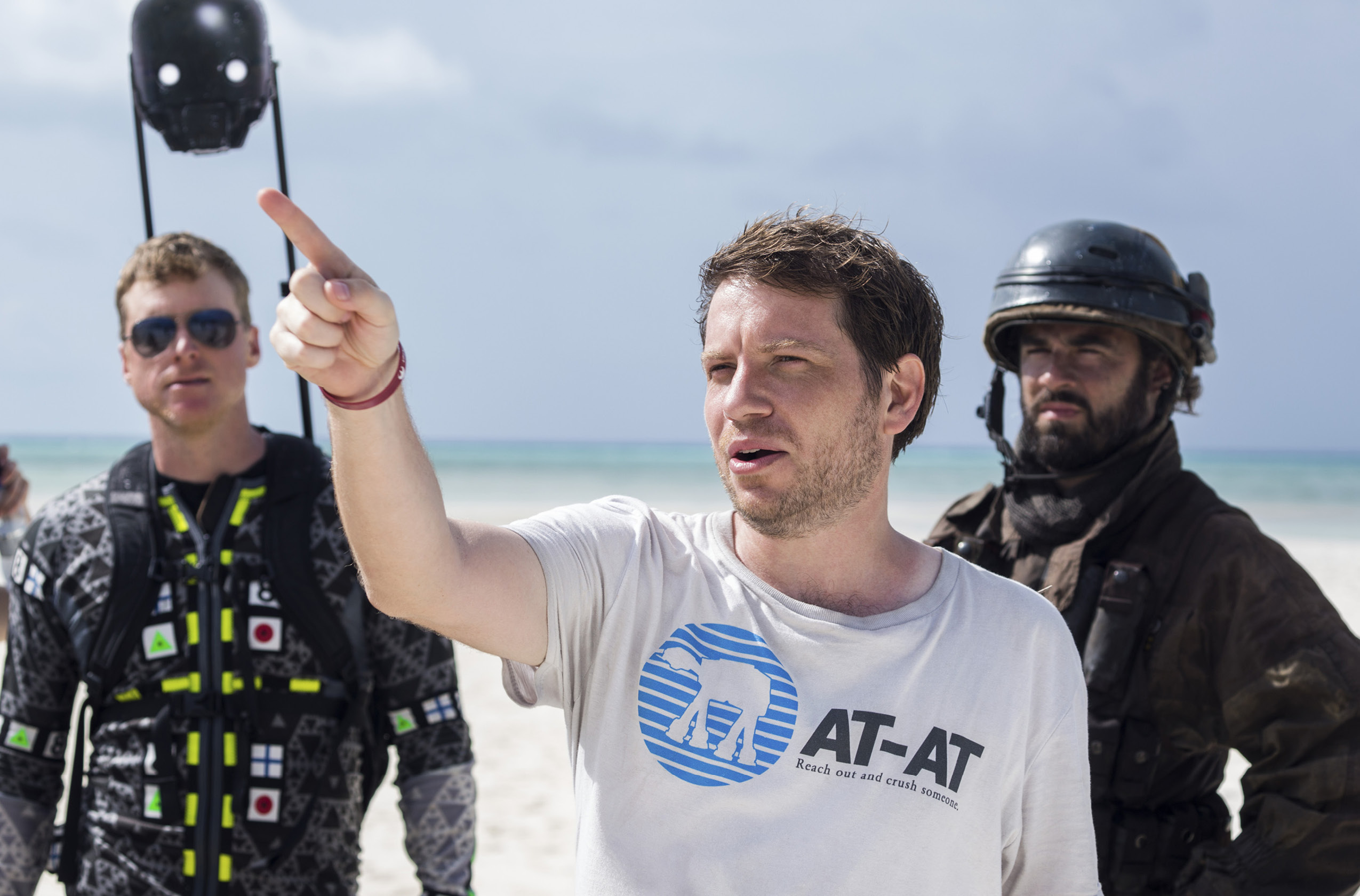
with some business cards. You could tell that some people were legit, and some people were just wannabe filmmakers. And I remember getting in the taxi to go back to the hotel and thinking, ‘Oh shit, that was it.’ That’s my film career. Done. And I was really depressed.”
The next day, Edwards discovered that one of those people was Mike Simpson, an executive at William Morris Endeavor (WME). “He was this really sweet guy,” Edwards recalls of his first encounter with Simpson. “He’s got the same manner as like Clint Eastwood. Very calm and confident, but in a warm way.”
During that first meeting, Simpson offered to represent Edwards alongside his existing clientele of Quentin Tarantino, Tim Burton, Wes Craven, John Woo and others. “He just started listing a bunch of my heroes,” Edwards remembers. “And I was like, ‘And you want to represent me?’ “ To which Simpson responded, “Sure,” and they were off.
Within a few weeks of that first meeting with Simpson, Edwards had travelled to Los Angeles and taken meetings with 100 people. Within a few months, he had been offered Godzilla at Legendary Pictures, which released in 2014, and was on the path that has led him to Rogue One. When he returns to SXSW and the scene of his debut premiere in March as a Film Keynote speaker, he does so as a filmmaker whose last two releases have grossed nearly $1.5 billion worldwide. And to think, on that late night in Austin more than six years ago, he was sure that his filmmaking career was over. In reality, he was simply about to be launched into hyperspace.
Gareth Edwards is a 2017 SXSW Conference Keynote (Film).
Gareth Edwards, photo by Jonathan Olley
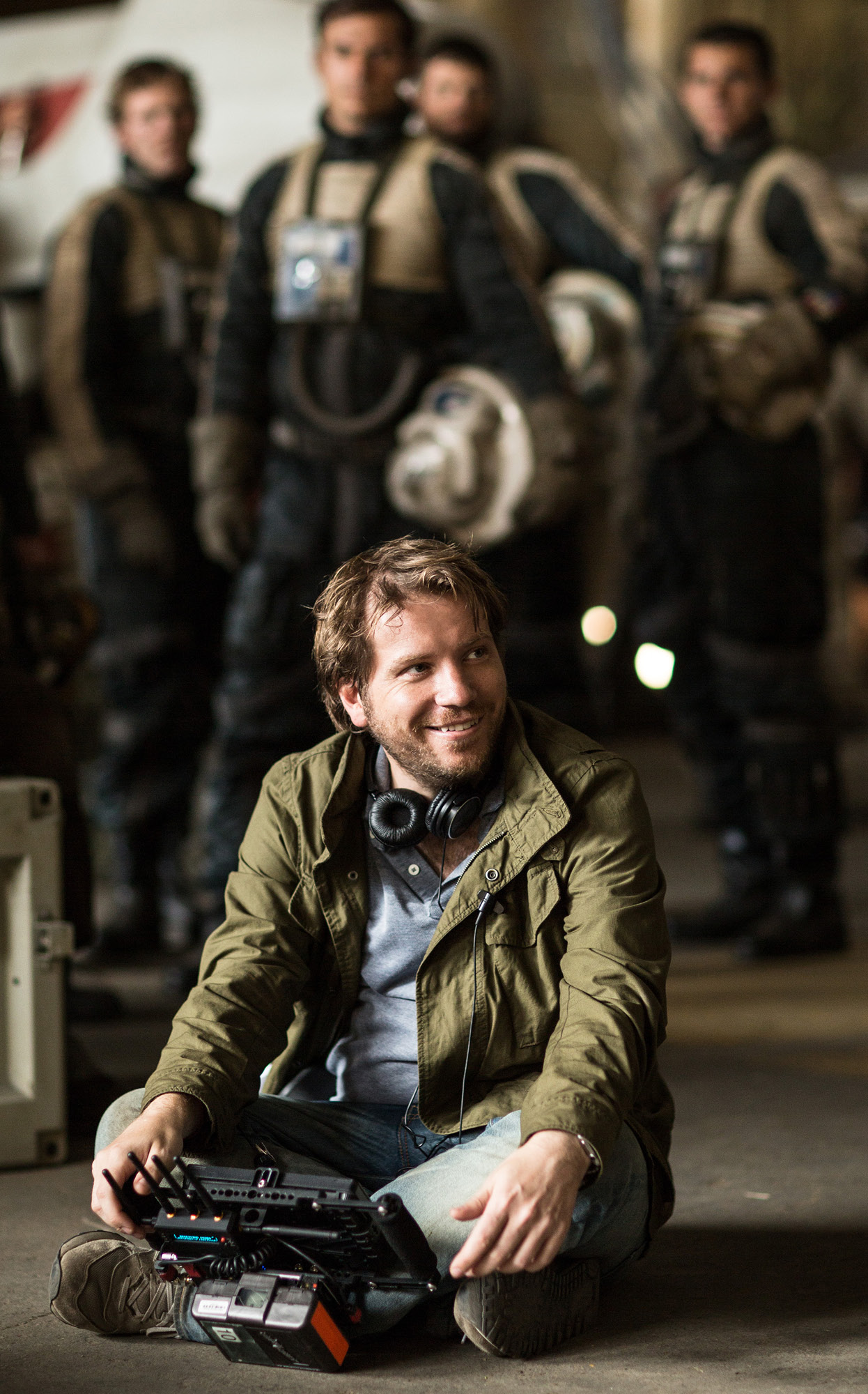
Gareth Edwards, photo by Jonathan Olley
Emerging from Hyperspace
with Gareth Edwards
By Neil Miller
“I believe this helicopter is following me,” explains director Gareth Edwards as he chats over the phone on the same weekend in December that his latest movie, Rogue One: A Star Wars Story is beginning its own assault on the worldwide box office charts (even with a December 16 release, the film was still the U.S. market’s second top grossing release of 2016). While the helicopter in the background isn’t actually following him as he walks the streets of Los Angeles, it wouldn’t be the most atypical thing that happened to him that day. As Edwards had explained moments earlier, this was the day in which he finally had a chance to sleep late following a long flight back to the states from the London premiere of Rogue One. When asked how long it had been since he had been able to get that much sleep, he joked, “Probably just before South by Southwest in 2010.”
To hear him tell it, you’d think that the intervening time, 2,472 days to be exact, was spent in the whirlwind of hyperspace. The switch on his life’s hyperdrive was flipped following the debut of his first film, the languid and innovative sci-fi thriller Monsters, at a midnight screening in the Alamo Drafthouse on the opening Friday night of SXSW 2010. “I remember Tim League [Alamo Drafthouse CEO who, at the time, was curating the SXFantastic midnight program] had met us off the plane,” he recalls six-and-a-half years later. “And he said, ‘Did you manage to replace the text?’ And I thought I was being funny and I said, ‘Oh yeah, it’s a much nicer font now. It’s a sans serif with a nice embossed chrome texture.’ And you could see him sort of laughing like, ‘Yeah, very funny. But did you f—king finish it?’ ”
Months earlier, Edwards had presented a very rough version of Monsters to League and the SXSW programming team, with text in place of fighter jets and the film’s unique alien life forms. While the film was accepted into the festival, it presented him with a tight turnaround to get it finished before the premiere. A longtime visual effects artist, Edwards was able to complete the work on Monsters in the tight window and present it at SXSW.
“If we hadn’t had that deadline,” he recalls. “I’m not sure what would have happened to the film. It might’ve dragged on and on. I didn’t have the energy to go another few months. It was like sprinting to the end of a marathon.” Yet while those last few months before the premiere of Monsters sound harrowing, they were nothing compared to what came after that first screening.
“We went on stage after, and we just couldn’t tell if people liked it, because everyone’s polite to the director,” he says of the post-premiere Q&A. “Even if it’s a rubbish film, people will come up and shake your hand. And to be honest, it feels like a big anti-climax. You’ve worked like crazy for what feels like a lifetime, for two-and-a-half years, and there’s no reward at the end that can be worth that.
“I don’t know what anyone expects or what I expected to happen at the end of that screening. I don’t know if I expected the heavens to open and unicorns to come out and gold to rain from the skies, but at the end, people were coming up

People are always asking Nile Rodgers the secret to breaking into the music business. And the longtime Chic leader—whose studio resume includes signature hits by the likes of Madonna, Sister Sledge, Daft Punk and scores more—has plenty of stories to tell. But he generally doesn’t give out advice.
“If I were to say something masquerading as advice, it would be to learn to embrace failure because that’s the one thing you can depend on,” Rodgers says. “I feel like everything I do has potential, but the reality is most records fail—not artistically or spiritually, but commercially. So all I know how to do is just persevere. You want a hit, but you’re gonna keep doing it either way. That’s the story of my life. Just keep doing it.”
Four decades after Chic broke Rodgers out to the mainstream, Rodgers remains in high demand across a wide range of pop styles. One big reason for that is he’s always been a musical omnivore able to absorb and play pretty much anything, going back to his teenage years playing guitar in the Sesame Street touring band. Even while earning his funk and R&B bonafides in the Apollo Theater’s house band, however, Rodgers was more interested in jazz.
“More than anyone else,” Rodgers says, “Wes Montgomery was who I was trying to copy back then.”
By the time he hooked up with his key collaborator, Bernard Edwards, and began forming bands of his own in the 1970s, Rodgers really wanted to be in a rock band. And he had a very specific model in mind for what he was after: the fashionable flash of English art-rock band Roxy Music. Seeing the band live in London proved to be a formative experience.
“I’d been in all these bands where whatever clothes you put on that morning, you’d be playing in that night,” Rodgers says. “But Roxy Music had couture clothing, very theatrical, and they had models and Playboy bunnies on their album covers. Very cool! So take Roxy Music’s high-fashion class and combine it with the anonymity of Kiss, and Chic comes out.”
For all the cool conceptuality, Chic didn’t catch on until 1977’s “Dance, Dance, Dance (Yowsah, Yowsah, Yowsah),” a song Rodgers claims to have written “out of frustration” because record companies refused to take a black rock band seriously. Made on a borrowed $3,500, “Dance” would be the first Chic single to crack the Billboard Top 10.
Chic’s heyday lasted just a handful of years in the late ’70s, but it included some of the disco era’s most enduring signpost hits—“Le Freak,” “I Want Your Love” and “Good Times” among them. The latter song was also the basis of the Sugarhill Gang’s “Rapper’s Delight,” a song that launched hip-hop to the masses in 1979.
It took until this year for Rodgers to finally get into the Rock & Roll Hall of Fame, where he’s set to receive the “Award for Musical Excellence” at the Hall’s April 7 induction ceremonies. But the Chic braintrust of Rodgers and Edwards (who passed away in 1996) were producers and writers that everyone in the pop world wanted to work with. After overseeing Sister Sledge’s career-making “We Are Family,” they gave Diana Ross the biggest-selling album of her career (1980’s Diana). Rodgers went on to co-produce David Bowie’s commercial high-water mark, 1983’s Let’s Dance, as well as the Vaughan Brothers, Keith Urban, the B-52s and many others. Recent years have found Rodgers still at the top of the charts with Sam Smith, Christina Aguilera and Avicii.
“At least 95 percent of the records I do come about because I met someone somewhere,” Rodgers says. “At a gig, in the club, backstage. We’ll talk and then it’s, ‘Let’s try to do a record together.’ Whether it’s Bowie or Madonna or Disclosure or whoever. ‘Meet our friend, Sam. Oh, you sing? Cool, let’s write a song.’ That was Sam Smith. And Daft Punk, they were big Chic fans and we met at the listening party for their first album. It took 16 years for us to get together, and when they came over to play some demos, what I remember most was the conceptual part of it. I was enthralled, because I’m that kind of guy.”
On tap for 2017 is Chic’s first album of new material in more than a quarter-century, It’s About Time. The album was originally set to be released in 2016, until last year’s wave of high-profile deaths (including Bowie and Prince) convinced Rodgers he should wait.
“When 2016 rolled around, Bowie passed in the very first month, and then Glenn Frey, Paul Kantner,” Rodgers says. “Those felt like very powerful signs to me, especially after Prince died. ‘This is just not the year for it,’ I thought. Chic records are so celebratory, fun, tension-releasing, and all this just felt so dark and anti-Chic.
“So 2017 is the year for it,” he concludes. “One thing I’ve always believed in is ‘next.’ I always want to do the next thing. When I did Diana, Berry Gordy called up to complain that, ‘It doesn’t sound like a Diana Ross album.’ And I had to correct him, ‘It doesn’t sound like an old Diana Ross album.’ That wound up being the biggest record of her career. So I’m always thinking about what’s next, even if it might fail.”
Nile Rodgers is a 2017 SXSW Conference Keynote (Music).

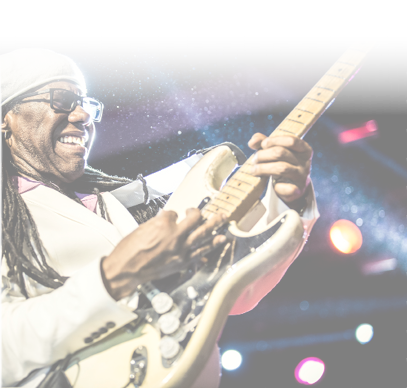

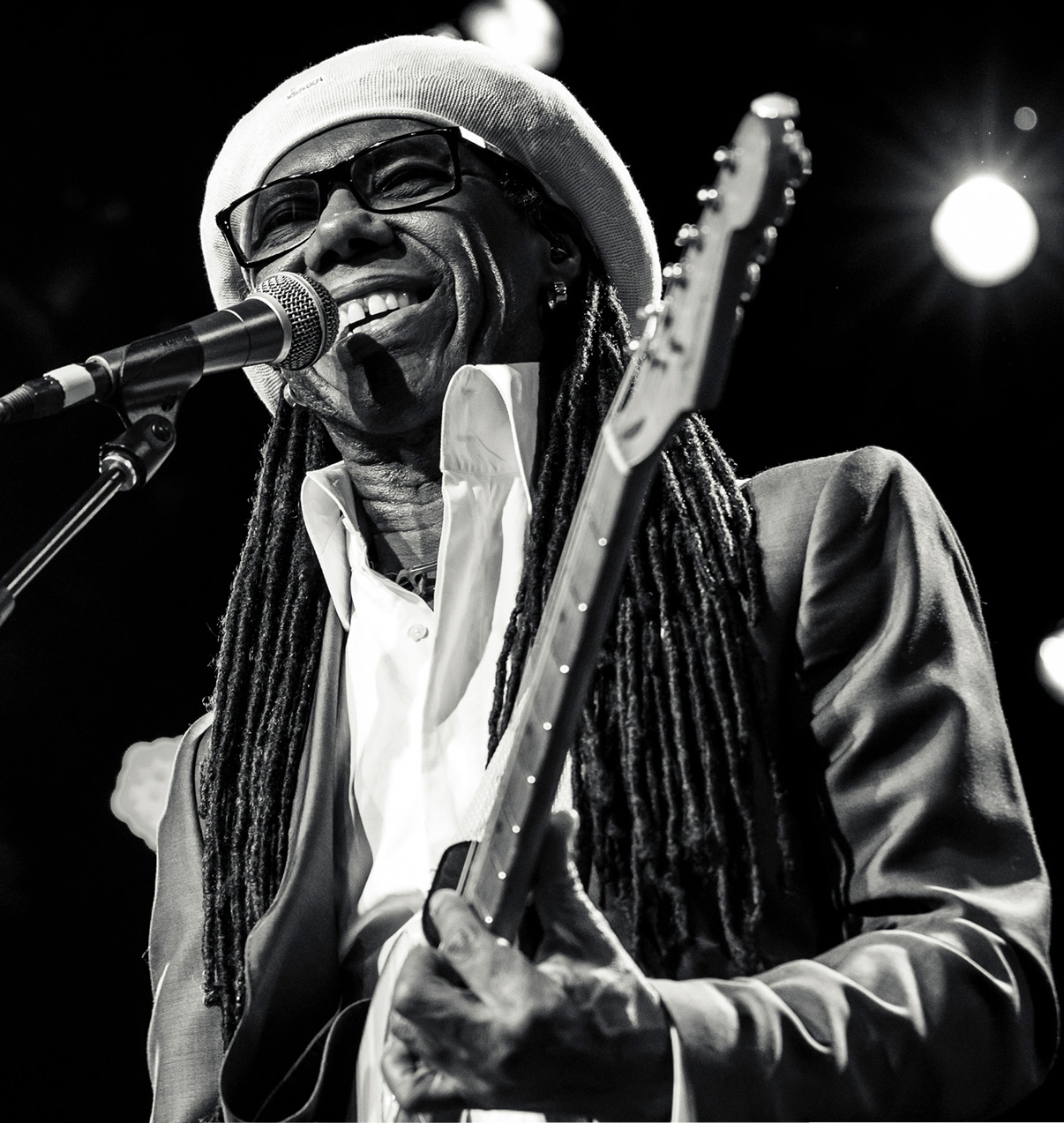
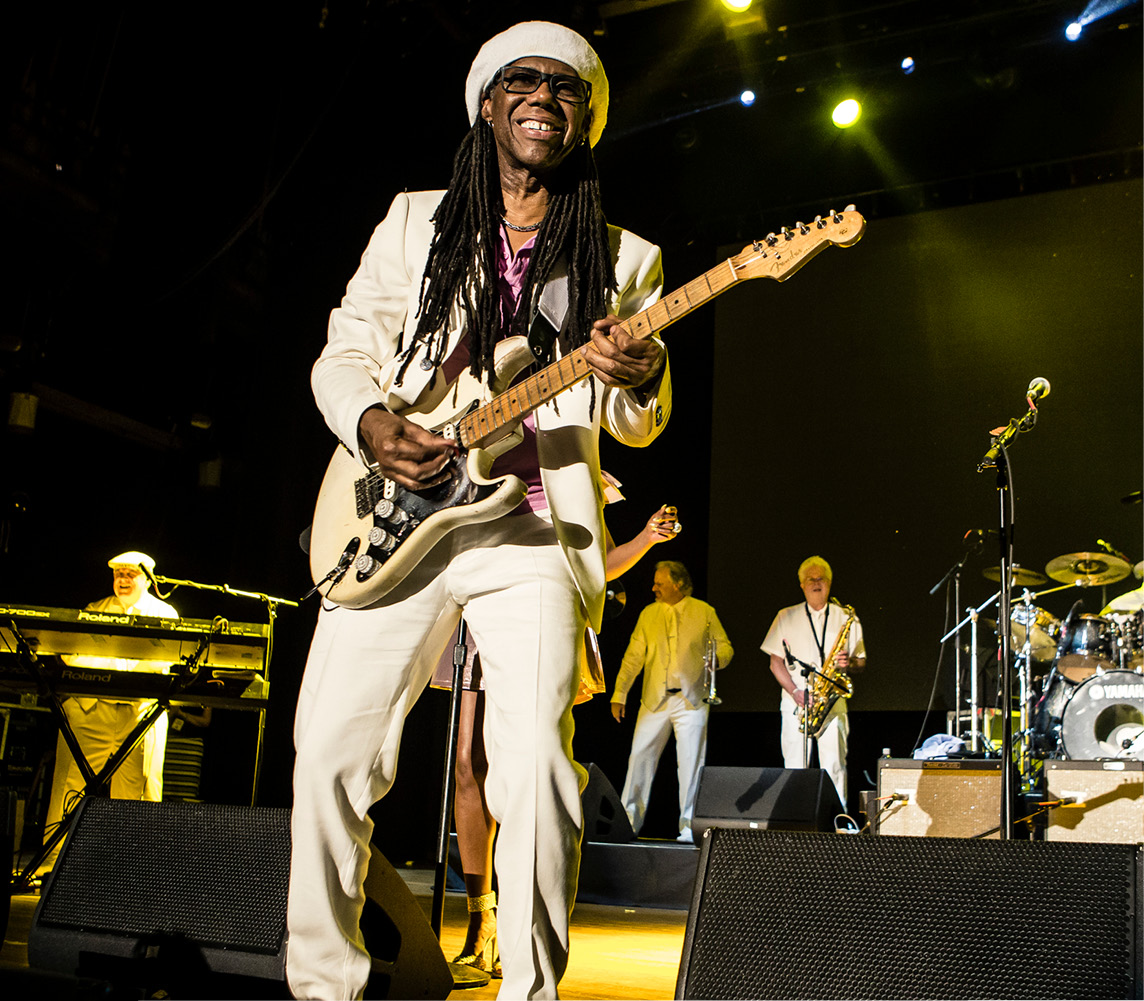
Nile Rodgers, photos by The1point8
“One thing I’ve always believed in is ‘next’. I always want to do the next thing.”
Doing
the
Next
Thing
with Nile Rodgers
By David Menconi

The economic and social advantages conferred by a college degree are well-documented, with graduates, on average, earning higher salaries and access to upward social mobility. Yet, one of the key constituencies that helped elect Donald Trump last year was non-college educated Americans. Did this reflect, as some suggested, a growing rejection of post-secondary education in the U.S.?
Her groundbreaking work has given Sara Goldrick-Rab, Professor of Higher Education Policy and Sociology at Temple University and the author of 2016’s Paying The Price: College Costs, Financial Aid, and the Betrayal of the American Dream, a more nuanced perspective on the social, economic and educational divides that the election exposed.
Goldrick-Rab’s book has helped start a national conversation about the fact that the biggest obstacle to attaining a college education is not gaining admittance or being able to do the work. It is the simple fact that college costs too much, and the financial aid system intended to help extend college opportunity to low- and middle-income families is no longer adequate.
As a social scientist, Goldrick-Rab is rigorous about grounding her claims in data. Her book was based on the Wisconsin Scholars Longitudinal Study, which she designed and ran with economist Douglas N. Harris. The study followed 3,000 students for six years, all of whom received multiple forms of financial aid.
But the data that came out told only one part of the sobering story, so Goldrick-Rab provided context by presenting the data alongside case studies tracking the experiences of six students in her survey, all of whom started college in 2008.
“I thought there would be power in the stories,” Goldrick-Rab said in a recent phone conversation. “Maybe I could get schools and administrators to feel closer to this, and feel like they’re ready to do something. It is so important to just really recognize the problem. There is so much rhetoric out there that money just is not really the issue in education.”
One of the most infuriating revelations in Goldrick-Rab’s book is the extent to which colleges and universities go to keep students in the dark about the true price of the education they’re paying for. For instance, in their failing to inform recipients that the often paltry aid they get for their freshman year will likely be even more inadequate for subsequent years, as fees and tuition increase. And by pretending that the cost of college is simply limited to tuition, fees and books, not considering items such as food, shelter, clothing and transportation.
“We have to address these living expenses,” Goldrick-Rab said. “For us to continue to not admit that food and housing are keeping people back is not OK.”
Despite grants, loans and working multiple jobs at once, one of Goldrick-Rab’s case study subjects couldn’t make it and left college in her second year, exhausted, defeated, degree-less and in debt.
“There are people (in the study) who got clobbered a lot worse, but they weren’t typical,” Goldrick-Rab said. “She got clobbered in a very typical way, which is why she’s in there.”
Another typical way financially strapped students get clobbered? By taking the initiative to apply for private scholarships to supplement their existing grants and loans, only to learn that their schools can “claw back” a like amount from the students’ promised aid packages.
“It’s got an official name,” Goldrick-Rab said. “It’s called aid displacement. The Gates Foundation loses millions because of this problem. Coca-Cola loses money because of this problem. (Schools) will claim in the name of equity that they’re just going to distribute that aid to another kid. Except they don’t.”
And because the system is designed and administered to keep students in the dark about their own college finances, most don’t realize their hard-won scholarship will simply displace a like amount of existing aid until after the fact.
If one hasn’t already suspected as much, by the end of Paying the Price, it is hard not to conclude that for many lower-income students, financial aid can be an inducement to try college that leaves many worse off than if they had never gone.
“We open these doors to American higher education so widely, and we’re so proud of that. We say that that’s the epitome of the American dream,” Goldrick-Rab said. “But they get there and we’ve fooled them by not giving them the support they need, so that they can do more than walk in the door. Because they walk through and so now they have debt. That’s the infuriating trap to me.”
So how does this connect with the election? “It was different 20 years ago,” Goldrick-Rab explained. ”You could go and not be harmed by just being (in college). Now you’re harmed because you couldn’t get in the door without taking on debt. And the public costs of this system are huge. The failures are costing us.”
“This election was an example of this failure,” she continued. “Look at the divide (among voters) in college educated and non-college educated people. This is not just that non-college educated people don’t know stuff. It’s that they are angry. They are pissed because they couldn’t become college educated, because the system is stuck against them. They’re not saying they didn’t want an education—they couldn’t get an education. It’s so connectable.”
Sara Goldrick-Rab will be a Keynote speaker at SXSWedu: March 6-9 at the Austin Convention
Center.
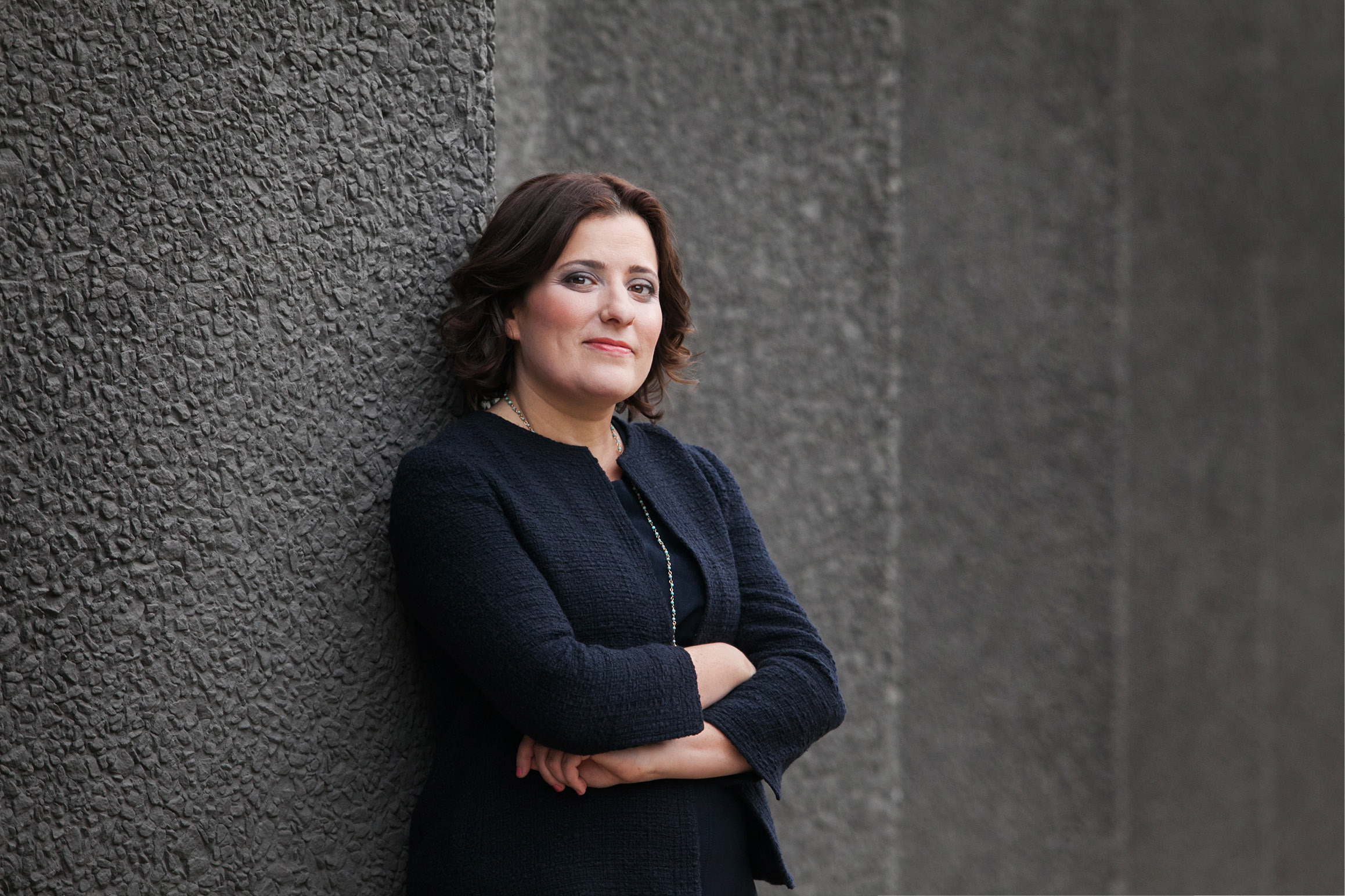
Sara Goldrick Rab
Photo by Chris Kendig
Why Not College?
It’s All About the Money
By Rich Malley

Muslim Melodrama’s
Signature Move
By Linda Laban
Fawzia Mirza, photo by Bradley Murray
Muslim melodrama might not yet be a cinematic genre on many American filmmakers or moviegoers’ minds, but that’s how actor and writer Fawzia Mirza describes her first feature film, Signature Move.
“I’ve been talking a lot about the genre Muslim melodrama because, if you think about it, the film is sort of like if a telenovela meets a Pakistani drama, but is comedic,” Mirza says via phone from her home in Chicago, in December.
That’s one, or three, ways of describing Signature Move, which follows the lives and interactions of a handful of women, some of whom are Muslim, some of whom are Mexican, and some of whom are gay. Dubbing the film Muslim, gay or even melodramatic sells this movie very short, though.
Signature Move unfolds as a nuanced look at the struggles of these women: Zaynab, played by Mirza, is an immigration lawyer who struggles to come out to her traditional Pakistani mother, Parveen (Shabana Azmi). Parveen is grieving for her recently dead husband and has moved in with Zaynab but won’t leave the house and spends her days TV-glued and focused on her daughter finding a man.
Zaynab meets Alma (Sari Sanchez), an openly gay Mexican woman, who seems to have it all worked out. Her former lucha libre champion mother, Rosa (Charin Alvarez) and Jayde (Audrey Francis), a stoic former wrestler who unwittingly becomes Zaynab’s spirit guide, offer contrasts to Parveen’s traditional view of gender roles.
Still, despite the au courant powder keg issues of sexual orientation and immigrant assimilation, at its core, the film shouldn’t overshadow the way the film tries to undo stereotypes.
“I think the film is inherently political, but I didn’t set out to make a political movie. My reality is intensely political to many people,” says Mirza, who grew up the daughter of Muslim Pakistani immigrants, first living in London, Ontario, and then in Indiana. “Some real-life things that happened in my life inspired some of it. In reality, I have an ex-girlfriend who is Mexican, and one of the things I found was there was this great connection across communities to be had.”
Mirza’s reality potentially put her between a rock and a hard place: but she refused to allow being gay in the Muslim world, or Muslim in the Western world, prevent her growing into herself.
“It can be hard to be Muslim. It can be hard to be gay. It can be hard to be both. What I know is that the only way I was able to be me was to embrace all of the me,” she says emphatically, “and almost create a new identity where all those things are inextricable.”
Signature Move, co-written with Lisa Donato and directed by Jennifer Reeder, is a spin-off from one of Mirza’s short films. Her other shorts include “The Queen of My Dreams” and “The First Session,” which co-starred Mouzam Makkar (The Vampire Diaries, The Exorcist) and Parvesh Cheena (Crazy Ex-Girlfriend, Outsourced), and was shown at the NBC Diversity Short Film Festival, held at the Directors Guild of America in Hollywood, and at The American Pavilion at the 2016 Cannes Film Festival.
Besides film and stand-up comedy, Mirza wrote a “one-person play,” as she puts it, “Me, My Mom & Sharmila,” which she performed in Pakistan last year. She also helmed and starred in the satirical web series Kam Kardashian, where she played a long lost lesbian Kardashian sister, and a mockumentary, The Muslim Trump, about Donald Trump’s fictitious illegitimate Muslim daughter.
But the role of Zaynab is something for which she’s yearned: “Playing someone like Zaynab is why I started writing in the first place,” she says. “As an actor, you are always waiting to be cast in a role you fit into. I thought, why wait?”
Like Zaynab, Mirza isn’t a wrestler either. But the allegory of wrestling— going through the motions of set moves, while seeking to define yourself with a unique signature move—is perfect for a story about following your individual path.
Besides cultural and sexual orientation, Signature Move has one more stereotype buster that speaks across the female divide: these women are not bystanders in the own lives. Even Parveen, the house-bound mother who watches the world through binoculars, rises to the occasion.
“This is not a film about Muslim women needing to be saved,” says Mirza. “Even Parveen, who is different from the rest, is this strong, rich woman. Part of it was finding those moments beyond being a mother. She’s as quirky as anyone else in the film. The actor playing her is the Meryl Streep of South Asia. She is amazing.”
Mirza hopes the film will find a broad audience: “This movie is written by queer women, about women of color, and is directed by a woman. It is a film about women,” she adds, “but the audience, we believe, is even more expansive and the story is deeply relatable across communities. The relationship struggles, the fears, the awkwardness, trying something new, the self-discovery, the coming of age, the mother-child relationships and mother-child communication struggles, is all something that we think crosses culture and is deeply inclusive.”
Signature Move will World Premiere at SXSW 2017. Fawzia Mirza will also appear on panels in the Film and TV Industry and Experiential Storytelling tracks. See schedule.sxsw.com for more.

Fawzia Mirza and Sari Sanchez in Signature Move, photo by Chris Rejano
Can Autonomous Vehicles Really Save the Planet?
By Shermakaye Bass
The self-driving car, a.k.a. the AV or autonomous vehicle, is no longer somewhere on the horizon. In the U.S., some mobility experts predict AV ride-hailing or autonomous taxis will be deployed within five years, with AVs supplementing public transit systems in five to 10. Large numbers of individual self-driving cars aren’t expected until further down the road due to policy, regulation, safety and licensing issues.
“I think we’re talking about this kind of robo ride-hailing service in urban environments first, where it’s a fully autonomous shared car or taxi kind of approach,” says Ginger Goodin, director of the Transportation Policy Research Center at the Texas A&M Transportation Institute.
Among the coming automation’s benefits, auto industry leaders tout the potential for AVs to have far-reaching implications for quality of life, especially for urban dwellers, the disabled and the working-poor.
“The car has always been more than just a means to get from A to B,” says Dieter Zetsche, head of Mercedes-Benz Cars and Chairman of the Board of Management at Daimler. “It is and remains a personal Declaration of Independence. Self-driving cars will further enhance that individual freedom, while offering tremendous opportunities for our society.
“They are able to reduce emissions by driving more efficiently, and they can make personal mobility available to people with physical impairments or the elderly,” Zetsche continues. “Most importantly, they will help reduce the biggest safety risk in driving: human error. So, autonomous driving will make traffic cleaner, more accessible and safer.”
Daimler is deeply invested in self-driving vehicles and complementary technologies such as mapping. In May 2015, Daimler Trucks North America introduced the world’s first automated big rig, testing it in Nevada where it drove itself across Hoover Dam. American companies including Ford, Tesla and General Motors are testing AVs in multiple conditions and locations.
“The technology is progressing very quickly,” says Bill Ford, executive chairman of Ford Motor Company. “We will have several more generations of the software and the sensors and the LIDAR before it hits the road, but I think the bigger issue is all these kind of softer issues around the economy: Who’s going to own the vehicles? How are they going to be managed? And importantly, if there’s a setback early on with an autonomous vehicle, will that set their acceptance back for some time?”
Ford was an early proponent of self-driving cars and ruffled major feathers in the auto business when he gave a TED Talk on AVs back in 2011. On the surface, it appeared that the great-grandson of Henry Ford was advocating against the industry’s best interests, because as AVs take off, city dwellers will surely buy fewer cars.
Ford explains that “It wasn’t really an ‘aha’ moment—it was more just a function of traveling all around the world and being stuck in traffic in almost every major city… and I thought about our industry projections. The people in our industry were looking ahead and saying, ‘We have rising GDPs and a rising middle class around the world, and therefore we’re going to sell almost infinitely more cars and trucks.’ And it just struck me that that was a ludicrous proposition.”
Now, car manufacturers are surging forward in this brave new market of self-drivers. In fact, they appear to have surpassed tech firms like Google and Uber, which only a year or so ago were leading the AV sector.
As Daimler’s Zetsche explains, it’s an obvious pairing because cities around the globe are built around cars and their needs: “As the car changes, the city changes, too. Just think about parking, alone: Today, an average car is parked for about 23 hours a day. That is a lot of idle time. It also means we need huge parking garages that occupy scarce space in our city centers. A self-driving car could drive us to work, fetch our laundry from the dry cleaner, pick up the groceries at the supermarket, park itself at a remote location and return to us when required. The possibilities and benefits could truly transform our lives. That’s why autonomous driving will have such a significant effect on many people and businesses.”
Another major impact of AVs will be socio-economic. Increased mobility for the working class and working poor—whether it be through AV-supplemented public transit or in ride-hailing—can only make life easier.
“Brookings did a study that one of the biggest determinants of getting out of poverty is the ability to get to where your job is,” Ford says. “And so I believe that the beneficiaries are going to be everybody—but especially people who today are out of work because they simply can’t get to where their job is. So actually part of my great belief in all of this, is that this is really going to be a technology that liberates all parts of our society, and to me that’s really compelling.”
Zetsche also sees the arrival of AVs as a key development: “I’m convinced we’re in the most exciting and revolutionary era of individual mobility since its very start.”
Autonomous cars will be among the topics explored in the Intelligent Future track at SXSW 2017.
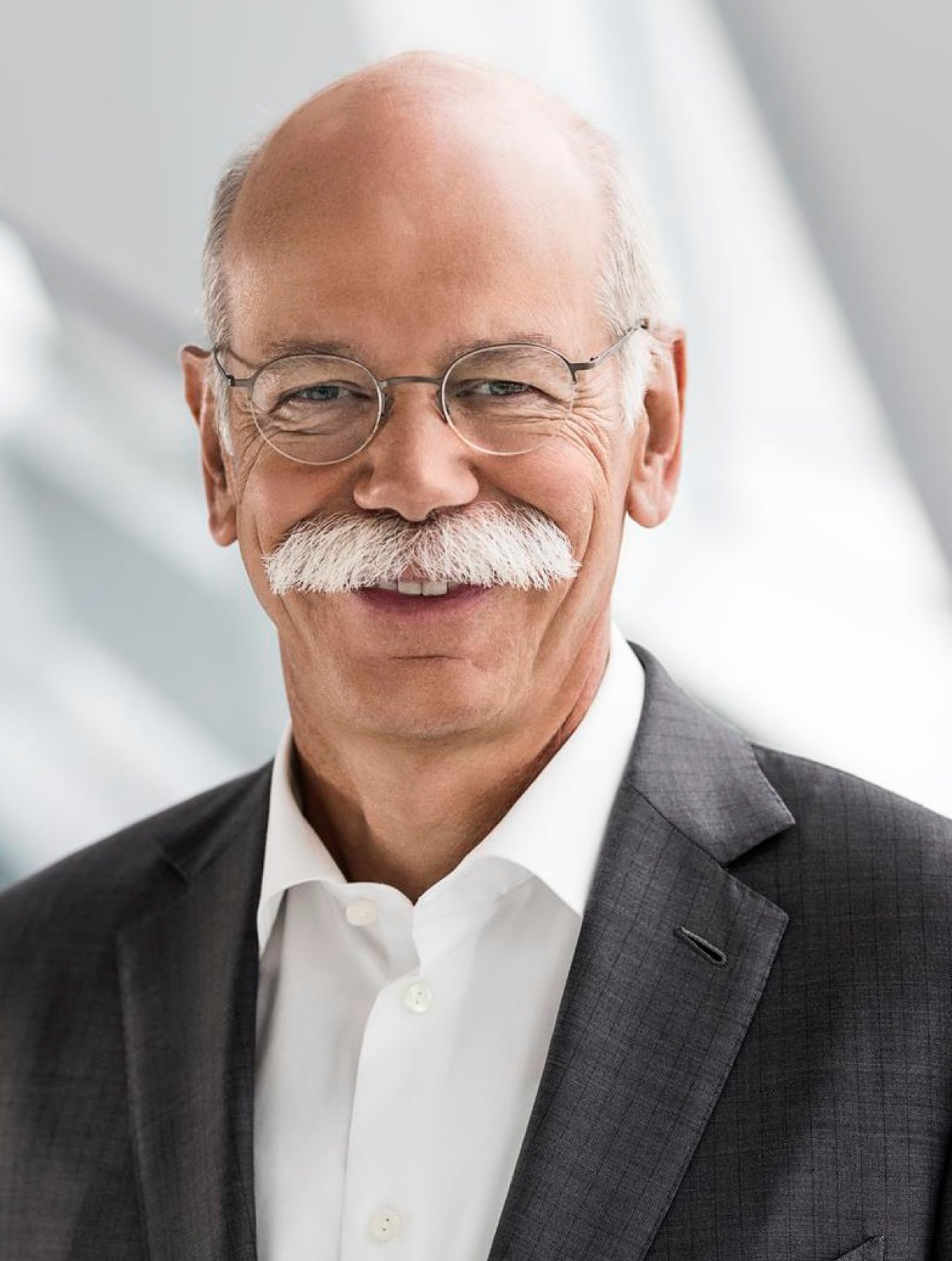
Dieter Zetsche, photo courtesy of Daimler AG
The ingenuity and resourcefulness of the people of Cuba is legendary. Faced with chronic shortages since the early ‘60s due to a U.S. trade embargo, the country was truly left to its own devices following the collapse of the Soviet Union in the late ‘80s. In response, Cubans became inventors out of necessity. Using whatever materials available, they have been able to repair and repurpose almost anything—the classic American cars on the streets of Havana being a famous example.
While their parents grappled with washing machine motors, old telephones and bicycle parts, a new generation of developers and entrepreneurs is innovating in the fields of technology and connectivity. Since most of the population has little to no Internet access, an increasing number of developers are working on offline solutions to stay connected within and outside the island.
According to information from the Cuban government, the goal is that 50% of the population has Internet access by 2020. “This number, while not small, seems insufficient,” says Darsi Fernandez, founding partner of 4C Producciones and a key player in bringing the first “Sounds from Cuba” showcase to SXSW in 2016. “Considering the apparent state of development of ETECSA, the company that controls the telecommunications monopoly in Cuba, this projection seems ambitious and far from reality.”
Most Cubans desire connectivity, but home Internet connections are banned for most, and the government charges the equivalent of a quarter of the island’s monthly salary for a one hour connection to the global network, either at state-run hotels or Internet cafes. Hence, the DIY spirit of the population has sprouted a number of alternatives, including a semi-clandestine network called SNET (Street Network) and cutting-edge offline technology platforms.
4C Producciones coordinates AM-PM (América Por su Música), an event at the Fábrica de Arte Cubano that seeks to unite and connect music industry professionals in Latin America. There, they organized the first Brainstorm Music & Tech session to connect the new media and music sectors. “The idea is to strengthen the connection between the music industry and technology entrepreneurs, something that is common worldwide but which is still in its infancy in Cuba,” says Fernandez. “The purpose of the project is to promote joint lines of work for both groups, based on the common space that has opened up new information and communication technologies (on demand consumption, social networks, collaborative culture, crowdfunding, etc.), as well as the main difficulties and advantages of the current Cuban entrepreneurial environment. In addition, one of our objectives is to foster the generation of a ‘business portfolio,’ based on the creativity and innovative spirit that both industries share.”
What started as a way for a few young Cubans to play online games, SNET has blossomed into a vast alternative neighborhood intranet, now connecting up to 20,000 users in Havana. Ian Pedro Carbonell, SNET’s “general organizer,” is one of the tech entrepreneurs who will participate in the #OffCuba panel during SXSW 2017. SNET is an example of how technology can be an important force for community development on the island and beyond.
“People can create their own audience through their profile, invite friends, and send their ads for free,” explains Carlos García, founder of Kewelta, a free social portal for advertising content created to encourage entrepreneurs. At SXSW he will present the mobile application, which will work online and offline.
“We publicize our services and projects working directly with people who need to advertise their businesses, and with the people who join our community through ads we place in magazines, mobile applications, or events such as fairs,” says García. “As startups, we have created business models that allow us to generate income, and the (SNET) community uses different ways of internal crowdfunding for its infrastructure and maintenance. Creativity has prevailed, allowing us to survive by creating a different technology while we look for income to sustain our projects.”
Also participating in SXSW are Yondaine Gutiérrez and Ariel Causa, co-founders of AlaMesa, the leading platform for information about Cuban gastronomy, which comprises a website with information on approximately 70% of the restaurants in Cuba, alongside a mobile app that works without Internet access and contains maps and geolocation offline.
These entrepreneurs have studied and immersed themselves in technology. However, they think of technology in a different way from those who have always lived with Internet and see offline technology as an alternative to the web, not a replacement. Their success lies in the ability to create services and technological products that are not dictated or controlled by the state’s telecommunications infrastructure.
“On the Internet there are many applications and systems that are already offline,” says García. “Our mission as entrepreneurs is to have a far-reaching impact on the mass media, allowing us to show Cuban offline technology and the ways to export it. There is a thaw in Cuba’s relationships with the USA and the EU, and the private sector has benefited the most. It is important to show the success of our startups so we can attract investors and create business opportunities for our community.”
Click for information about the #OffCuba session and other international programming at SXSW 2017.
Cuba’s DIY Culture Extends to Technology
By Claudia Alarcon

Photo by Richard Hewitt
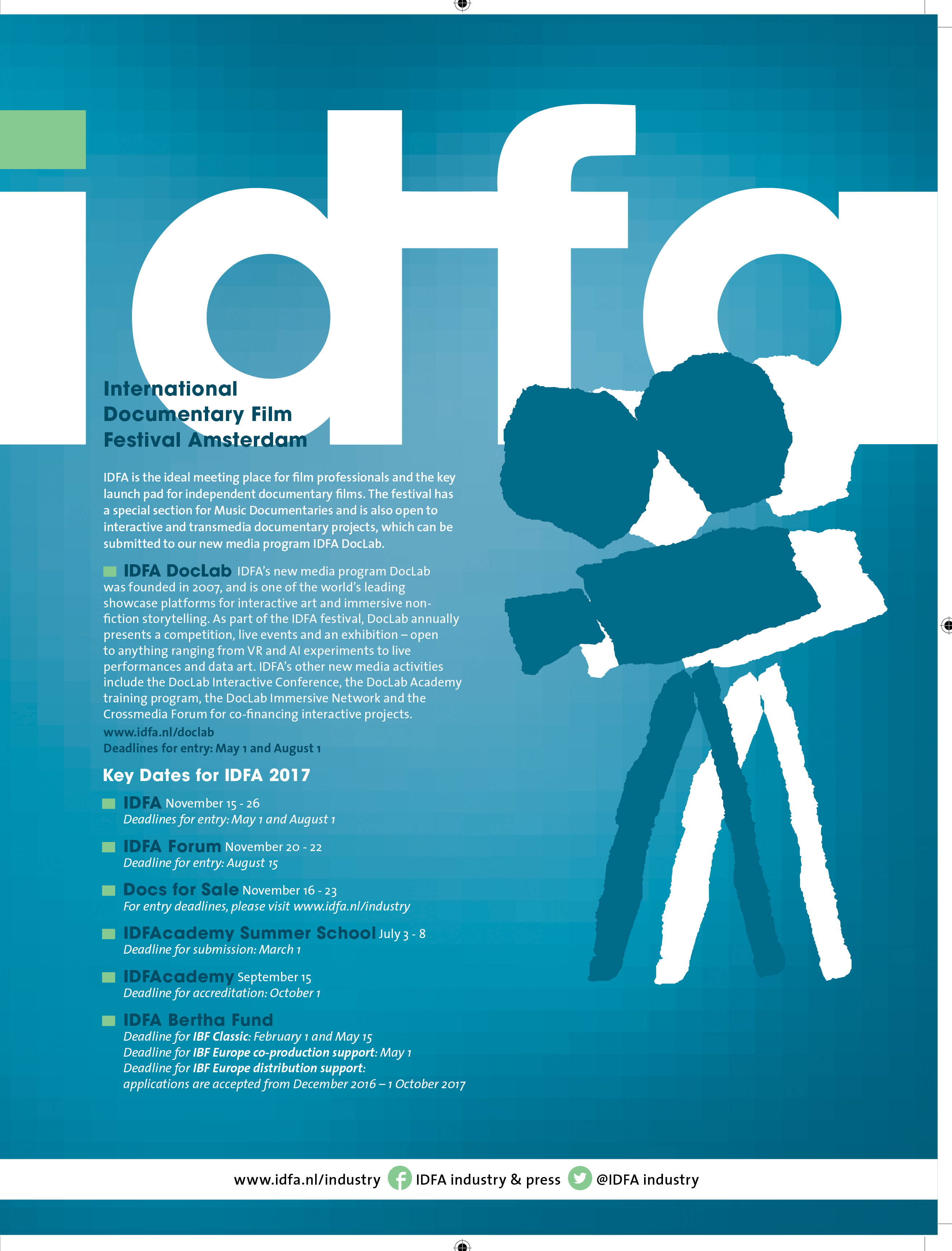
Félix & Paul Studios, the most acclaimed partnership in virtual reality filmmaking, actually began with its principals competing with each other. A decade ago, Félix Lajeunesse and Paul Raphaël were vying for the same directing gig in Montréal when they decided, instead, to collaborate on the project. The two have worked together ever since.
Though they both began their careers in traditional filmmaking with music videos and commercials, even in the beginning of their partnership, they created immersive experiences by using 3D projections in their own video installations. This resulted in “VR with a more narrow field of view,” Raphaël says.
Several years later, when consumers seemed poised for VR, the studio was ready. “Once the very first signs virtual reality might be becoming more of a consumer medium, and not so much of a research and military application … as soon as we saw that coming, we shifted all our resources to developing what ended up being that first VR camera,” says Raphaël.
Their early adaptation paid off, and in just a few years, Félix & Paul Studios has produced award-winning VR experiences, including content that every Oculus or Gear purchaser receives on his or her devices. The duo recently entered into a deal with Fox to create experiences based on films. Their nonfiction, documentary-oriented work includes capturing Cirque du Soleil performances and working with U.S. Presidents Obama and Clinton.
The three films in their Nomads series document nomadic people from different parts of the world: the Maasai in Kenya, the sea-living Sama-Bajau on the Borneo coast and Mongolian yak herders. In the films, the viewer is situated in moments in everyday life, the traditional documentary voiceover traded in for simply being there with the subjects. The series had high-tech and high-risk accomplishments, like underwater scenes and the placement of a camera in a herd of wild horses, but it also employed the lower-tech creative choice to simply fade in and out to gently move the viewer from scene to scene.
Sustaining the viewer’s experience is one of the creative principles that has guided both Félix & Paul’s technical innovations and creative decisions. “What to avoid in breaking presence, and what are the things that can break presence, all of those are extremely important to disseminate as widely as possible,” says Chief Technical Officer, Sebastian Sylwan.
Those creative concerns go hand-in-hand with technical execution. Raphaël says that they weigh factors such as how scale, movement, frame rates and sound behave differently in VR than in traditional filmmaking, and how they affect the viewer’s experience and ability to stay in the moment: “Interactivity is a big topic, when and how to do it, and what are the challenges as well. That’s one of the things with the most potential, but is also one of the hardest nuts to crack.”
Successfully maintaining that experience also means there’s a new set of concerns for filmmakers, whose audiences now don’t just lose the fourth wall, but also the first, second and third. And that calls for a careful approach to intense material.
“I think that people have gotten used to what it’s like to watch a violent scene in a film, but if you push too hard on that button on an unsuspecting viewer, that can have a measurable traumatizing effect on someone,” says Raphaël. “We haven’t done any violence or horror-based content yet, but we do have some stuff in development that’s gonna kind of scratch that surface a little bit, and so we’re going to be very careful in how we handle the intensity of that.”
At SXSW 2017, Lajeunesse and Raphaël, along with Sylwan and Chief Content Officer Ryan Horrigan, will present a “Master Class with Felix & Paul” for VR filmmakers. They plan to go through different projects they’ve produced and discuss both the challenges they encountered, and the solutions they found.
Central to Felix & Paul’s ability to execute has been its managing every step of the process, as a full-spectrum studio. Sylwan actually compares the current state of VR to the early studio system, when everything was done in-house.
“We kind of see this as the requirement for doing VR properly, or at the highest quality level at least,” he explains. “So what we want to talk about is really this full-spectrum concept in which you have to develop stories that are VR natives, and you have to build the technology to be able to shoot them. And you have to have the technology to post-produce them, and you have to distribute them.”
Raphaël says that having close contact with hardware manufacturers is one of the most important things filmmakers can do to succeed in a medium especially unforgiving of technical flaws. Not every filmmaker will be building their own gear, but they can talk to whoever is: “One of the main takeaways we want people to walk out with is that you need very tight integration at every step of the way,” says Raphaël. “If you don’t master as many of those pieces as possible, you’re going to fall short on some level.”
“I don’t think we will reveal our trade secrets, but (instead) the principles that guide the development of our trade secrets, or the principles that guide the way we approach projects,” says Sylwan. “It’s in our own interest that the industry develops as broadly, and as high-quality, as possible.”
Click the link for more information about attending the “Master Class with Felix & Paul”.
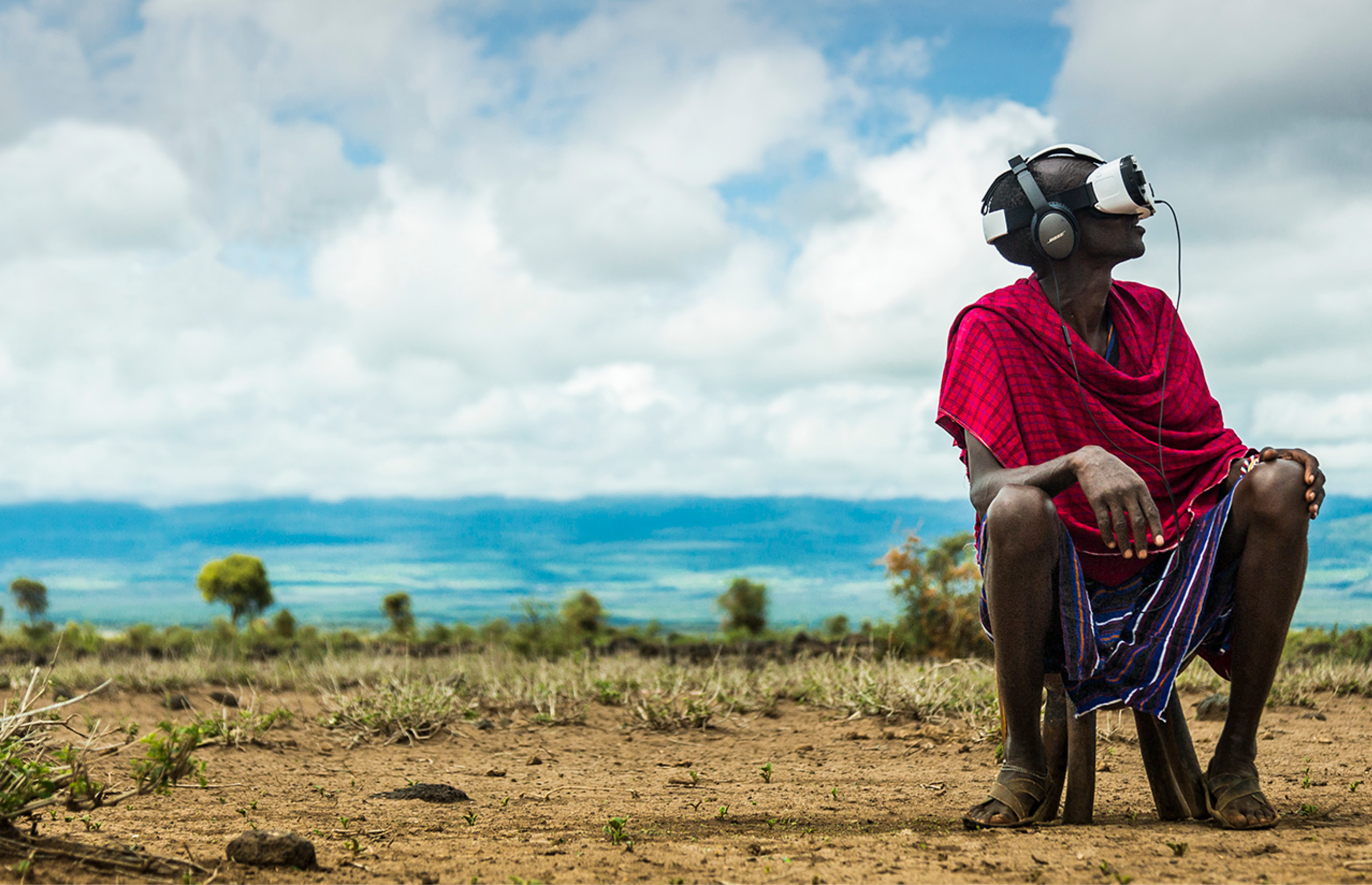
to VR’s Forefront
By Susan Elizabeth Shepard
Scene from the Nomads series, photo courtesy of Félix & Paul Studios
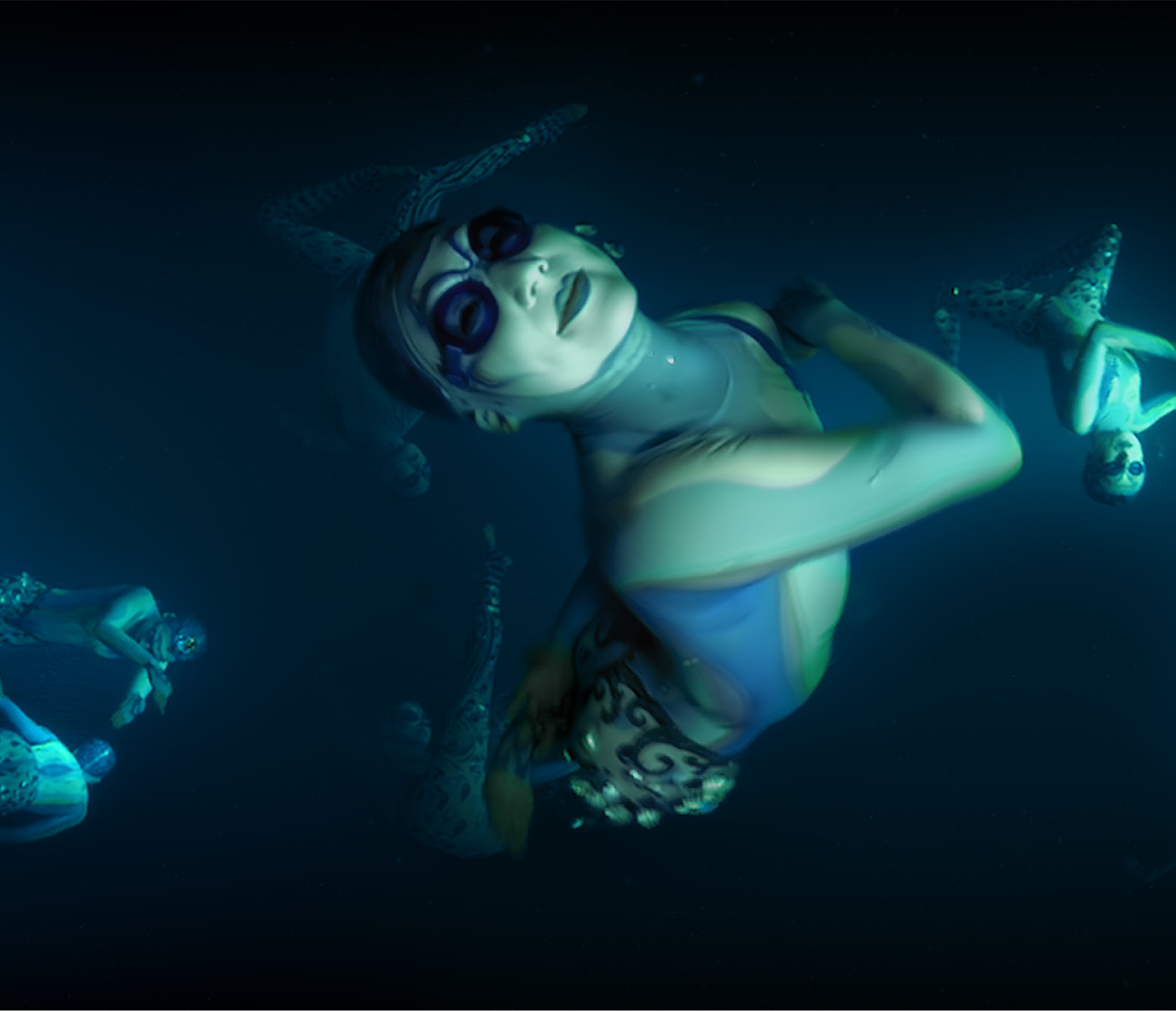
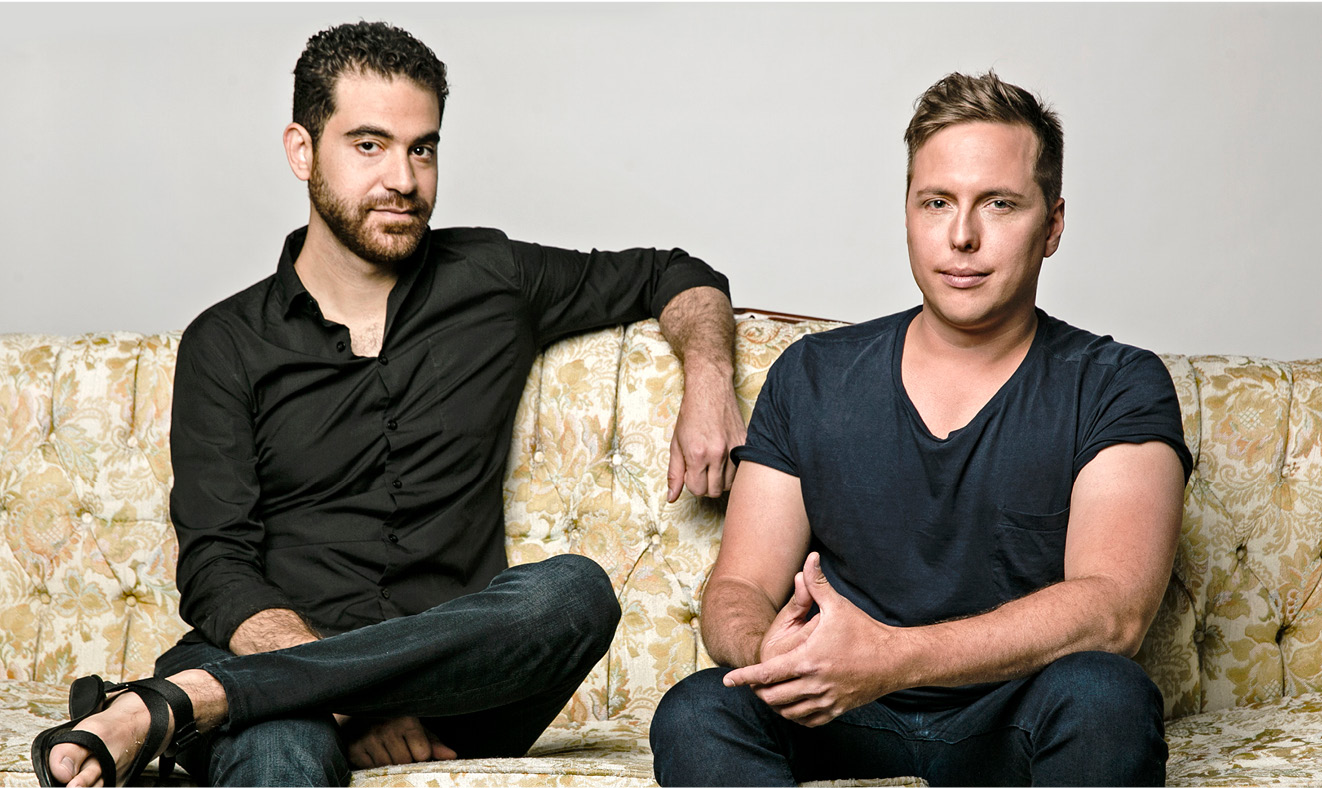
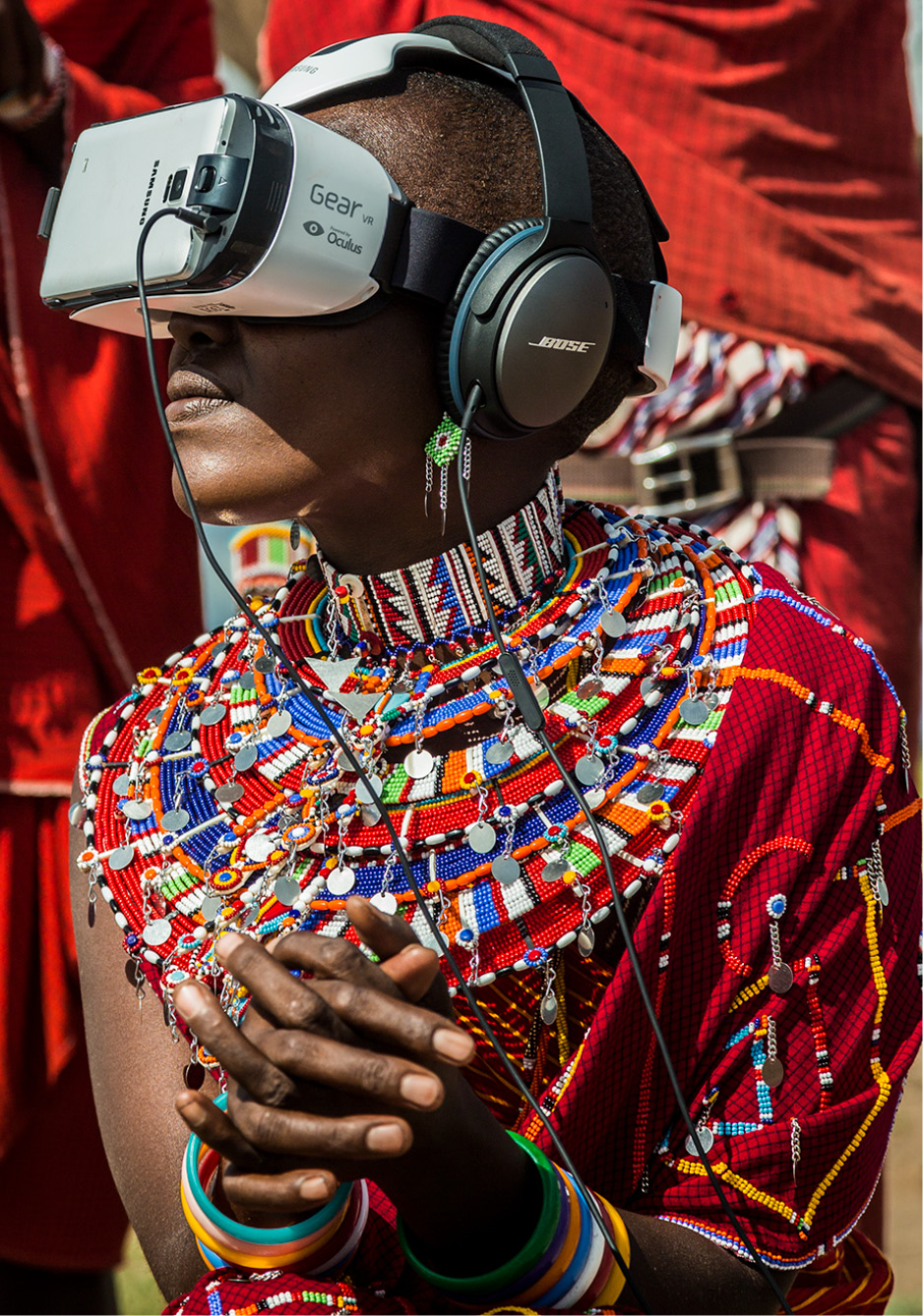
“Interactivity is a big topic, when and how to do it, and what are the challenges as well. That’s one of the things with the most potential, but is also one of the hardest nuts to crack.”
Early Adoption Guides
Félix & Paul
Paul Raphaël (L) and Félix Lajeunesse, photos courtesy of Felix & Paul Studios
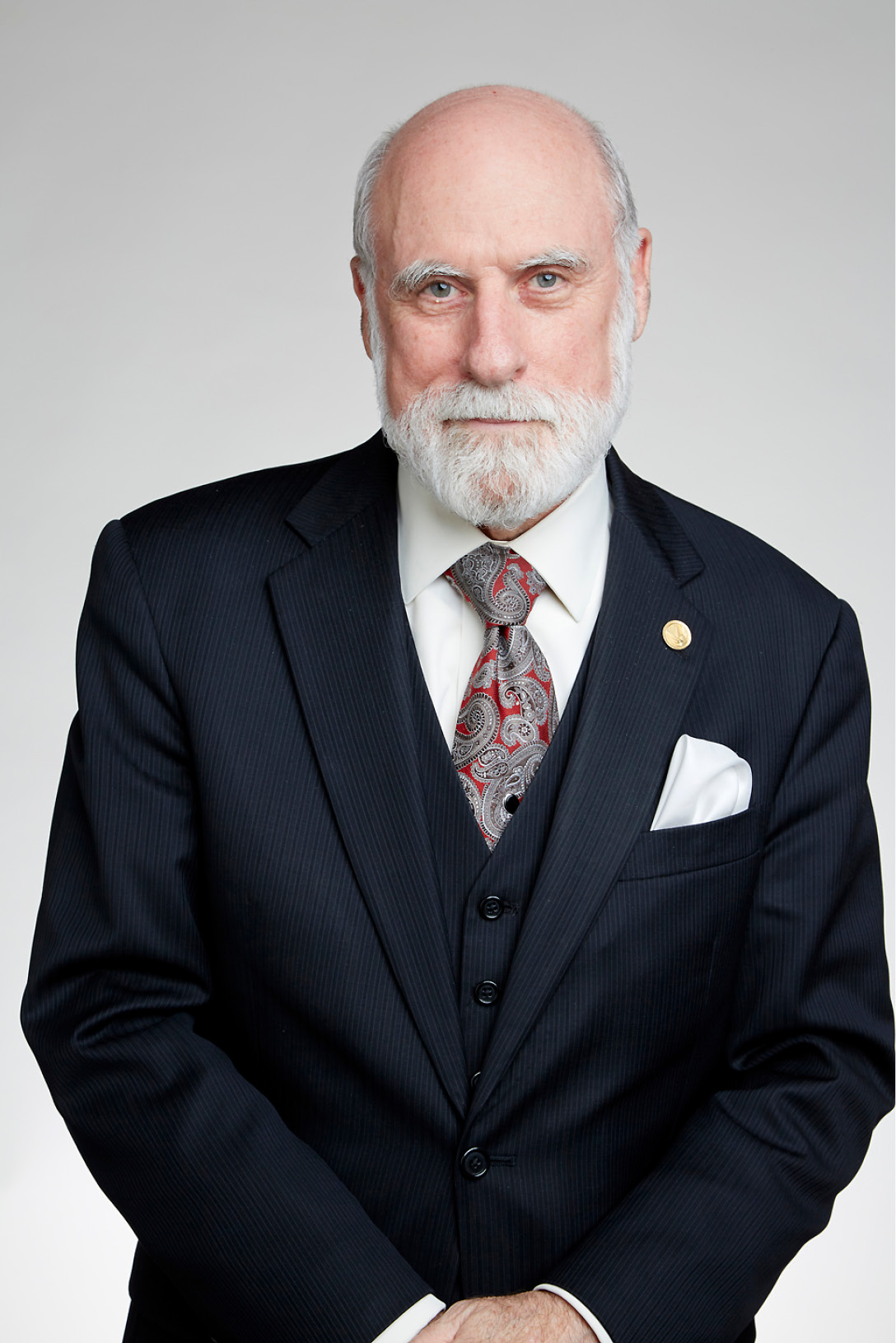
Vint Cerf, photo courtesy of IEEE
“Father of the Internet”
Looking to Expand Global Connectivity
By Patrick Nichols
Vint Cerf is a man with many titles: Chief Internet Evangelist at Google, founder of the People Centered Internet, recipient of the Presidential Medal of Freedom among other honors. This year, he will add something new to his already illustrious resume—SXSW speaker and attendee.
Even if you aren’t familiar with Vint Cerf, you almost certainly use a product of his work on a daily basis. Cerf’s pioneering research on Transmission Control Protocol (TCP) began at Stanford University in 1973. Combined with Internet Protocol (IP), the TCP/IP protocols would become one of the backbone architectures of the Internet. He would later be given the nickname “Father of the Internet.”
While appreciative, Cerf is quick to point out that he is not the only father figure. “Many cultures tend to look for heroes to whom they can attribute major accomplishments,” he said. “In the 1990s, when the World Wide Web became popular, the Internet was recognized as the underlying infrastructure that made the web useful and widespread. Sir Tim Berners-Lee developed the WWW protocols to run on top of TCP/IP. People asked where TCP/IP came from and discovered the first paper about the Internet that was written by Robert Kahn and me and published in May 1974 in IEEE Transactions on Communications. Bob and I were identified with the Internet’s early development.”
Countless others have contributed to the implementation, testing and expansion of their work in the ensuing decades. “Several thousand engineers have worked over the last 30 years on standards for the TCP/IP protocol suite in the Internet Engineering Task Force (IETF), and hundreds of thousands if not millions of others have developed applications for the Internet since it was first made operational on January 1, 1983,” said Cerf. “There is a great deal of credit to go around, so I feel that this term needs to be taken with some humility.”
After leaving the Stanford faculty, Cerf worked in executive roles at such influential technology organizations as DARPA, MCI and the Corporation for National Research Initiatives before joining Google in 2005. He recently co-founded People Centered Internet (PCI) with Mei Lin Fung.
Cerf will make his SXSW debut as a headliner of the sixth-annual IEEE Tech for Humanity Series. An IEEE Life Fellow, he will highlight the transformational potential of grassroots innovation in expanding global Internet connectivity.
“Once connected to the net, users have access to vast quantities of information, discoveries of new products, services and advanced scientific and engineering data from which beneficial applications can be built. We see the Internet as a 21st century means to improve GDP growth, education and opportunity to invent,” he said.
“A good example of how we’ll achieve this is a current project undertaken in Tunisia named TAWASOL, which translates to ‘connectivity’ from Arabic. PCI, in partnership with the IEEE Tunisia Section Special Interest Group on Humanitarian Technologies (SIGHT), is working to greatly extend Internet access and deliver practical, value-based application knowledge in order to educate and empower young people throughout the country.”
His goal for SXSW is to inspire those attending his session to generate new ideas and lend their entrepreneurial talents to help make the Internet more affordable, accessible and sustainable. “My hope is that people leave the session with thoughts to how they might get involved and make a contribution to these efforts,” he said.
Cerf also invites those unable to attend his session to join in the push for global connectivity. “We urge people to come to our website, peoplecentered.net, and to share their ideas and their willingness to join the effort to take the Internet where it has not gone before and to make it locally useful. We look for sustainable growth of Internet applications and Internet-enabled businesses that can serve local and global users.”
Such growth is likely to come through a blend of public and private sector initiatives, meaning there is room for corporations, NGOs and everyone in between. Cerf explains: “We think many business models are feasible, some commercial, some non-profit, some citizen and community oriented, some government sponsored. If the conditions that support, encourage and facilitate entrepreneurs are present, one can anticipate a great deal of creative development.”
While this will be Cerf’s first SXSW, he is a long-time admirer of the festival and looks forward to the experience. “More than anything, I am eager to mingle with the SXSW audience and participants in the IEEE-hosted events and parties, to hear more about what is exciting them, what challenges they see in the future, and what new technologies are coming to light that will bear fruit in the future.”
The IEEE Tech for Humanity Series will run March 11-16, with 15 total events including the Interactive session “Vint Cerf: An Internet For and By the People,” an official SXSW Party at the Driskill Hotel, and the “IEEE and PCI Future of the Internet Meetup” with Vint Cerf.
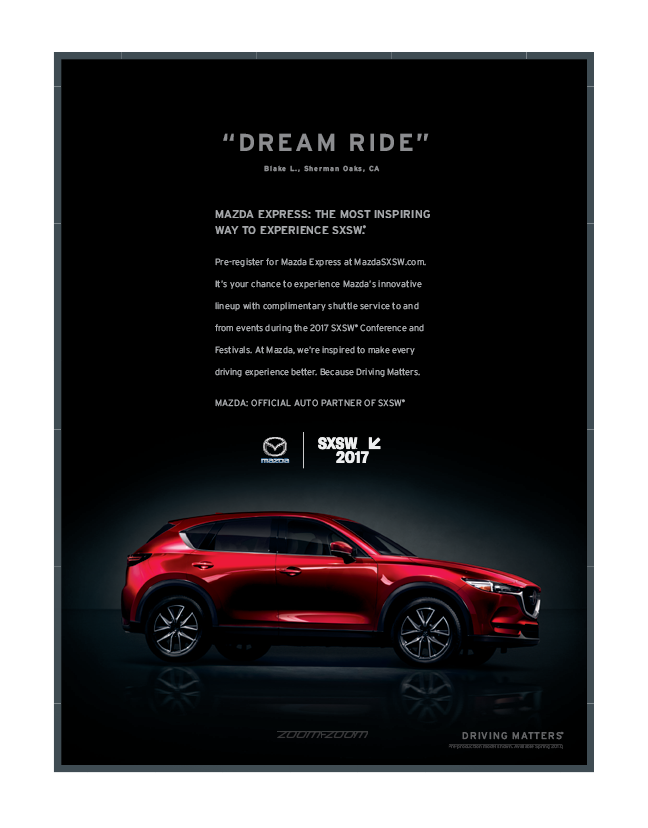
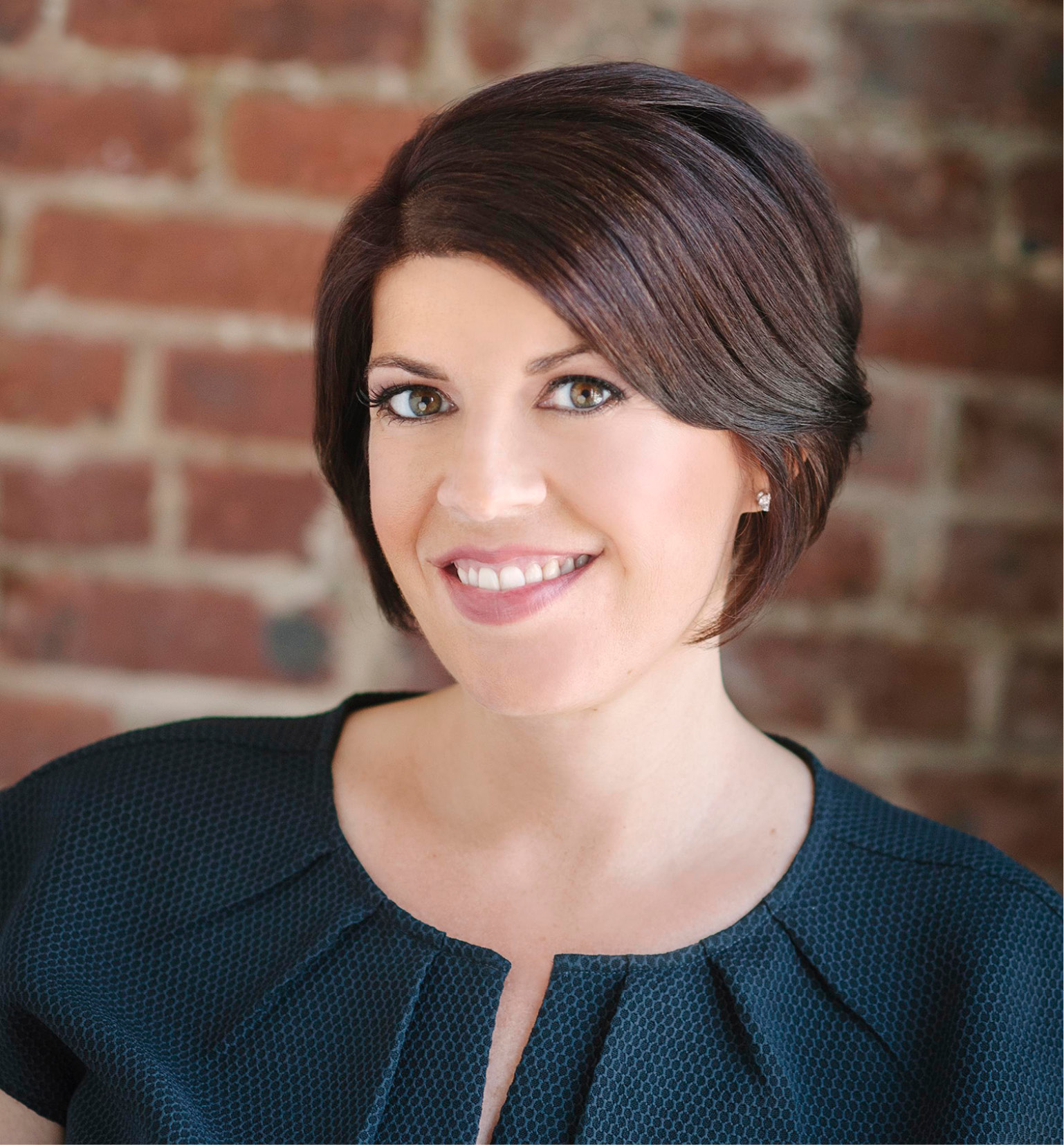
Fake News
Should Make Content
Consumers Pause
By Doyen Oyeniyi
Traditionally, media outlets have ignored fake news in an effort not to give it traction. Today, however, with the rise of social media and the ease with which consumers can get and share information, there is the need for a new strategy for vetting legitimate and false news. This was especially evident after the 2016 election, when claims that false news articles had affected people’s votes increased concerns - and prompted the search for a solution.
Kathleen Culver, an assistant journalism professor and the Director of the Center for Journalism Ethics at the University of Wisconsin-Madison, has been discussing fake news in her classroom since last fall. In August, Facebook fired its editors from the Trending news section after they were accused of being biased against conservative news. It was then that Culver noticed an uptick in fake news on Facebook, not just in the Trending section, but also in posts that her friends shared on her feed. Culver wasn’t the only one who noticed. She cited a Washington Post article that reported that three days after Facebook fired its editors, a fake story about Megyn Kelly being fired from Fox News for supporting Hillary Clinton was one of their trending topics.
The trend continued throughout the election. Stories that claimed that the Pope supported Donald Trump, and that Hillary Clinton sold weapons to ISIS were among some of the top fake news posts shared. An analysis by BuzzFeed News even found that those fake stories gained more shares and interactions than real stories from traditional and reputable media outlets. A Guardian report found more than 150 websites registered and apparently run by people in Macedonia were created to look like legitimate news outlets while peddling false information, all for the purpose of attracting readers and their profitable ad clicks.
“That’s an important piece of the fake news phenomena,” said Stephanie Agresta, a marketing expert and TechSet co-host of SXSW’s Social Media Lounge. “Some of it is absolutely motivated by financial interest, whether it’s the teen expert in the Balkans or entrepreneurs who just see it as a way to make significant amounts of money per month from Google and Facebook.”
As talk about the rise and influence of fake news picked up, focus turned to big companies such as Google and Facebook. Google AdSense allows nearly any website to be monetized through it, and Facebook’s dependence on only an algorithm for its Trending section made the platform a major hub for the easy spread of fake stories. Facebook’s initial response to the concerns was a defensive dismissal.
“Personally I think the idea that fake news on Facebook, which is a very small amount of the content, influenced the election in any way — I think is a pretty crazy idea,” Mark Zuckerberg, Facebook’s CEO, said during the Techonomy conference after the election. “Voters make decisions based on their lived experience.”
“But that misses the point,” Culver said. “If it’s easy to identify that this information is fake or that it’s a hoax, so why should it be there at all? Plus, some analyses show that the fake news stories received far better engagement than the top trending real news stories. So even if they were smaller in quantity, they were greater in impact.”
Although Culver agrees that it’s hard to pinpoint exactly how fake news affected the election, she believes that “You don’t have to show that something had a specific impact to show that it had negative consequences. This isn’t just about the U.S. presidential election ... it’s about the integrity of news on this platform that 1.7 billion people use.”
Later in November, Google and Facebook both took steps to address their fake news problems. Google stated it would ban websites that post fake news from using Google AdSense, and Facebook updated its Facebook Audience Network policy to include fake news in its category of websites for which it would not display ads.
In December, Facebook took more definitive steps. Its new program includes a feature that allows users to flag articles they believe are fake. Facebook also partnered with organizations that have agreed to the Poynter Institute for Media Studies’ International Fact-Checking Network (IFCN) code of principles to help fact check articles that have been flagged.
“The way it works is that we are one of a handful of news and fact-checking organizations who have access to a dashboard that Facebook created, that allows us to see a lot of the content that’s being flagged as fake by users,” said Eric Carvin, social media editor for the Associated Press. “We get to see those items. We make individual decisions on a case-by-case basis whether we want to write our own story debunking what’s fake or more importantly, reporting what’s true about the subject at hand.”
When a story has been marked as fake or “disputed” and a user attempts to share it, a pop-up warns that the story might be fake. That notification is what Culver refers to as “engineering ethics” because it makes consumers more aware -- and responsible -- for what they’re sharing.
“I think the onus is really on the consumer of content,” Agresta said. “My best advice is be more aware of the credibility of who is influencing you. Do more research. The main message here is for people to think twice before just sharing.”
Journalism is one of the 24 programming tracks at SXSW 2017.
Stephanie Agresta, photo by Elisabeth Mckay
the point. Because the audience out there, they love music, and they’re hungry. They’re deep diving on free sites looking for stuff that’s never been picked up or released yet.
And more artists are going independent and handling their own business, realizing they can reach their audience directly. It’s wide-open, and what we’re trying to do is keep pace and provide a trustworthy force that believes in that and wants to play as much music as we possibly can.
You worked at the Music & Video Exchange in London before you started DJing at XFM. Even with all the changes in the music business and in technology, the fundamentals of discovery aren’t that different, are they?
That’s exactly right! That sense of recommendation that you got from people that you respected. That idea of being able to rifle through a record bin. That feeling that you’re part of a community, and that you can get a recommendation from someone standing next to you in the hip-hop aisle, or from someone across the counter. All that stuff still exists. It’s just a new place for it. We want to create that experience in the digital age.
And pop changes shape all the time! When Skrillex came out, he spent a year touring, people were talking about him, he had an underground buzz, then he won a bunch of Grammys, and then that sound, which just seemed unlistenable to a lot of people when it first happened, it just became everywhere! Pop had changed shape.
And last year, pop changed shape again ... all of sudden it was dark and weird. The Weeknd’s “The Hills” being like a massive radio record here in America; that’s a HARD fucking record … distorted, and uncompromising, and lyrically it’s really on the edge, and yet, you couldn’t get it off the radio.
So pop changes shape all the time. And I would much rather go along and be surprised than try to make pop work for me, or for our station, or play what our version of pop is. How are we ever going to have any fun if we play what we think is pop? I’d rather learn that lesson myself!
Zane Lowe is a 2017 SXSW Conference Keynote (Music).
Did you design your job, or are you doing what Apple interviewed you to do?
I guess I did design the job. They were looking for potential DJs who might want to be involved in this sort of radio idea that Trent Reznor, Larry Jackson and Jimmy Iovine had. As that progressed, they sort of said, we’re looking for a creative director to help define what it is, and visually what it could be. We’re really lucky: Apple has never pulled the reins and said, ‘You guys are going too far out there.’ We take risks … the riskier the better in some respects.
Is there still a role for regional scenes in a global digital world?
That’s where it all begins! We’re listening to what’s moving in the U.K., and we’re saying, ‘oh wow, that’s really exciting. I wonder if anyone cares about that in Australia?’ We’re constantly searching. We’re in a situation where we can cherry-pick the most exciting shit and reach corners of the globe really effectively and really easily.
So how different is it programming for a worldwide audience?
There are big challenges. How do you program a livestream when you’re dealing with all different time zones and different countries and different languages? We’re in cities and towns that I’ve never heard of, and time zones that are asleep when I’m awake and awake when I’m asleep. When you’re only dealing with one time zone, city or town, you know what works best when and where on the schedule.
But, we’re in a different place. Those challenges actually helped to really refine the mission statement. We want to create a community experience and make music the event … to create a place where we could all talk about it at the same time.
Have radio and record companies’ ideas about taste always been more narrow than listeners’ actual preferences?
They were the gatekeepers, and now it seems like the walls have fallen down. That’s why we’ve all decided to curate our own lives. If you’re taking a look at a small list of records and think ‘this is going to satisfy our audience,’ you’re missing
Zane Lowe is a music fan just like the rest of us, albeit a music fan who also has a Grammy (for co-writing and co-producing Sam Smith’s “Restart”), will present a live DJ set at this summer’s Governor’s Ball Festival and bears as much responsibility as anyone for determining where digital music and music streaming might go next.
After a decade-plus at the BBC’s Radio 1, Lowe became the creative director of Apple Music’s Beats 1 in 2015. In addition to hosting his own show, conducting artist interviews and taking a lead role in programming the station, Lowe spends a lot of his time lining up artists to do their own thing on Beats 1. “We’re as insatiable as the audiences,” he says. “If you don’t like music, then we’re not for you.”
Lowe recently shared his insights on his job and the music world, at large:
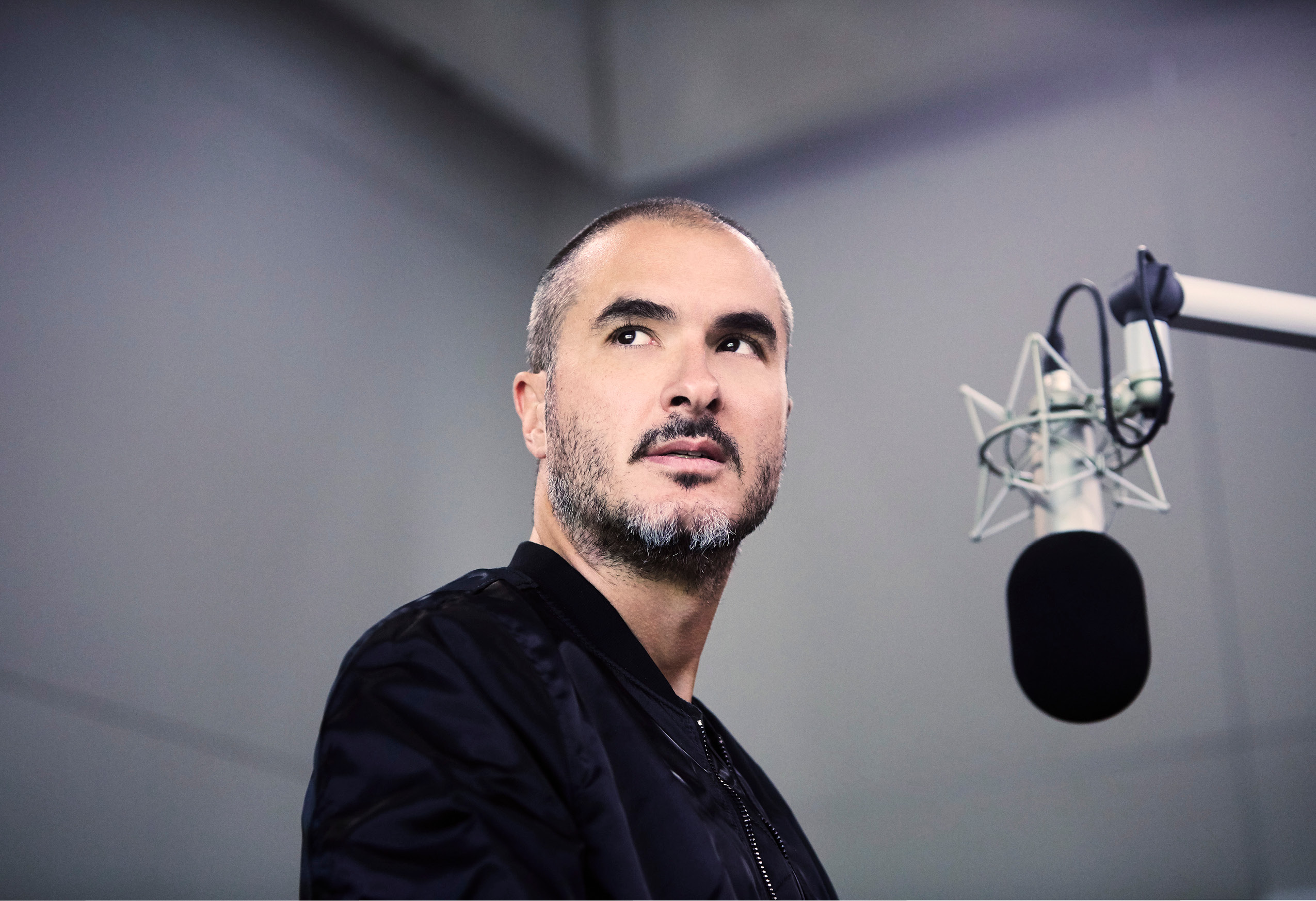
Zane Lowe, photo courtesy of Apple

The Beats Go On
For DJ Zane Lowe
By Jason Cohen
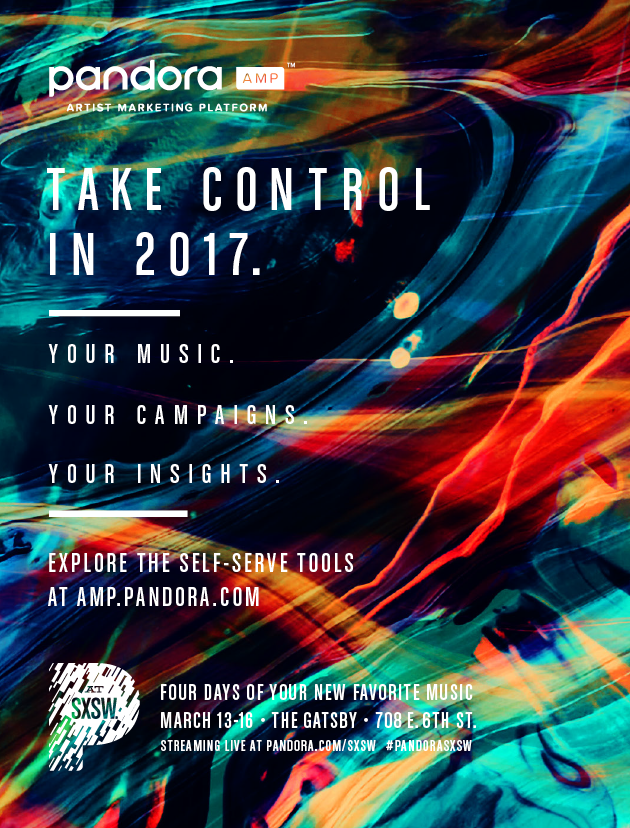

Game
Designers
& Musicians
Share Interests & Opportunities
By Dan Solomon
When Brjann Sigurgeirsson, CEO of games studio Image & Form, began work on SteamWorld Heist—the sequel to the wildly successful Nintendo 3DS 2013 platform action/adventure game SteamWorld Dig—he knew that one of the areas in which he wanted to improve the player’s experience was the music.
Early in Image & Form’s existence, that was an afterthought. The developers would leave the music until the last minute, then add it on the cheap after finding something acceptable on a royalty-free website. But as the studio, and the games industry as a whole, have evolved, so has the thinking about how music can help create a more engaging, immersive world for the player to enjoy. Suddenly, music is at the forefront of designing a compelling game.
“These days, we try to think of it in the same way we think about graphics,” Sigurgeirsson says. “The right kind of music is really important for our games in order to convey the right mood.”
When it comes to SteamWorld Heist, the developer searched for a way to make the music a gameplay element that fans would embrace. Citing inspiration like the role-playing game (RPG) Bastion, Sigurgeirsson’s team included bar scenes where players recruit new crew members, buy equipment, and more—and because they’re bars, he says, “They’re always flooded with music.”
When the Swedish studio found the San Diego, California-based band Steam Powered Giraffe, he knew he was onto something special. “It turned out to be a more integrated part of the game than we had intended at first, since we found the perfect band,” he says. “They pretend to be steam-driven robots, so it was a perfect match. We could therefore animate them and have them in the game as the ‘constant band’ that tours all of the bars in space that our heroes go to visit.”
That sort of synergy is rare, of course. There are only so many games about steam-powered robots, and only so many rock bands who perform as steam-powered robots, so the key to finding new creative—and business—opportunities in the comingling of music and games isn’t usually so literal. That doesn’t mean that music can’t still be a huge part of how players interact with, and experience, the game that they’re enjoying.
For Image & Form, there are a few different things that music can accomplish. A spooky melody can always set the tone for a spooky scene, but as game developers innovate, and truly collaborate with musicians, music is used for broader purposes.
“We try to use music as much as possible for setting moods, but it can also be super useful to indicate movement. Panning the sound can really work well, especially if you’re playing with headphones. Other games do a tremendous job of using music in clever ways,” Sigurgeiersson says, noting an iOS game called Mini Metro that uses a music algorithm to compose as you play.
From the musician’s perspective, the benefits of pursuing work in games are multifold: Financially, it doesn’t hurt to have more opportunities for licensing and syncs. And the exposure to an audience of gamers who may seek out new music primarily through their consoles is no small benefit, either.
Dutch DJ/producer Oliver Heldens knows the power of all of that. He licensed the song “Good Life” to French games developer Ubisoft—the company behind blockbuster franchises like Assassin’s Creed and Prince of Persia—for the company’s new Watch Dogs 2, and turned the entire project into a large-scale collaboration, basing the video for the song on the game.
“Producing for projects like that can be a really big step in a DJ’s career,” Heldens says. “It’s not what we usually do, but it’s definitely very interesting to get the chance.”
It’s not just interesting because of the career rewards, either. While Heldens had produced “Good Life” before Ubisoft chose it for the collaboration, he’s excited about the creative possibilities of working in games. “I can imagine that when you compose your music around a game, it can definitely be challenging—there are more factors to take into account, it has to fit the overall vibe of the game, those sorts of things,” he says. “These challenges keep our work really interesting.”
“If a good opportunity arises, there needs to be a sort of instant connection for me,” Heldens continues. “With Ubisoft, it was there, because I already play a lot of their games, so it felt right instantly. If that instant connection is there, most of the time the rest will fall into place.”
Finding artists who are ready to serve as collaborators, and who are passionate about the project, is the key from the game developer side, too. At Image & Form, that can be anybody—Steam Powered Giraffe, for example, had never done music for a game before signing on to SteamWorld Heist. Meanwhile, Sigurgeirsson says, “For our next game, we’re doing the opposite, working with someone who is actually a famous game-music composer.”
Ultimately, the mix of music and video games is like any other creative collaboration—it’s not so much about a formula as it is finding the right partner for the right project, and trusting the process. “It’s all in the exploration, I guess,” Sigurgeirsson muses. “We think it’s interesting to try different things. The results will never be the same, but they’re usually very good.”
SXSW Gaming Expo will be March 16–18. SXSW Music Festival runs March 13-19.
Oliver Heldens, photo by Piper
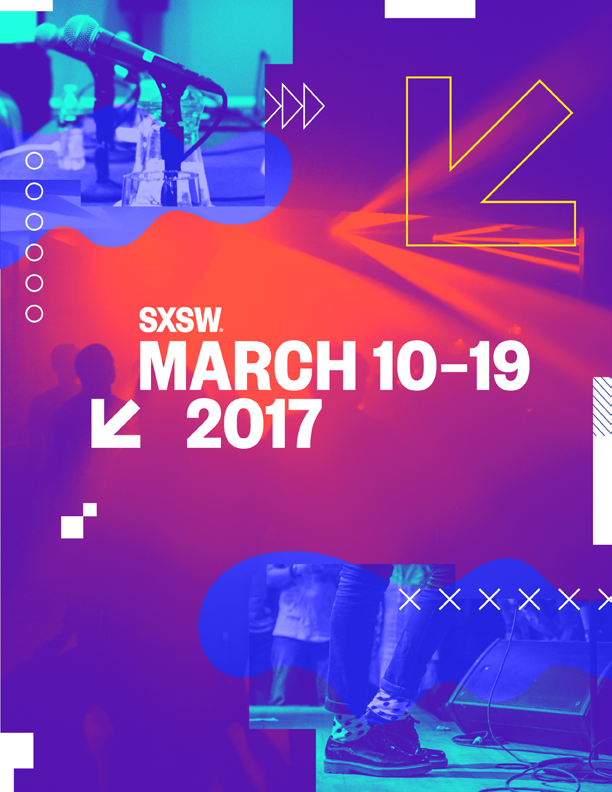
A Destination for Unexpected Discovery

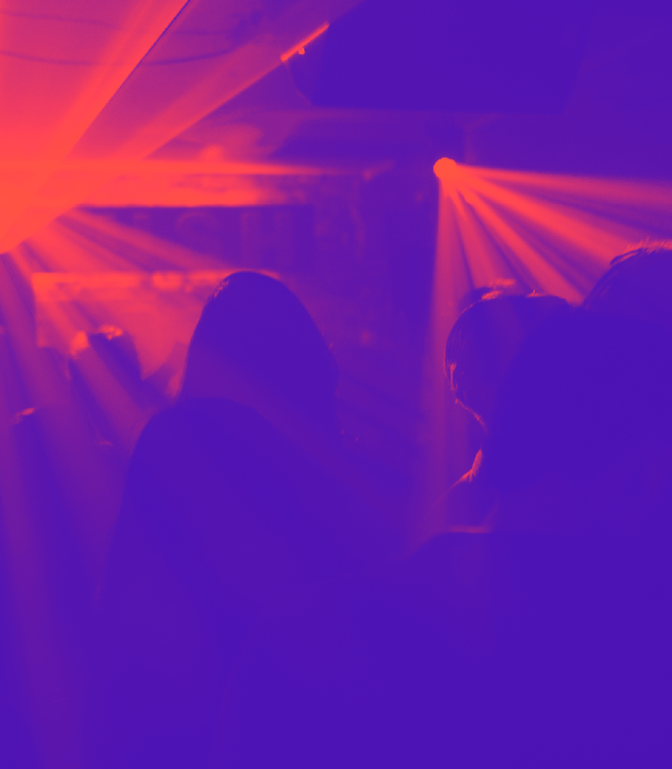


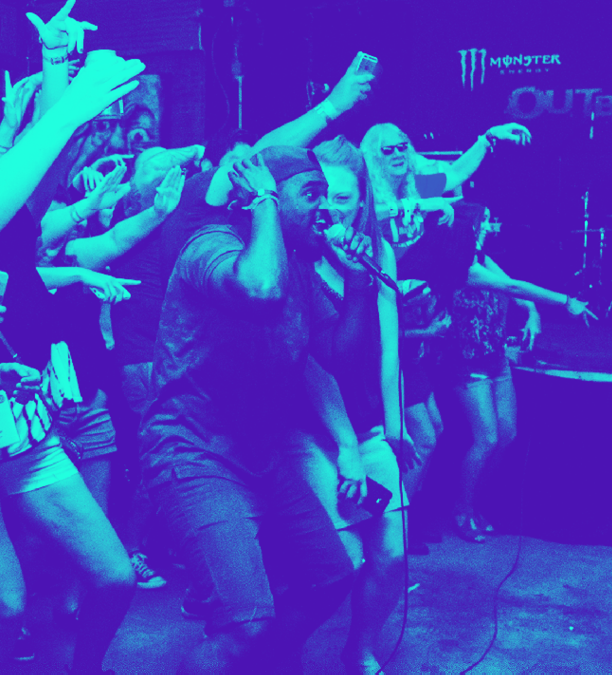
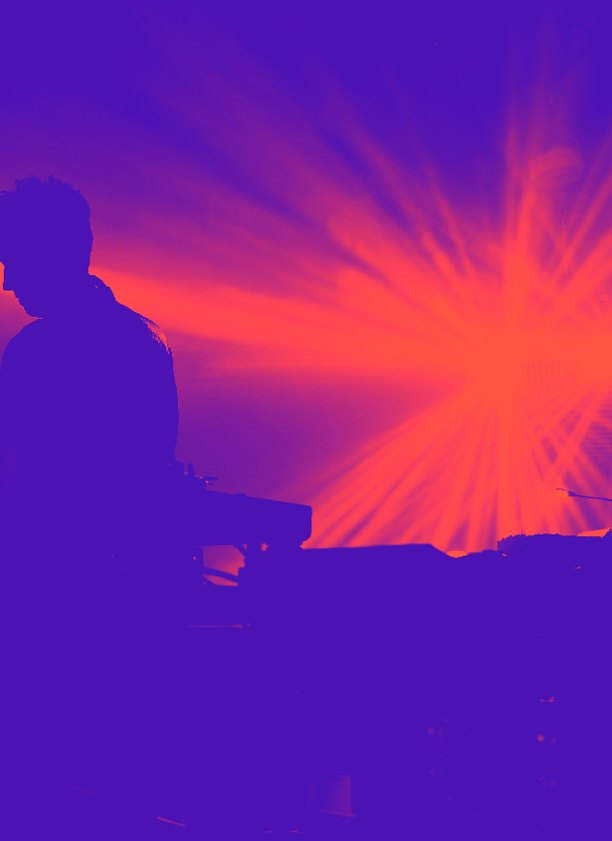
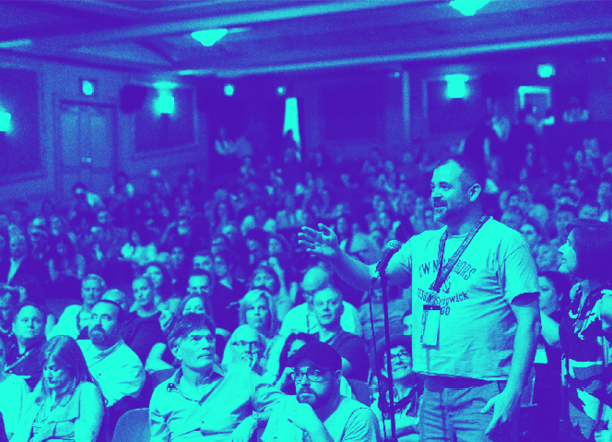





expanded Access for 2017 with 2-line system
Registrants Can Now Attend
Nearly All SXSW Programming & Events
The two line system allows entrance based on your badge type. Primary Access is reserved for events related to your specific badge type + Platinum badgeholders. Not a Platinum badgeholder? You’ll still gain Secondary Access for all other events!
Look for the icons on signage and SXSW event markers, like the example below, to navigate the primary & secondary access lines. Convergence programming and exhibitions are open equally to all SXSW badges and therefore will not have a primary access line.
Badge Types & Access
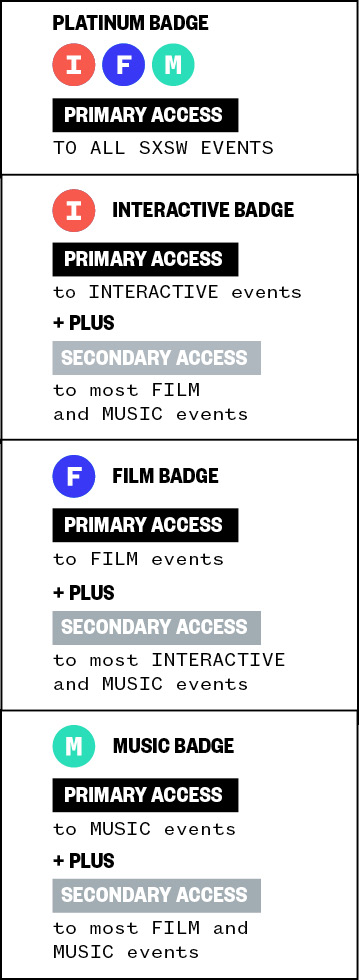

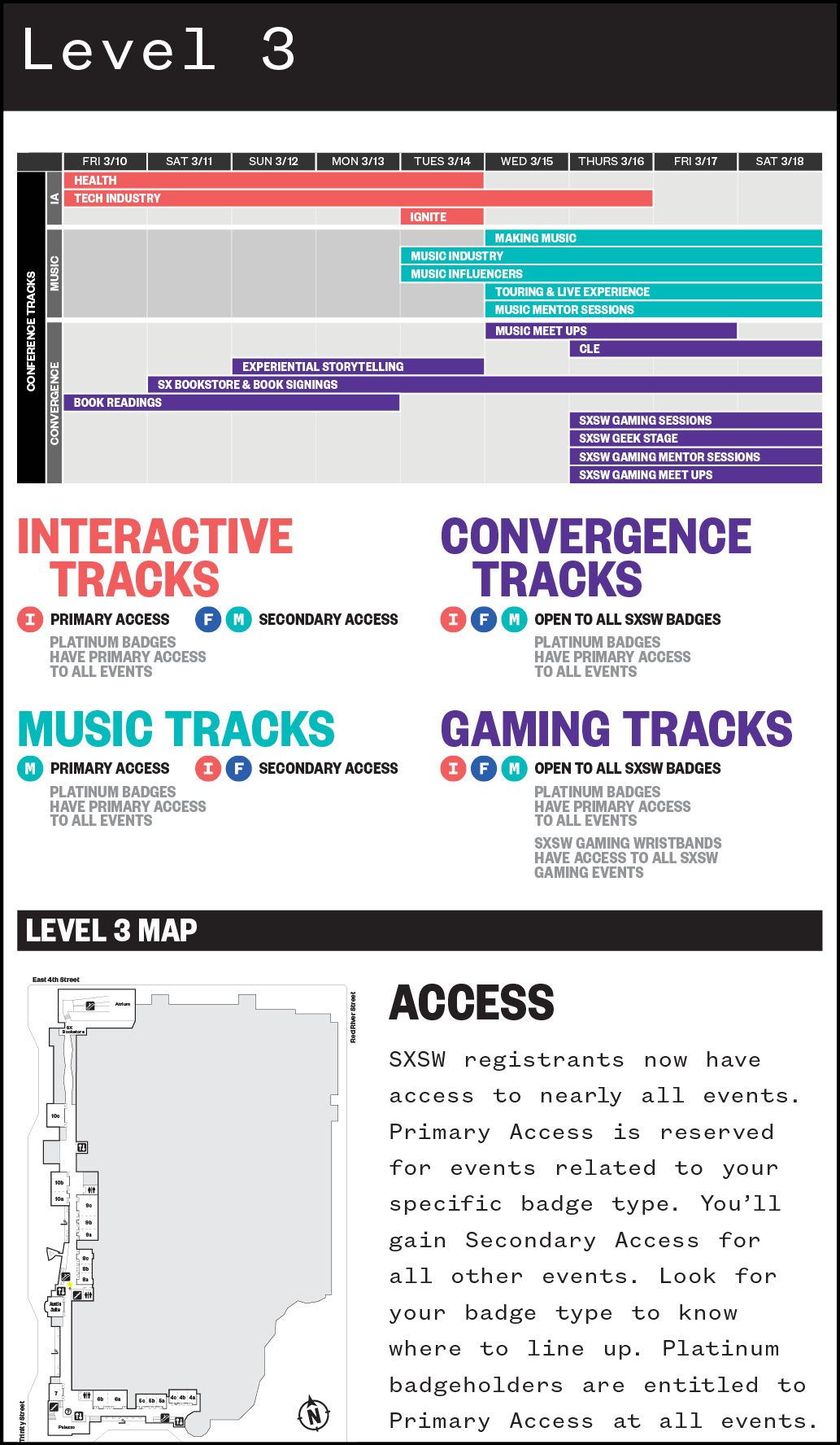

Exploring What’s Next in
Entertainment, Culture & Technology
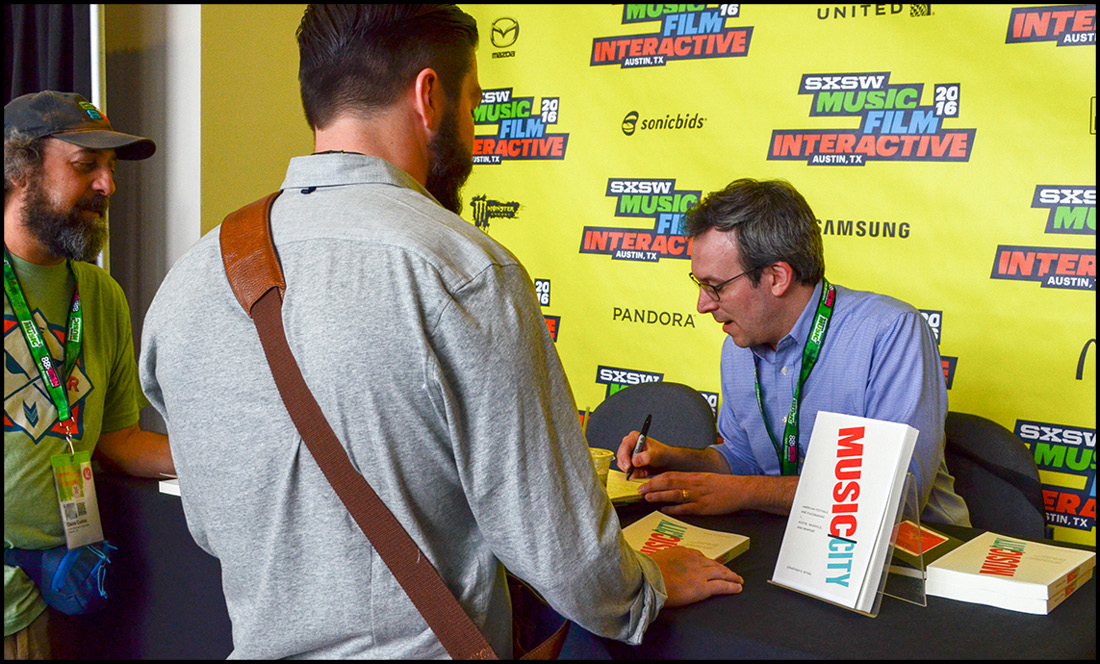
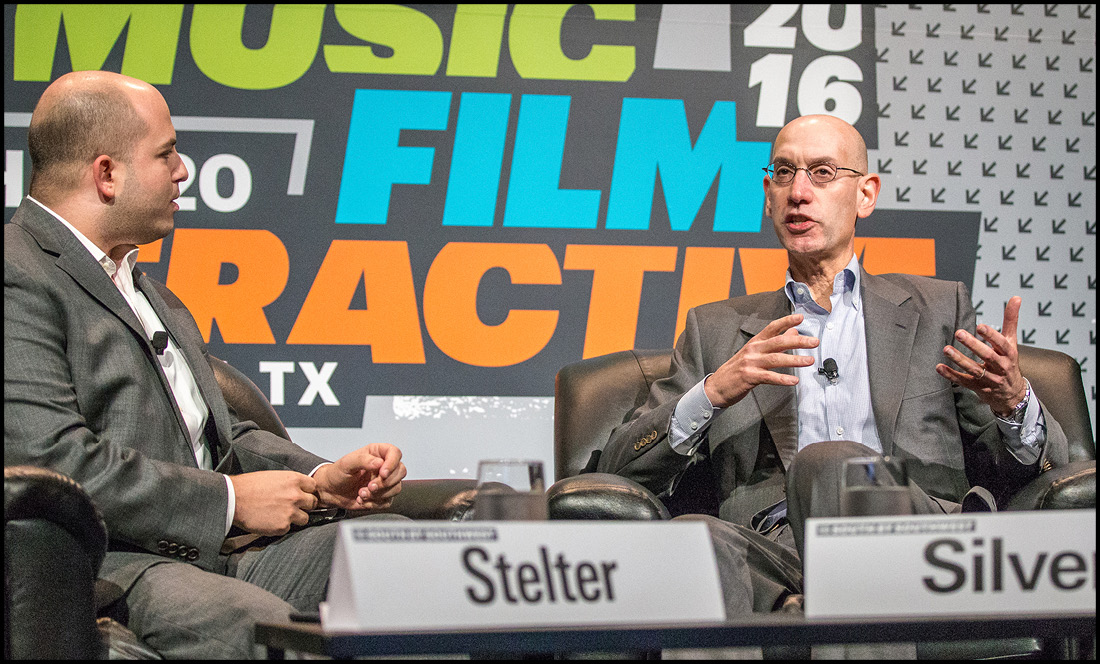
Photo by Nicole Burton
Photo by Andy Nietupski
24 Track Descriptions
 Convergence
Convergence
CLE: Continuing Legal Education discusses legal perspectives on industry trends. Attorneys attending may receive up to 4 hours of CLE credit focusing on Film & Interactive issues, and 8 hours of CLE credit focusing on Music (includes 1 hour of ethics).
Experiential Storytelling: New technologies are redefining the ways in which audiences experience their world.
Food: This track explores ways in which technology can be leveraged to transform the food industry.
Journalism: These sessions explore how technology will impact the distribution of news, journalism and analysis; whether it’s streaming, online content, attribution or storytelling.
Social Impact: Highlights innovative ideas from the creative industries that are contributing to a better, more equitable world.
Sports: This three-day track tackles the future of sport in all its forms from a cultural and technological perspective.
Startup Village®: Covers topics ranging from B2B, B2C, Bootstrapping, Business Strategy, Future of Money, Startups, and anything in-between.
VR/AR: Virtual and augmented reality technologies are enhancing our ability to perceive the world that surrounds us, and redefining how we experience it.
 Interactive Priority
Interactive Priority
Brands & Marketing: Explore the constantly evolving world and work of agencies and their clients. From native advertising to brand storytelling to predictive analytics, there’s something for everyone.
Design: Design shapes how we interact with technology and our world. Through hardware or software, how we approach each element through design is crucial to its success or failure.
Development & Code: Covering the process of development in every aspect, this track provides insight, instruction and inspiration for engineers and developers. All skill and experience levels are welcome.
Government: Topics include policy and civic engagement on the local, state, and federal level; the relationship between government and technology; big data tracking, and surveillance concerns.
Health: Focusing on innovations that build and support the ecosystem of patients, providers, payers, policy makers, designers, entrepreneurs, and investors to improved health and healthcare.
Intelligent Future: This track embodies the realm of unfolding possibilities where intelligence is embedded in every aspect of life.
Style: Serves as a platform for creatives in the fashion and technology community to converge, learn and innovate while delving into topics ranging from the future of retail, wearable technology, sustainable fashion, and more.
Tech Industry: These sessions examine what is significant today as well as what we project to be trending tomorrow from the innovative developments in the United States and the international technological ecosystem.
Workplace: Covering career development, work-life balance, co-working and alternative spaces, future of work, managing decentralized companies, HR issues, and employee rights in an ever changing work environment.
SXSW Special Programming
Book Signings: Provide attendees the opportunity to meet their favorite authors, purchase their latest work, and return home with an autographed copy.
Music Startup Spotlight: The SXSW Music Startup Spotlight focuses on some of the most innovative new companies in the music world. The Spotlight coincides with the popular Music Startup Village programming, where VCs, entrepreneurs, and the tech-minded music industry will be meeting/mingling/discussing in sessions across the hall.
Tech Startup Spotlight: Discover emerging startups at an engaging reception that provides two unique opportunities to meet with and get demos from some of the brightest startups today.
SXSW Hackathon: 24 straight hours of buzzing, high-tech creativity as music, VR/AR, and film hacker/creators use their programming knowledge and our collection of music, visual APIs, and coding assets to develop their industry-changing prototypes and compete for cash prizes, awarded by our panel of celebrity judges.
Conference Programming Overview
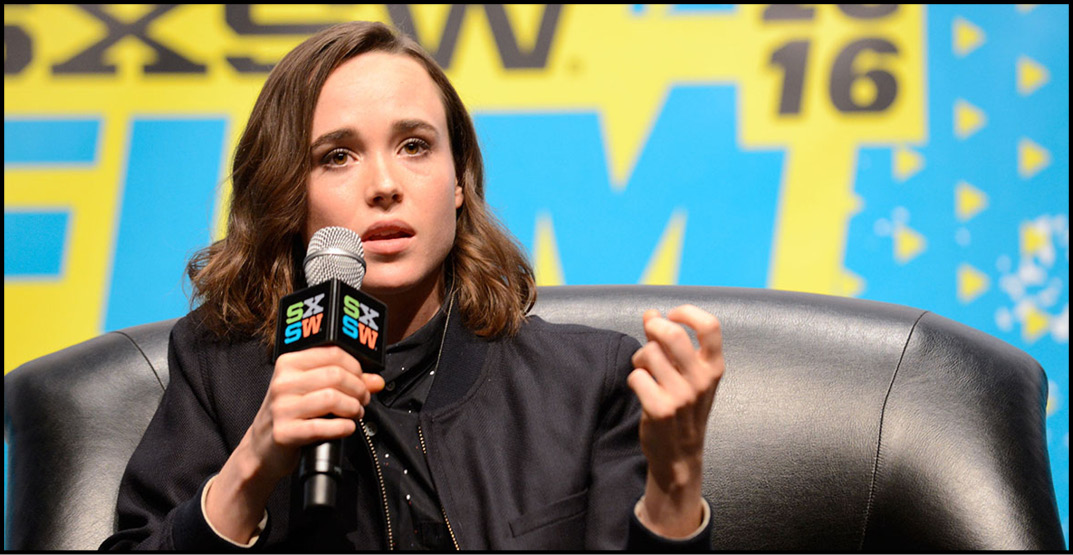
Photo by Robert A Tobiansky
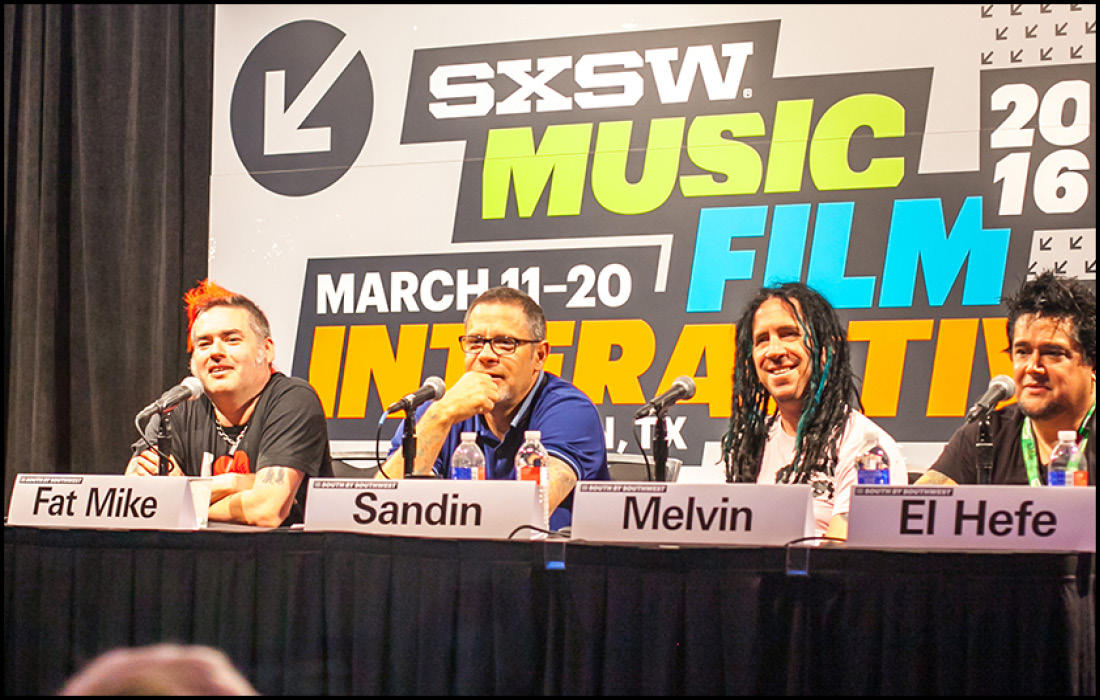
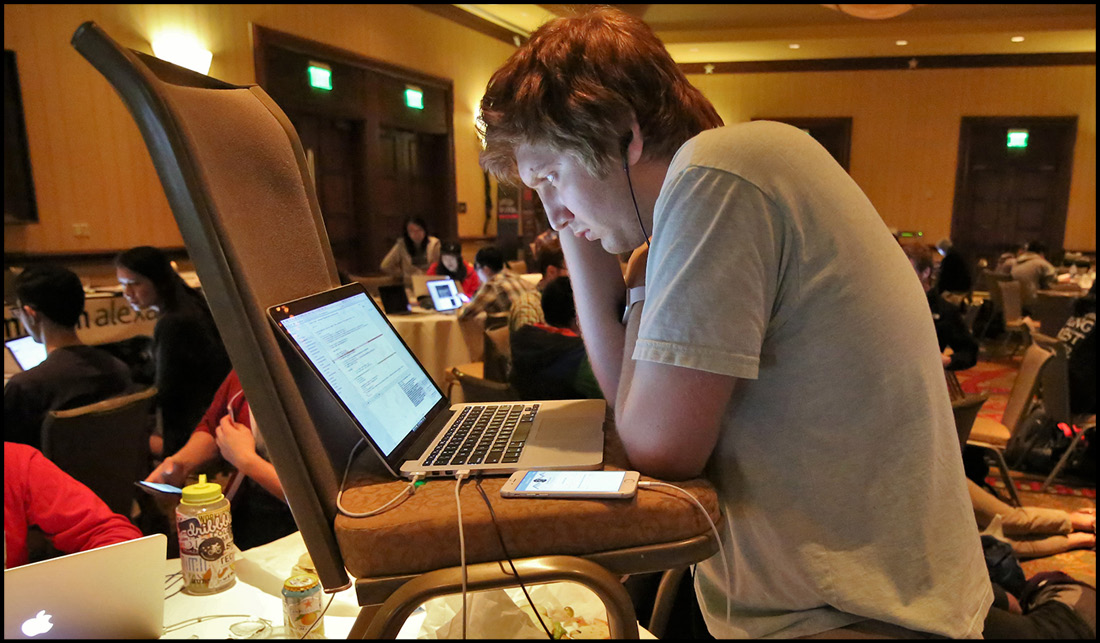
Photo by Edmond Lorts
Photo by Randy & Jackie Smith
Track Formats
Book Readings: The Book Readings at SXSW Interactive last twenty minutes and showcase the latest, most innovative titles, from Entrepreneurialism to Health and MedTech, and all things in between.
Demo Listening & Pitch Sessions: Demo Listening Sessions provide artists and registrants direct feedback from music professionals like producers, A&R reps, publicists and venue talent buyers. Pitch Sessions offer the same sort of feedback from licensing, sync, and music supervision experts who provide honest opinions on licensing music to film, commercials, TV and more. We will be accepting music submissions prior to the 2017 SXSW Music Conference.
Featured Sessions: Featured Sessions present a snapshot of the most transformative ideas shaping our future.
Featured Speakers: Looking for mind-expanding presentations by industry leaders? SXSW Conference Featured Speakers bring together some of the biggest and brightest names of our time.
Keynotes: These powerful presentations by diverse visionaries from the ever-evolving worlds of Interactive, Film, and Music are the center of the SXSW Conference.
Mentor Sessions: Mentor Sessions offer one-on-one interaction with professionals from all aspects of the music, film, and interactive industries. Advance sign-up is required and access is limited to badge type.
Round Tables: Three industry experts and SXSW attendees get together for informal and enlightening discussions.
Solo / Dual / Panels: Most Solo, Dual and Panel programming is sourced through PanelPicker®. Solo and Dual presentations offer a deep dive look into more targeted topics. Panels typically feature a moderator and 2-3 additional experts who represent different perspectives and opinions in a given area, making for a lively discussion.
Workshops: Offer in-depth, hands-on, advanced level information enabling registrants to gain more expertise in their particular area of interest. Sessions are two to four hours. Advance sign-up is required and access is limited to badge type.
 Film Priority
Film Priority
Entertainment Influencers: Inspiration from thought leaders, experts, and innovators that will last beyond your time at SXSW.
Film & TV Industry: Learn about the inner workings of the film and TV industry. Sessions will focus on the business side of things.
Making Film & Episodics: Learn everything you need to know about developing and crafting your project, from screenwriting to working with your subject to post-production, and beyond.
 Music Priority
Music Priority
Making Music: Explore the future of making music, and how you can make your music better, more easily, and more creatively.
Music Industry: Experts and thought leaders will guide you through today’s multifaceted and global music business.
Music Influencers: Music has a rich history, with amazing and legendary stories to tell. Find inspiration, insight, and guidance from the brightest in the music world.
Touring & Live Experience: Venues and festivals, large and small, support the dynamic touring industry that many artists increasingly rely on. Discover new innovations and sage advice on today’s touring and festival industry.
For more information on badge types & access click here.


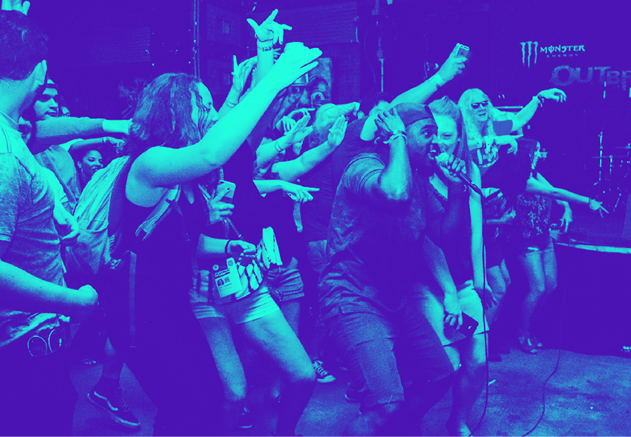





SXSW Official Parties & Lounges
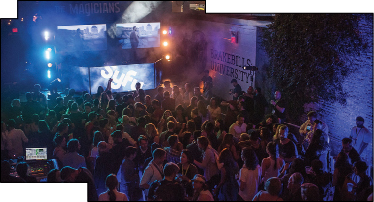
Lounges
SXSW Registrants Lounge
Friday, March 10-Saturday, March 18
Brush Square Park
Health Lounge
presented by The Vision Council
Friday, March 10-Tuesday, March 14
Austin Convention Center,
Austin Suite – 3rd Floor
Startup Village Lounge
presented by J.P. Morgan
Friday, March 10-Tuesday, March 14
Hilton Hotel Room 406
Mother’s Room
presented by Kimberly Clark
Monday, March 6-Saturday, March 18
Austin Convention Center, Room 7
Brandcast Design Lounge
Friday, March 10-Tuesday, March 14
JW Marriott Room 301/302
The Comcast Social Media Lounge
hosted by TechSet
Friday, March 10-Tuesday, March 14
Austin Convention Center, Room 19ab
Bazaarvoice at SXSW
Saturday, March 11
Sellers
Photo by Lauren Lindley
Parties & Lounges
Interactive Mix at Six Party
presented by Aurasma
Saturday, March 11
ScratcHouse
Interactive Innovation
Awards & Pre-Party
Tuesday, March 14
Hilton Hotel, Governor’s Ballroom
Interactive Closing Party
presented by Media Temple
Tuesday, March 14
Stubb’s BBQ
Music Opening Party
sponsored by Sensu Music
Tuesday, March 14
Maggie Mae’s
Music Speaker Reception
sponsored by OnTour with
Ticketmaster
Thursday, March 16
Cooper’s BBQ
*Open to SXSW speakers only
SXSW Gaming Cosplay Kickoff
Thursday, March 16
Hilton Hotel Grand Ballroom
SXSW Gaming Closing Party
fueled by Monster Energy
Saturday, March 18
Monster Outbreak House
SXSW Closing BBQ &
Softball Tournament
Sunday, March 19
Krieg Field
Stay tuned to sxsw.com for more party & lounge announcements, including events that require an RSVP.
Investor Lounge
presented by GoodShift Ventures
Friday, March 10-Tuesday, March 14
Hilton Hotel
Esurance Lounge
Friday, March 10-Saturday, March 18
Austin Convention Center
Mazda Lounge
Friday, March 10-Saturday, March 18
Austin Convention Center
Bud Light Lounge
Friday, March 10-Saturday, March 18
Austin Convention Center
Parties
Film Opening Party
presented by Broad Green Pictures
Friday, March 10
The Mohawk
Film Intermission Party
Tuesday, March 14
Palm Door on Sixth
Interactive Opening Party
Friday, March 10
Handsome
Official SXSW Parties provide incomparable opportunities for registrants to eat, drink, relax & socialize with fellow SXSW attendees. Lounges, located in various SXSW venues, are places to mingle, unwind & learn more about our sponsors. Many lounges also offer refreshments, giveaways & special guests.




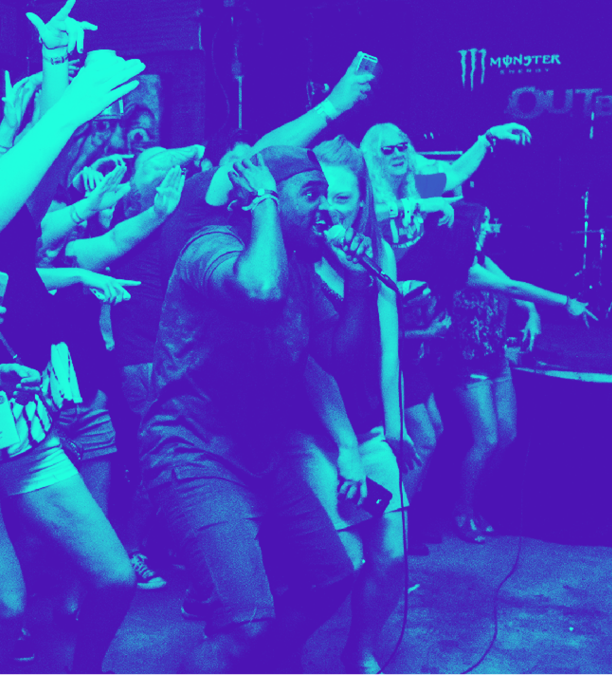
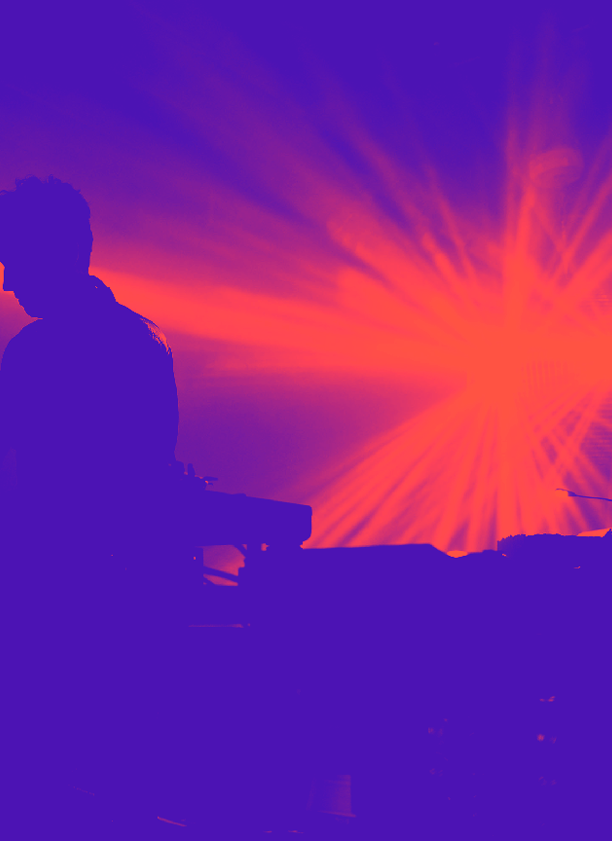
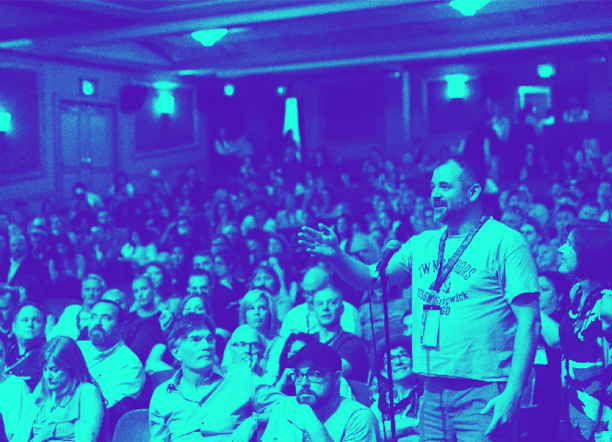





SXSW Create
Creative & Revolutionary
New Technologies at Work
SXSW Job Market
A Meeting Spot for
Innovative Thinkers &
Equally Innovative Companies
The SXSW Job Market, presented by the Publicis Groupe, is free to the public with Guest Pass wristbands. The new Job Market Stage will host live competitions for in-demand jobs and a SXSW 2017 Platinum Badge!
Job Market Exhibitor Highlights
ACXIOM
Capgemini
City of Scottsdale
Comcast
Cox Enterprises
Dell
Greater Houston Partnership
Hilti
Homeaway
Iowa Economic Development Authority
Jobs2Careers
Lafayette Economic Development
Lincoln Partnership for Economic Development
L’Oreal USA
Lowe’s Home Improvement
Macmillan Learning
Metro Atlanta Chamber
Publicis Groupe
Richardson Economic Development Partnership
RPA Advertising
Saatchi & Saatchi LA
Scripps Networks Interactive
State Farm
Team One
Texas Advanced Computing Center
Toyota Connected
Trend Micro
Unilever
Unnanu
U.S. Office of Personnel Management
Victoria’s Secret
March 10–12, 2017 | Palmer Events Center
March 11–12, 2017 | Austin Convention Center, Exhibit Hall 1
In its fifth year, SXSW Create returns to the Palmer Events Center with more hardware fun and hands-on excitement for all ages and imaginations. Come by to experiment and learn about everything from 3D printing, drones, biohacking and all the other disruptive solutions that are shaping the future.
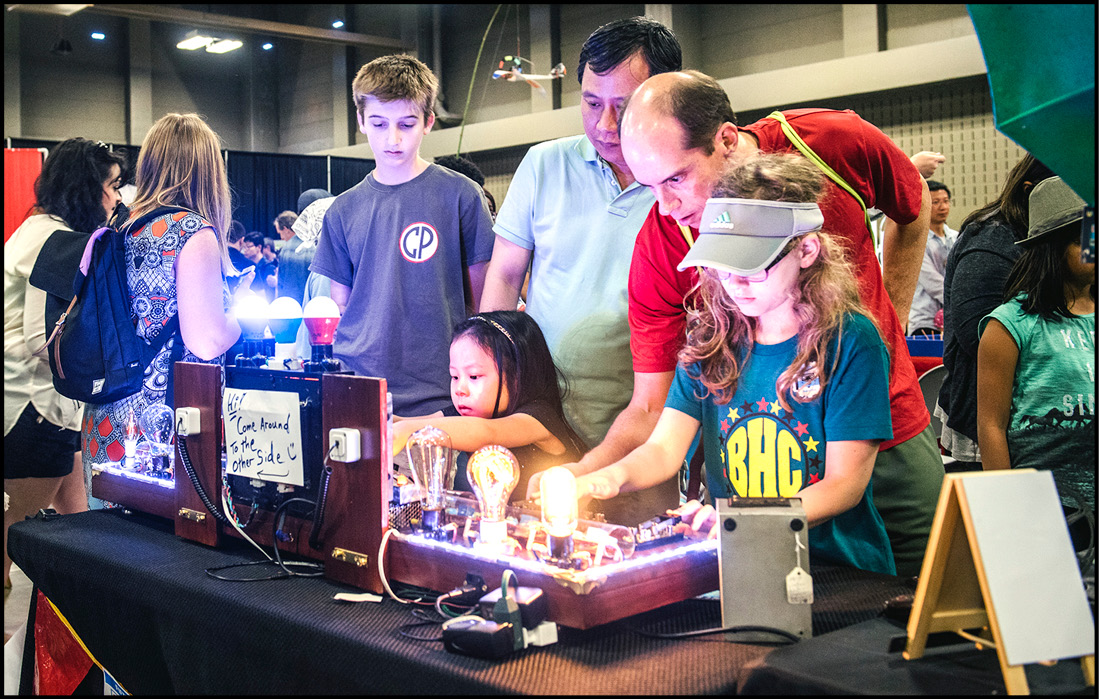
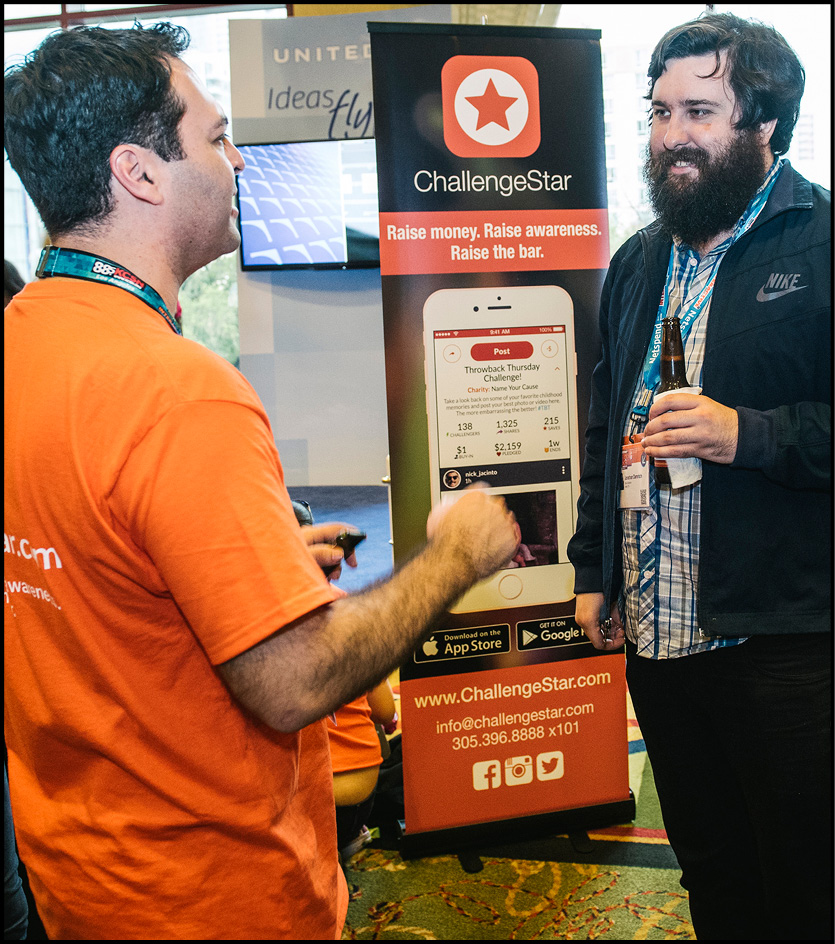
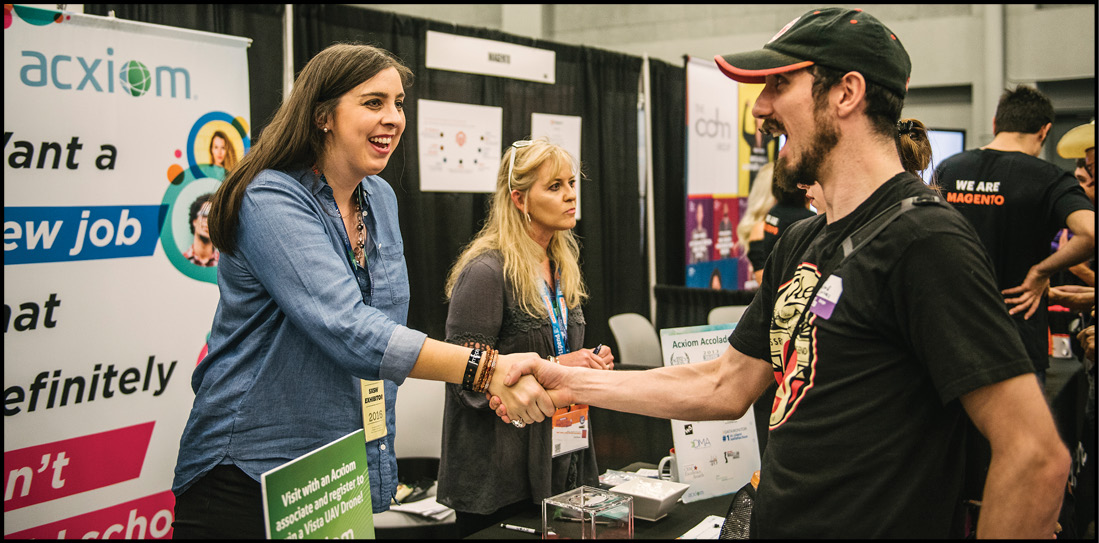



Photo by Steven Snow
Photo by Merrick Ales
Photo by Merrick Ales
March 12–15, 2017 | Austin Convention Center, Exhibit Halls 2–4
SXSW Trade Show
Connect With & Discover Creative
Businesses From Around the World
The four-day SXSW Trade Show highlights integrations & overlaps between SXSW’s converging industries & hosts a diverse range of forward-thinking exhibitors – from promising startups to established industry leaders.
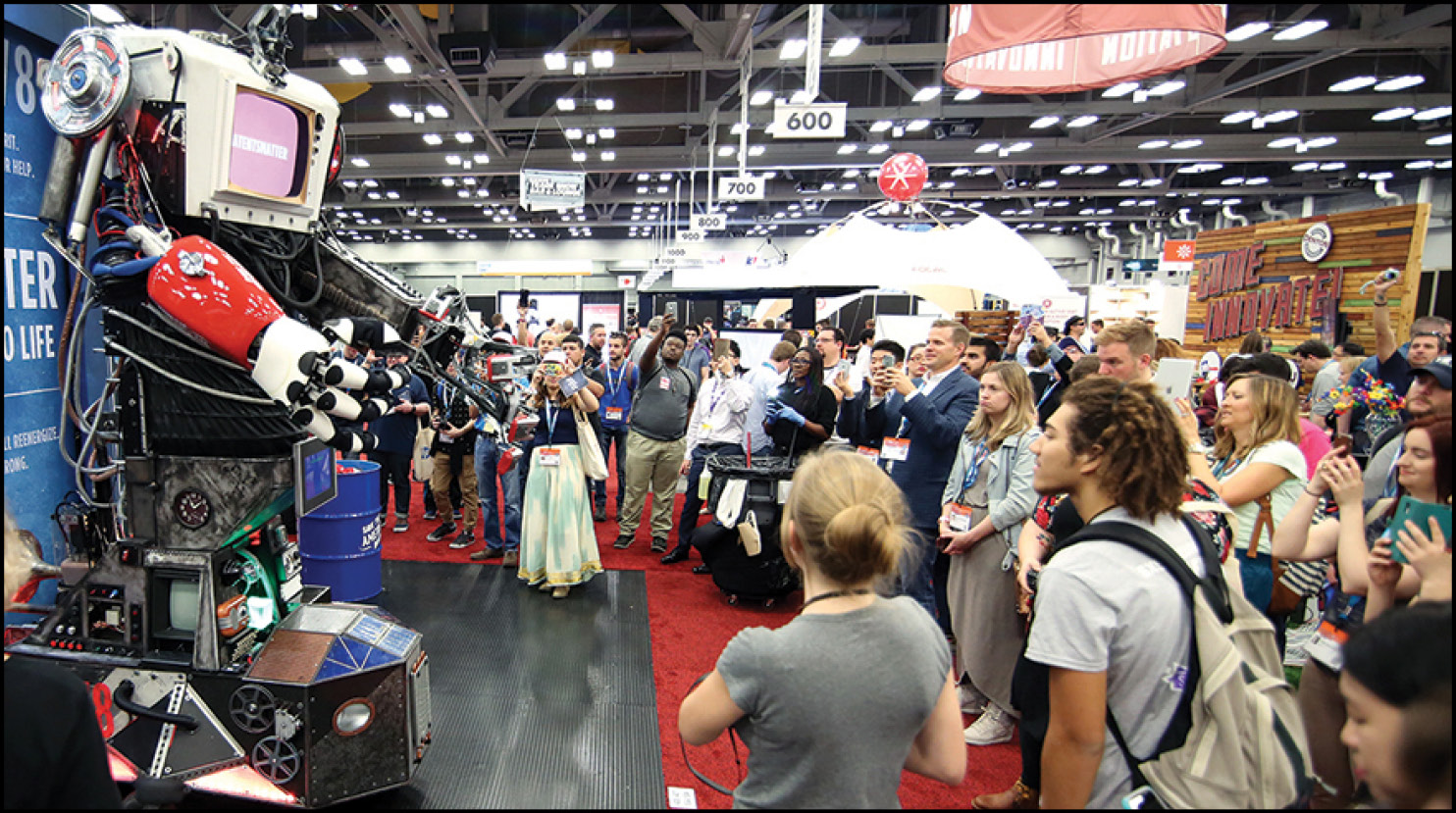
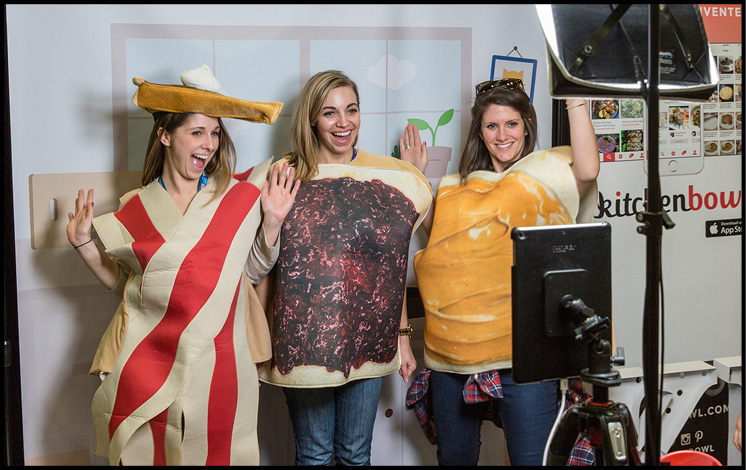
Trade Show Pitch Stage
Each hour the Pitch Stage will feature an exciting high-powered showcase of exhibitors grouped by theme. Stop by for exciting demos, fun giveaways and networking after the pitches.
Next Stage
Next Stage features presentations and performances that span the realms of Interactive, Film, and Music. These sessions showcase the inventive, emerging talent participating at SXSW, including cross-industry panels with diverse speakers and intimate showcases from official SXSW artists.
Exhibitor Meet & Greets
Meet your favorite exhibitors one-on-one. Every hour throughout the Trade Show, participating exhibitors will host special meet-and-greet sessions at their stands. Stop by the featured stand for food, drinks and networking.
Come & Capture
With a focus on the evolving landscape of digital filmmaking, Come & Capture is a platform for manufacturers, filmmakers, and app developers to highlight their new tools for capturing and creating content. Attendees can view demonstrations and try out these technologies firsthand.
Future of Food
Technologies are transforming the business of food. The Future of Food showcases the companies that are reinventing this system.
Health & MedTech
Pavilion NEW LOCATION!
Now part of the Trade Show, the Health & MedTech Pavilion is the place to interact with and learn about inventive technologies changing the face of health and healthcare.
Meetup Pavilion
Come by the Meet Up Pavilion to connect with like-minded SXSW registrants, professionals and businesses. Learn about a new industry and further your career during these casual networking events.
NEW! The Sport Spot
As a new section of the Trade Show, the Sport Spot allows attendees to explore culture impact and the human experience. Come tackle the future of sports in all its forms and embrace technology and innovation in the process.
Startup Central
Startup Central spotlights the best and brightest up-and-coming businesses from all industries and sectors, including mobile apps, 3D printing, SaaS, FinTech and more.
NEW! Style Hub
Focusing on wearable technologies, fashion apps, the future of retail and innovative design, the Style Hub centers on the intersection between fashion and technology.
Startup Dailies
Located adjacent to Startup Central, Startup Dailies are one-day booth slots featuring cutting edge startups showcasing their products and services
VR/AR Experience NEW LOCATION!
The VR/AR Experience is a hands-on area of the Trade Show that lets attendees test out a selection of the latest and greatest in virtual and augmented reality technologies.
International Pavilion
Network on a global scale and experience the next level of innovation and creativity from around the world. At the International Pavilion, delegates from six continents will come together to discuss promising trends of the future.
NEW! Trade Show Bar & Lounge
Take a break from all the excitement during SXSW to grab a beverage, relax and make a few new friends.
Photo by Randy & Jackie Smith
Photo by Cal Holman
Trade Show Exhibitor Highlights
Achilles
Agora.io
American Library Association
American University/University College
ASA Digital
BOARD International
Bonza Interactive Group
Canadian Independent Music Association
Candy Lab, Inc.
Capital One
Catalyst Product Design & Development
Chariot Solutions
Christian Science Publishing Company
City of Albuquerque
CompTIA
Cortina Productions
DataMesh Technology Co. Ltd.
Delivra
Delmar Products, Inc /
Bullet Cable
Denton Convention & Visitors Bureau
Earlove
EBQuickstart
Elektron Music Machines Inc
Esurance
Eventuosity
EX2 Solutions
Film Florida/City of
Miami Beach
Flex
Focal Upright
GetPayroll
Giga Entertainment Media
Greater Richmond Partnership
Holonis
Hongo Projects, Inc.
IEEE
Intraboom
Ipinyou
iQ Media
Isovera
KidsPlates INC.
Killer Infographics
Knowbility
KUKA Systems North America
Lockheed Martin
M3D
MagRabbit Global
Software Services
Maxon
MAXON
Mazda
McDonald’s
MEIE
MeQ Inc | Even
ModSquad
Monkey Challenges
Monster Energy
NASA
NowSourcing
Olloclip
Omega Broadcast Group
OrigAudio
Paper and Packaging Board
Parco Co., LTD
Paul Reed Smith Guitars
Penn Center for Innovation
Pfizer
PicoBrew
Planview
Powerhouse Animation Studios
Premium Beat / Shutterstock
Pro8mm
ReviewTrackers
Roar For Good
SAG/AFTRA
Sennheiser
SevenTablets
Shiftorg
ShipStation
Shure Inc
Skytracks.io
Social Imprints
Soda Software Labs Ltd
Sonicbids
SparkFun Electronics
Spartan Innovations
SpiderOak
Springer Nature
Sprinklr
Stanley Black & Decker
Stereotheque Inc
Supernaut
Symphonic Distribution
TailoredMail
Taylor Guitars
Texas A&M University
Texas Film Commission
Texas Music Office
The Home Depot
The Human Solution
The Software Guild
The Woodlands CVB
Ticket Galaxy
TrackMaven
Tulsa Office of
Film Music Arts & Culture
U.S. Department of Transportation
Velodyne LiDAR
VIDEO Clipper
VideoHelper
VideoStitch
Vydia Inc
Wake County Economic Development
WIREWAX
Wolfram Research
xocial
Zero Time Off
International Pavilion Exhibitors
4U Travel
BEEVC Electronic Systems, LDA
Beijing ZMWC Management Consulting Ltd., Co.
Business France
Capital Numbers Infotech Pvt Ltd
Daegu Digital Industry Promotion Agency
Deloitte Touche Tohmatsu LLC
Digital Content Association of Japan
Enterprise Summit BV
ExportAR
Fujitsu Limited
GCA Entertainment
Greater Zurich Area
Hakuhodo
HAKUHODO I-Studio Inc
ICEX - Trade
Commission of Spain
IMEXSA
Indonesian Agency for Creative Economy
inMediaStudio
Comunicación SL.
iTexico Mobile
Keigan inc
Koelnmesse GmbH
Kokuyo
MIDAS
Ontario Canada Delegation
Shiseido Co Ltd
Startups.be
ThisWay global
Trade Promotion Section of the Consulate
Wacom
Widevantage
Xooms
YSK Media
MedTech Pavilion Exhibitors
Allscripts
athenahealth
Blue Goji
Counsyl Inc
Enovative Technologies
EverlyWell
Humetrix
Loft LLC
Otto Trading Inc
Pieces Technologies
Pokitdok
Redox
Sharing America’s Marrow
Syntouch
Tellus
Whil
Startup Central Exhibitors
Chatscene
Executive Approach
Play It Solutions
StratIS
Threshold 360
Yume Cloud
The University of Virginia i.Lab
VR/AR Experience Exhibitors
AMD
Aurasma
DataMesh Technologies Co. Ltd.
InstaVR
Envrmnt By Verizon Labs VR Cruise
Featured Trade Show Exhibitors
American Chemical Society
Enterprise Ireland
Final Thoughts
NCC Digital Medi
Payoneer


Exhibitions
Spotlights
Intimate, Reception-Style Exhibitions
for a Highly Focused Experience
Tech Startup Spotlight
An engaging reception with complimentary drinks, the Tech Startup Spotlight provides two unique opportunities to get demos and meet some of the brightest startups today.
Music Startup Spotlight
SXSW Music Startup Spotlight focuses on new, innovative music companies. The Spotlight coincides with the popular Music Startup Village programming, where VCs, entrepreneurs and tech-minded music industry meet and mingle.
March 10, 13 & 14, 2017 | Hilton Hotel, 4th Floor










SXSW Gaming Expo
A Combination of All Things Geek, Nerd & Gaming
Drawing in developers, manufacturers, and fans from all facets of the community, the Gaming Expo is the epicenter of gaming culture at SXSW.
March 16–18, 2017 | Austin Convention Center, Exhibit Halls 1–2
Gaming Exhibitor Highlights
7th Dimension Anime
Toys & Gaming
9th Level Games
Anime Crew, LLC
Arcknight
Audio-Technica
BlankMediaGames
Blue Goji
Candy Lab Inc
Capital Numbers Infotech Pvt Ltd
Coatsink Software Ltd
CPU Magazine
Dendama Inc
Devolver Digital
Digipen institute of technology
ElectricHat Games
Emerald Tavern Games & Cafe
EVP Studios
Gambitious Digital Entertainment
Game Over Videogames
IEP
In My Parents
Basement, Inc
Lay Waste Games
Level Up Studios
Liquidsky
Logitech
Look Cuter
Lunar Experiences
Maxon
MAXON
MERJ Media
Mystic Revolution Comics
Nintendo of America Inc
NYU Tandon School of Engineering
Sanshee
Scrub Club Collective
Seus Corp
Shark robot
Skybound Entertainment
TeeTurtle
TG Comics 512
The Human Solution
Uncharted Territory
VarDragons
GEEK Stage
The Geek Stage is the heart and soul of the SXSW Gaming experience and features content from the world of video games, comics, board games, animation, toys and more.
Esports Tournament Stage
The Esports Tournament Stage features the latest trending esports titles and their greatest competitors. Whether you’re new to the scene or a fan of the highest-level competitive play, this stage will keep you entertained with the best non-stop action.
Tabletop Experience
Whether you’re a tabletop fanatic or just looking for a new game, the Tabletop Experience will satisfy your need to conquer the board. Find the latest arrivals, as well as long-time classics, with our exclusive library of unique games.
Indie Corner
The Indie Corner features the best indie games in the world competing for the crowd-voted SXSW Gamer’s Voice award in the SXSW Gaming Awards.
Open Play Areas
The Open Play Areas, which are comprised of the PC Arena, Arcade Bunker, and Mobile Gaming Dome, are home to both the latest and most classic games of all time. Whether you’re a fan or a novice of PC gaming, mobile tablets and arcade games, don’t miss out on all the additional content found in these areas.
Student Showcase
Students can now have their best projects featured in the Student Showcase on the SXSW Gaming Expo floor. Check out what the next generation of game developers are tapping into!
Pitch Competition
Are you a game developer looking to take your project to the next level? Hone your pitch and get feedback from leading industry experts during the inaugural SXSW Gaming Pitch Competition!

Photo by Nicole Burton
SXSW MarketPLace Exhibitor Highlights
ARO & Passport Vintage
be hippy
Bangarang Co.
Drama Free Llama
The Distillery &
Piecology Vintage
DungeonForward
The Early Hours
Elevé Cosmetics
Eythink
Golden Bones
Hatbox
Hawkins Bucklew Handcrafted Jewelry Designs
Kiki Nass
Lanona Shoe Company
Limbo Jewelry
Lymbo Clothing
Motley Collections
Next Level Apparel
Old Blood Jewelry &
Rainbow Feather
Pride Socks
Purse & Clutch
Riddle Oil
Rifle & Radford
Smoke x Mirrors
Sock Club
Strive Green
Texas Humor
Tomboyx
March 16–18, 2017 | Austin Convention Center, Exhibit Hall 4
New! SXSW Marketplace
Clothing, Jewelry, Accessories, Oh My!

March 16–18, 2017 | Austin Convention Center, Exhibit Hall 4
Flatstock 59
Showcasing Today’s
Talented Poster Artists
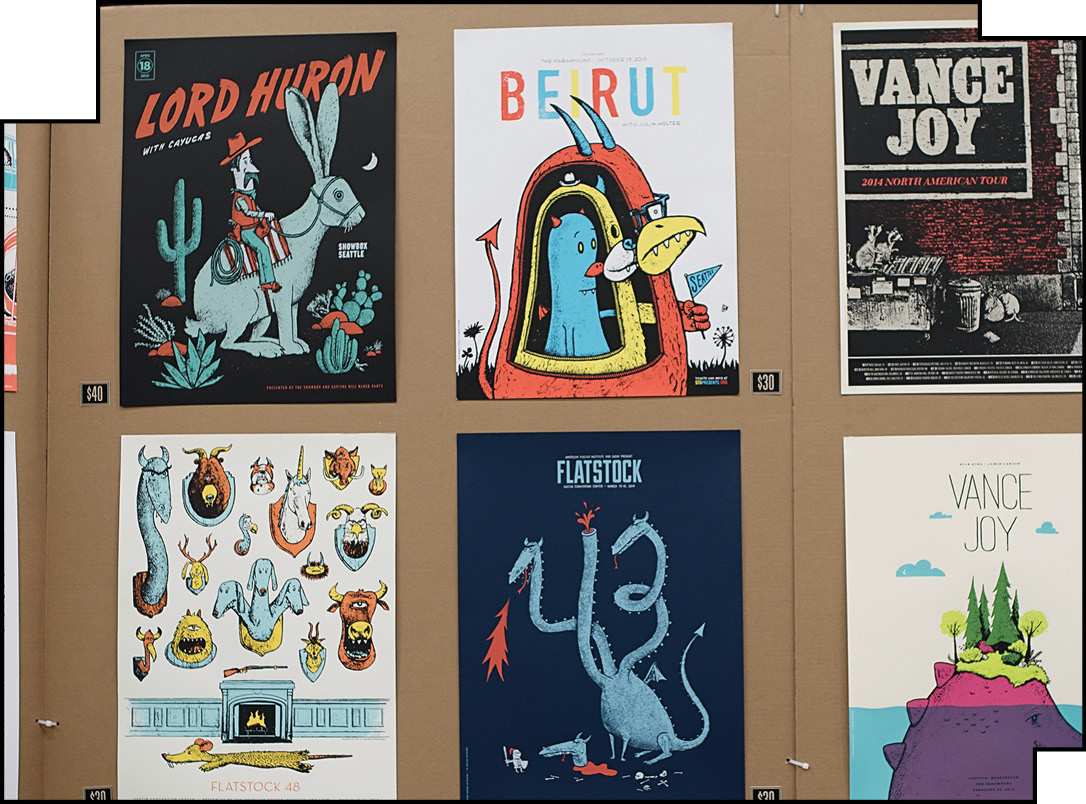
Presented by American Poster Institute (API), Flatstock 59 displays works of the world’s top gig poster artists. Featuring posters of various styles and techniques for sale by the same artists who created them.
Flatstock Stage
Enjoy second play sets from official showcasing artists curated by music blogs, local nonprofits, gear companies and more. It’s open to the public and a perfect spot to unwind in between poster perusing and
check out up-and-coming artists.

Photo by Steven Snow
Southbites
The Best Roving Restaurants
From Texas & Across the U.S.
The 5th annual SouthBites® Trailer Park, sponsored by Avocados from Mexico, is rooted in celebration of Austin’s iconic food trailer culture and celebrates good food everywhere. Stop by to devour scrumptious fare from returning SouthBites favorites as well as rising names in the ever-expanding food truck industry.
March 10–18, 2017 | Across from the Austin Convention Center on Driskill St. | 11AM-12AM Daily
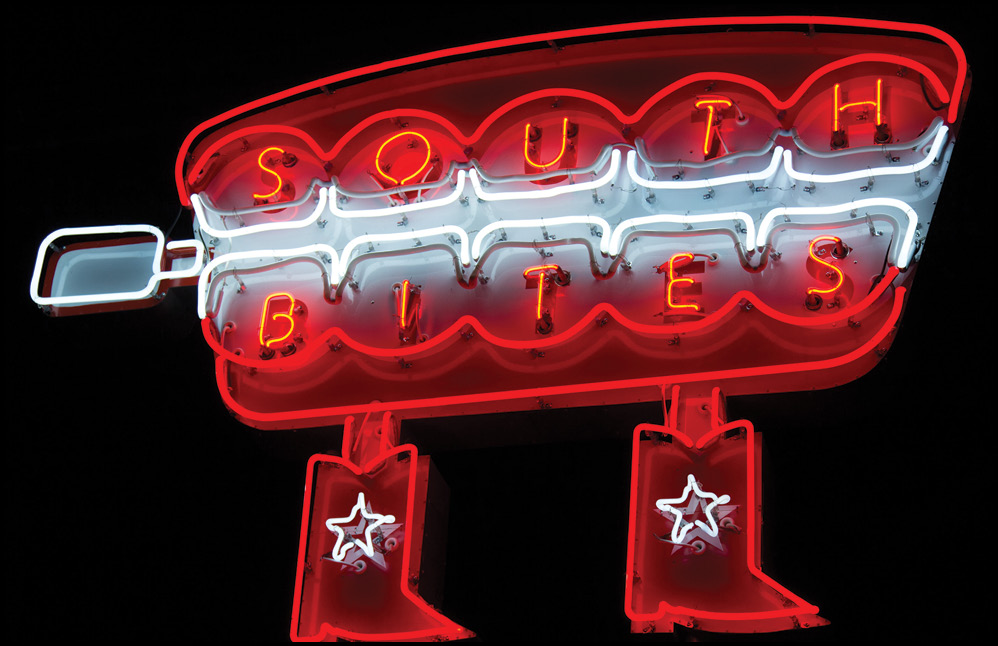

Photo by Steven Snow
The SXSW Marketplace will have local Austin boutiques as well as select national and global brands to create a unique shopping experience right in the center of SXSW.
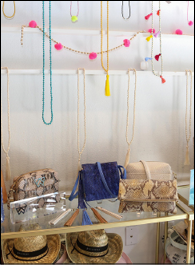
Photo by Shelley Neuman
Exhibitions









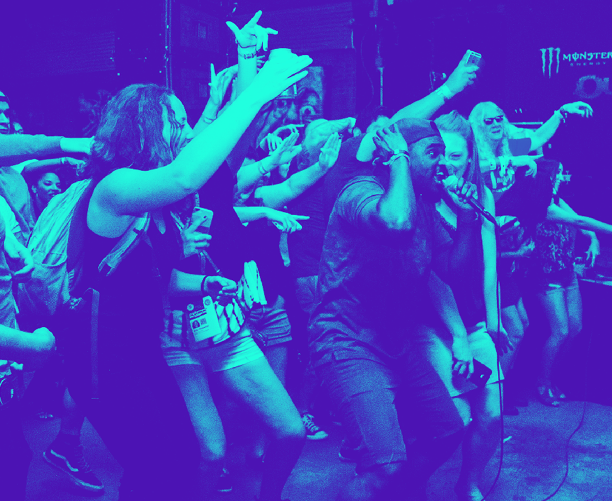
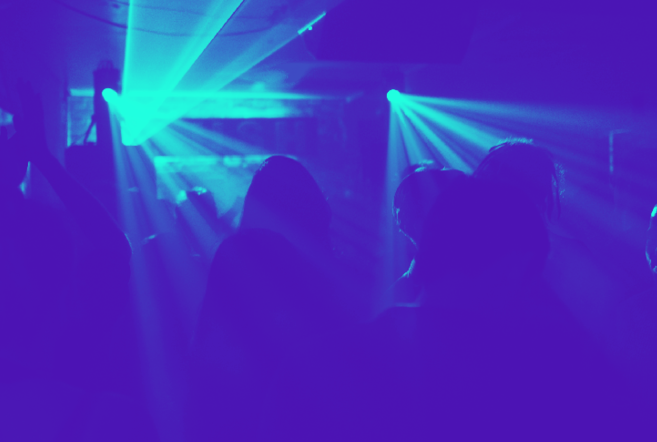

SXSW Festival Shuttles | sxsw.com/shuttles
The SXSW Festival Shuttle is our free circulating shuttle that runs between the Austin Convention Center and most festival venues. Catch the SXSW Festival Shuttle outside the Convention Center on Trinity Street during conference hours every 10 minutes. This one-route system helps get you within walking distance of even the most remote festival venues.
Track Festival Shuttles In Real Time: shuttles.sxsw.com
Hotel Transpo | sxsw.com/hotels/transportation
SXSW works with a variety of transportation services to provide a comprehensive list of options to get you to and from your hotel and SXSW events.
Airport Transportation | supershuttle.com/sxsw
SuperShuttle offers shared-ride van service and executive car service for SXSW registrants. Visit the SuperShuttle website to reserve your airport charter.
CapMetro, Austin’s public transit, offers the Airport Flyer. With stops close to the Austin Convention Center and many downtown hotels, it’s an affordable and reliable way to get downtown from the Austin-Bergstrom International Airport.
Scheduled Ride Services & Group Transportation | sxsw.com/getting-around
If you’re part of a group, large or small, and staying outside the downtown area, look into scheduling a charter service for you and your team before arriving. Services like SuperShuttle and International Chauffeured Service will work with your organization to make sure your team can catch all the valuable programming and attend all the exciting SXSW events.
CapMetro Public Transportation | capmetro.org
CapMetro is Austin’s regional public transportation provider. It provides residents, commuters and visitors the best possible transit options. Use CapMetro to take advantage of all the extraordinary things SXSW has to offer.
With the CapMetro App, your smartphone becomes your ticket. Use the app for schedules, maps and real-time arrival information. Download the CapMetro App: capmetro.org/app
B-cycles | austin.bcycle.com
When your feet need a break, or walking just isn’t your thing, check out B-cycle, Austin’s bike-share system. Bike-share stations are conveniently placed throughout downtown near all the places you want to be. Austin B-cycle is another fast, easy way to get around during SXSW, day or night. Day access passes are available at each B-station; all you need is a credit card! Bikes adjust to fit individual sizes and come equipped with baskets, lights, and gears.
Pedicabs
Pedicabs operate throughout Austin day and night, mostly in the Central Business District, Rainey St, and East 6th St areas. Pedicab drivers are licensed and regulated by the City of Austin Ground Transportation Department and usually work for tips or a charge-per-block fare. Look for pedicab staging areas around downtown, or just flag one down!
Car Rental | enterprise.com
Enterprise, the Preferred Car Rental Company of SXSW 2017, offers SXSW Registrants competitive rates with convenient locations in the Austin area. Use the rental code: L65SXSW (PIN: SXS) when you book online or by phone (800-261- 7331). (Discount valid for rentals with Enterprise or its sister company National rentals).
With a Variety of Services to Fit Any Budget or Needs, Getting Around Just Got Easier
SXSW delivers dynamic programming through a network of venues, the main hub being the Austin Convention Center. Most of the other official SXSW venues are accessible by foot, bicycle, pedicab or shuttle.
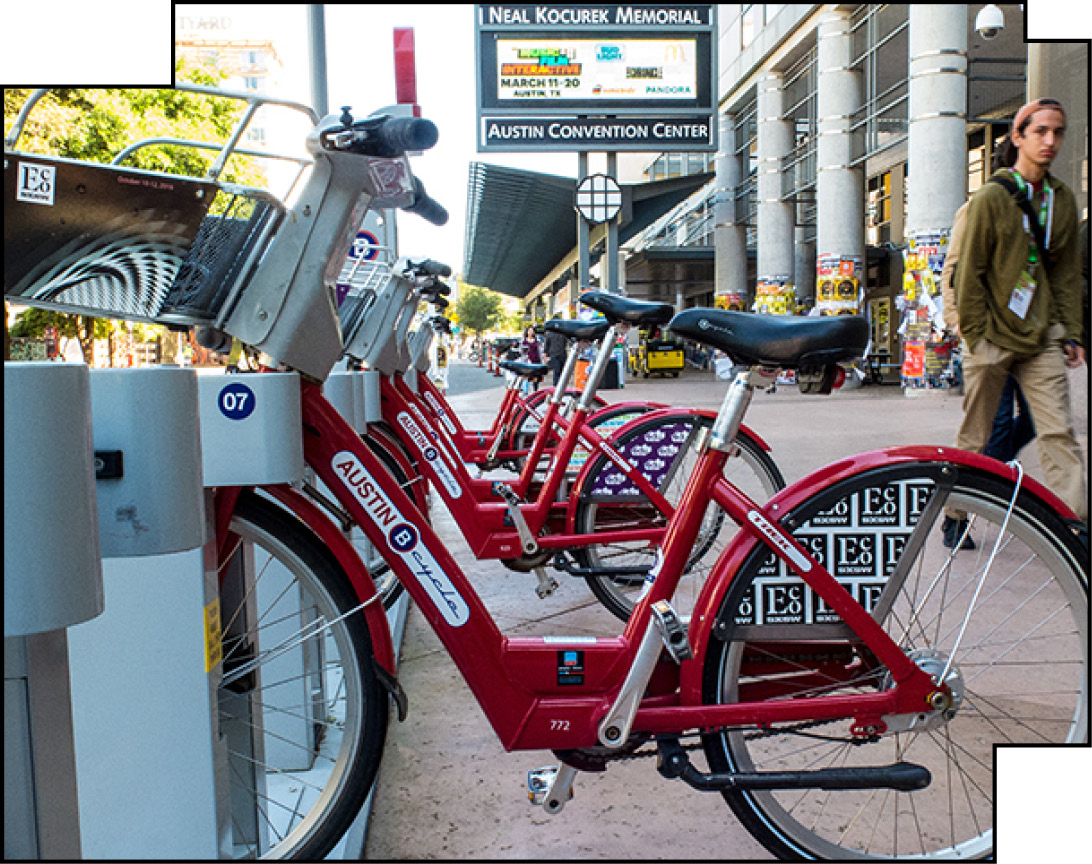
Photo by Tim Strauss
SXSW City At A Glance
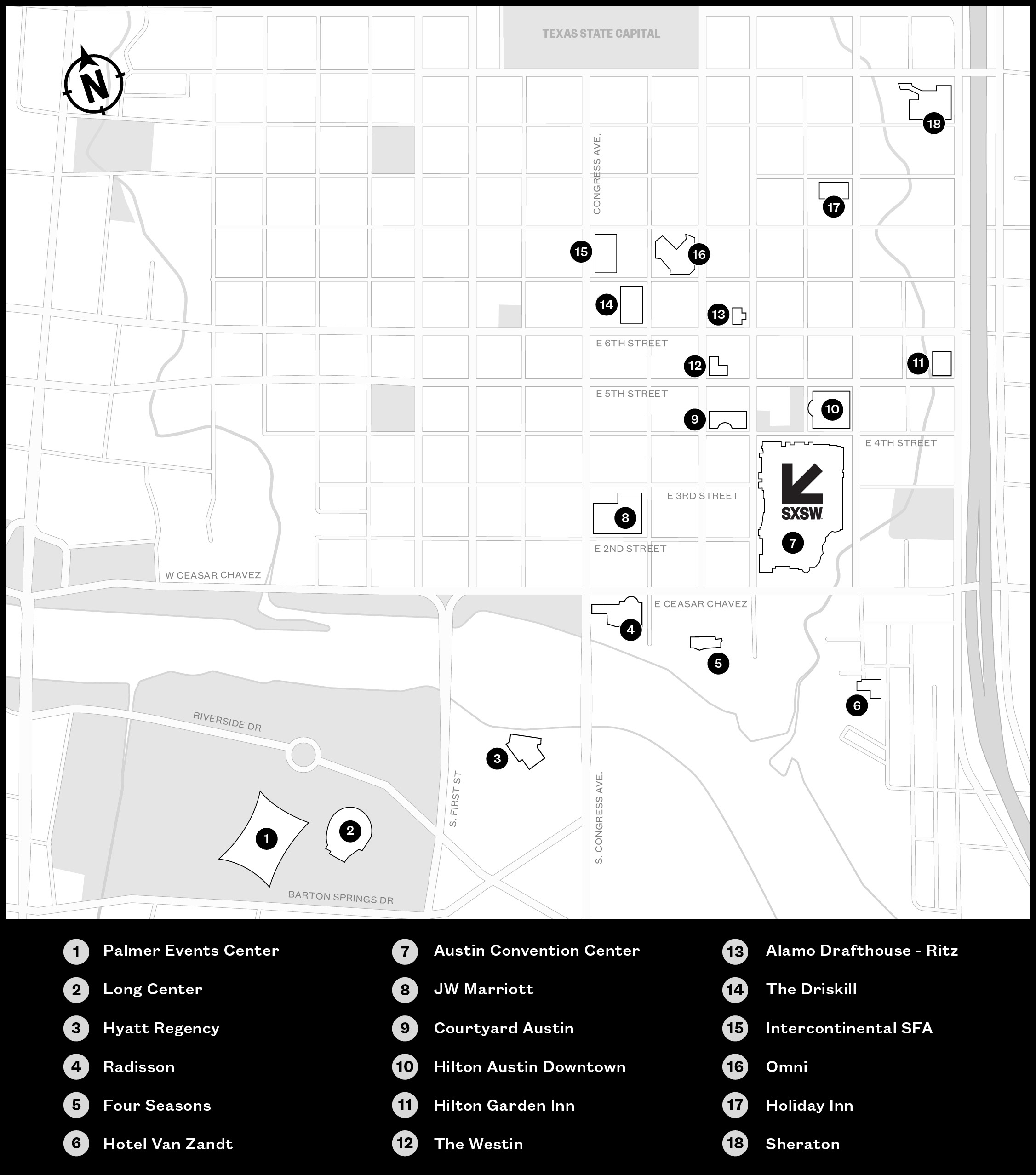
SXSW GO® | sxsw.com/mobile
SXSW GO® is the official mobile app for getting the most out of your SXSW 2017 experience. Browse the lineup and create your personal schedule, then login to sync it with your other devices so your info will always be up-to-date!
Features include:
Discover: Visually explore SXSW, watch Film trailers and listen to Showcasing artists.
Schedule: View sessions by day and create custom filters to find exactly what you are looking for.
Networking: Link your badge to access your SXSW Social account, then network with thousands of other attendees.
My Favorites: Build your personal schedule and sync with your online account or between devices.
Exhibitors: Browse and find Trade Show exhibitors on an interactive map.
Locations: Find venues by list or map, get directions, browse internal floor plans.
Around Me: See what venues are around you, as well as which of your friends are nearby.
SXSW SOCIAL | social.sxsw.com
SXSW Social is the official online registrant directory of SXSW. Use it to introduce yourself to other attendees before you ever set foot in Austin. The directory and messaging features can help you start planning for SXSW 2017 right away.
Find your colleagues, clients, partners or new connections among SXSW registrants by using the SXSW Social directory. You can search by name, position, company and more. When you find people you are interested in meeting, send an introduction or “star” them to mark them as a favorite for later. Put together your profile with a bio, tag yourself with interests and use “My Links” to let people connect with your Facebook, Twitter, LinkedIn accounts and more.
Using SXSW Social, you can also upload a badge photo, make or change hotel reservations and update contact information. New registrants are added every day, so once you have registered to attend SXSW 2017, don’t forget to sign in to SXSW Social often to discover new business connections as you plan to make the most of your SXSW experience!
SCHEDULES ARE LIVE! | schedule.sxsw.com
Create your SXSW schedule now! You can view online lists of current 2017 programming. With more panels, showcases, screenings, keynotes and parties than ever, our schedule will help you navigate your way through the fantastic programming SXSW 2017 has to offer.
You can build your personal schedule by starring events you are most interested in attending. This personal schedule can be synched to the mobile app, so you’ll always know where you want to go. Creating your schedule will also get you personalized recommendations via email and the SXSW GO® app.
SXSW LIVE STREAM | sxsw.com/live
Can’t make it to SXSW this year? You can watch sessions, showcases and more live via the SXSW website. For a full schedule of events that you can watch from anywhere in the world, visit sxsw.com/live.
SXSW.COM
SXSW.com is the best source for the latest SXSW news. Interviews with filmmakers, bands, speakers and film trailers are all available right now at on the official website of SXSW.
WIFI ACCESS
SXSW provides free WiFi at many of its events. Look for the SSID SXSW2017 to connect.



Tech Tools
Travel & Transportation
Venue Map
Let Us Help You Network,
Find Your Way & Stay
Connected During SXSW 2017
SXSWORLD | February 2017 | SXSW.com

A Look Back

President Barack Obama
January 20, 2009 – January 20, 2017
SOUTH BY SOUTH LAWN:
A WHITE HOUSE FESTIVAL
OF IDEAS, ART, & ACTION
President Barack Obama joined Dr. Katharine Hayhoe and Leonardo DiCaprio for a discussion on climate change during South by South Lawn, held at the White House on October 3, 2016.


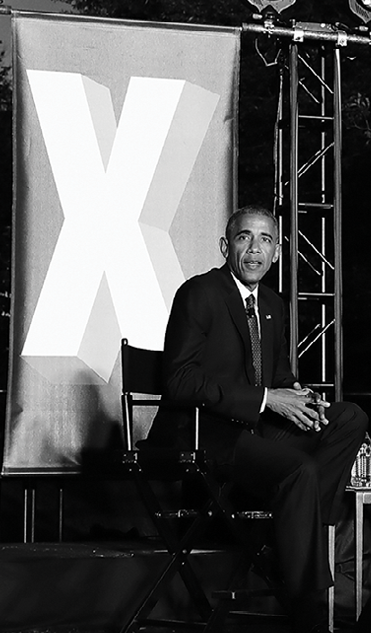

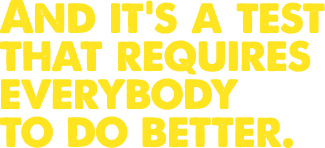

Photo by Neilson Bernard/Getty Images



